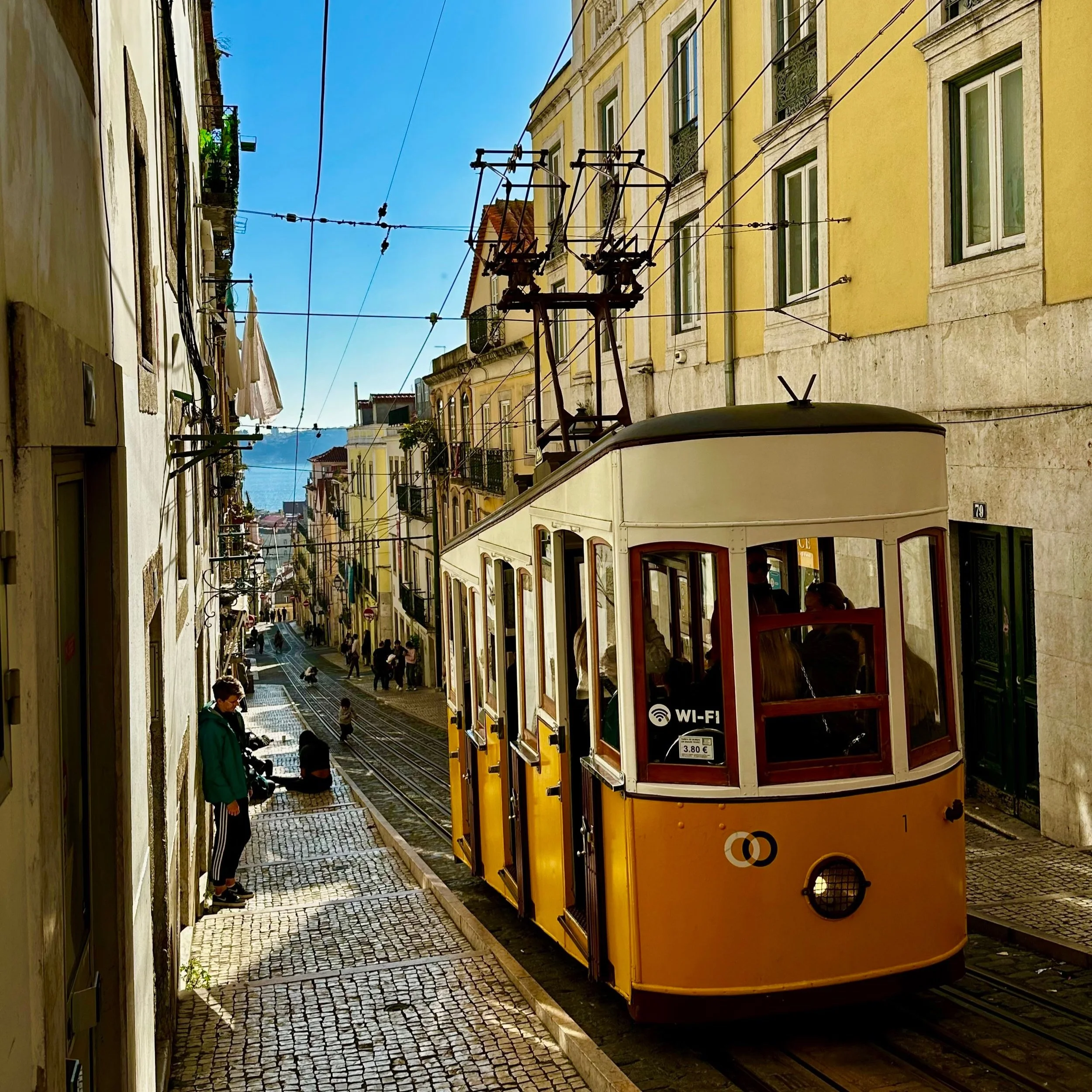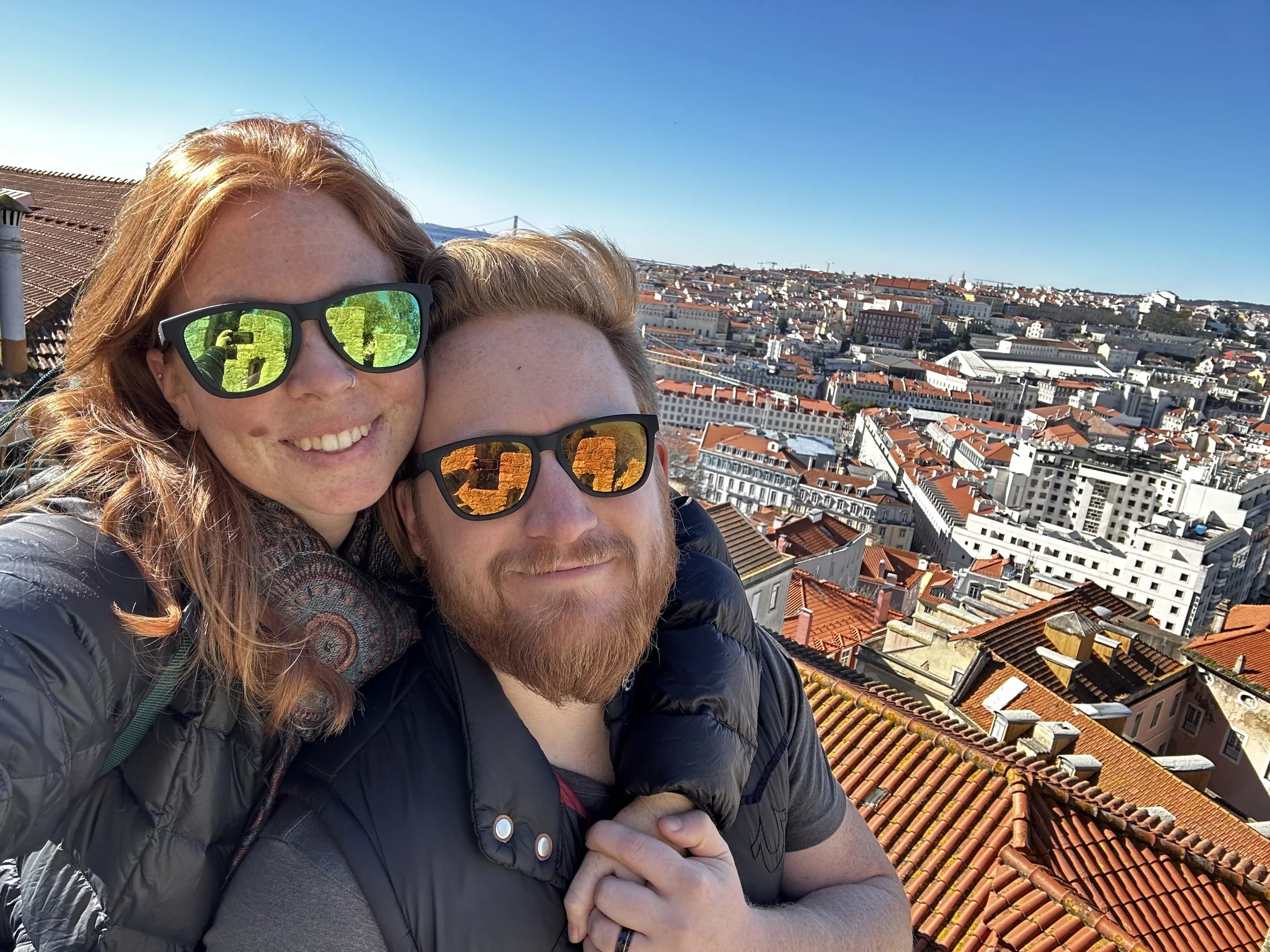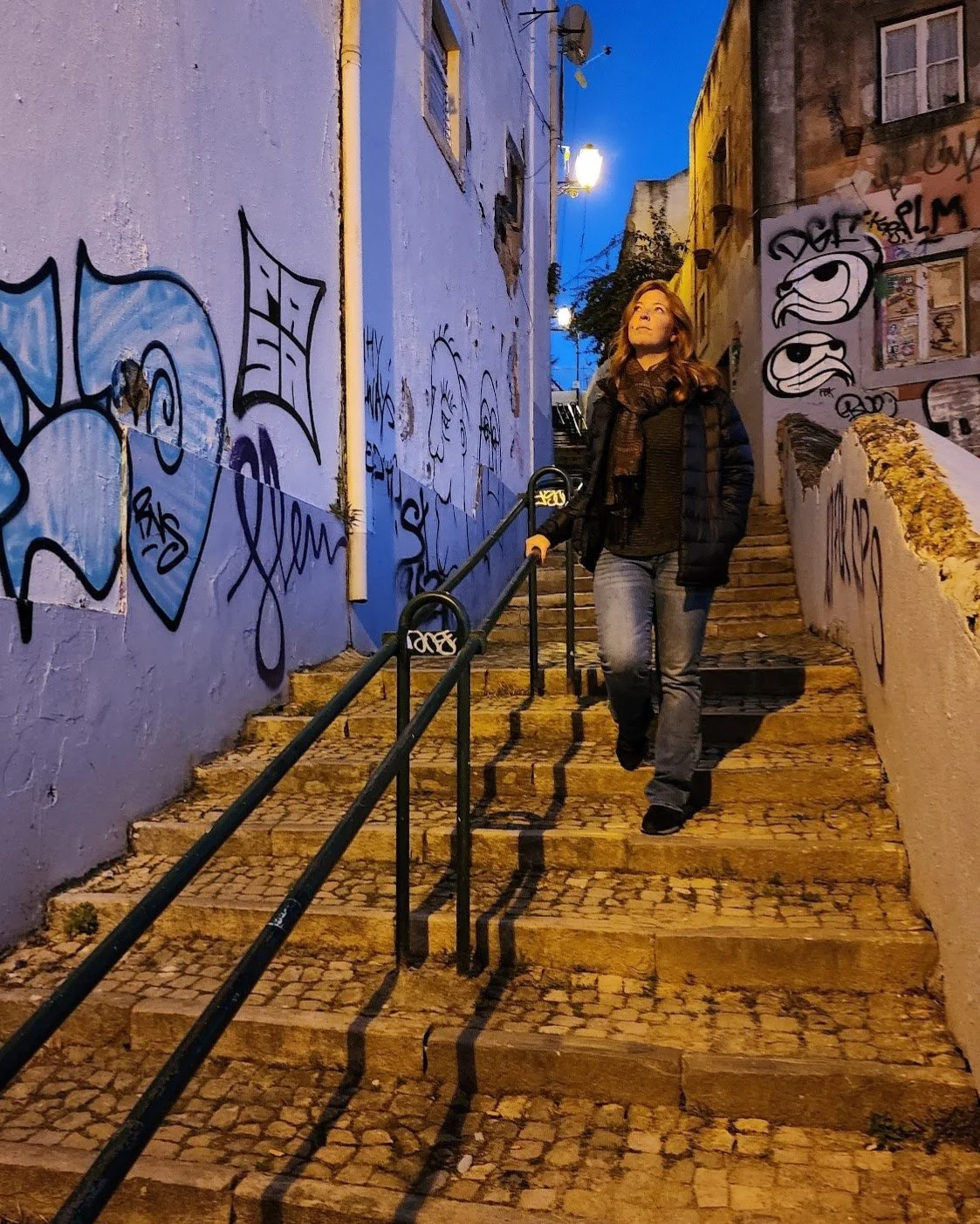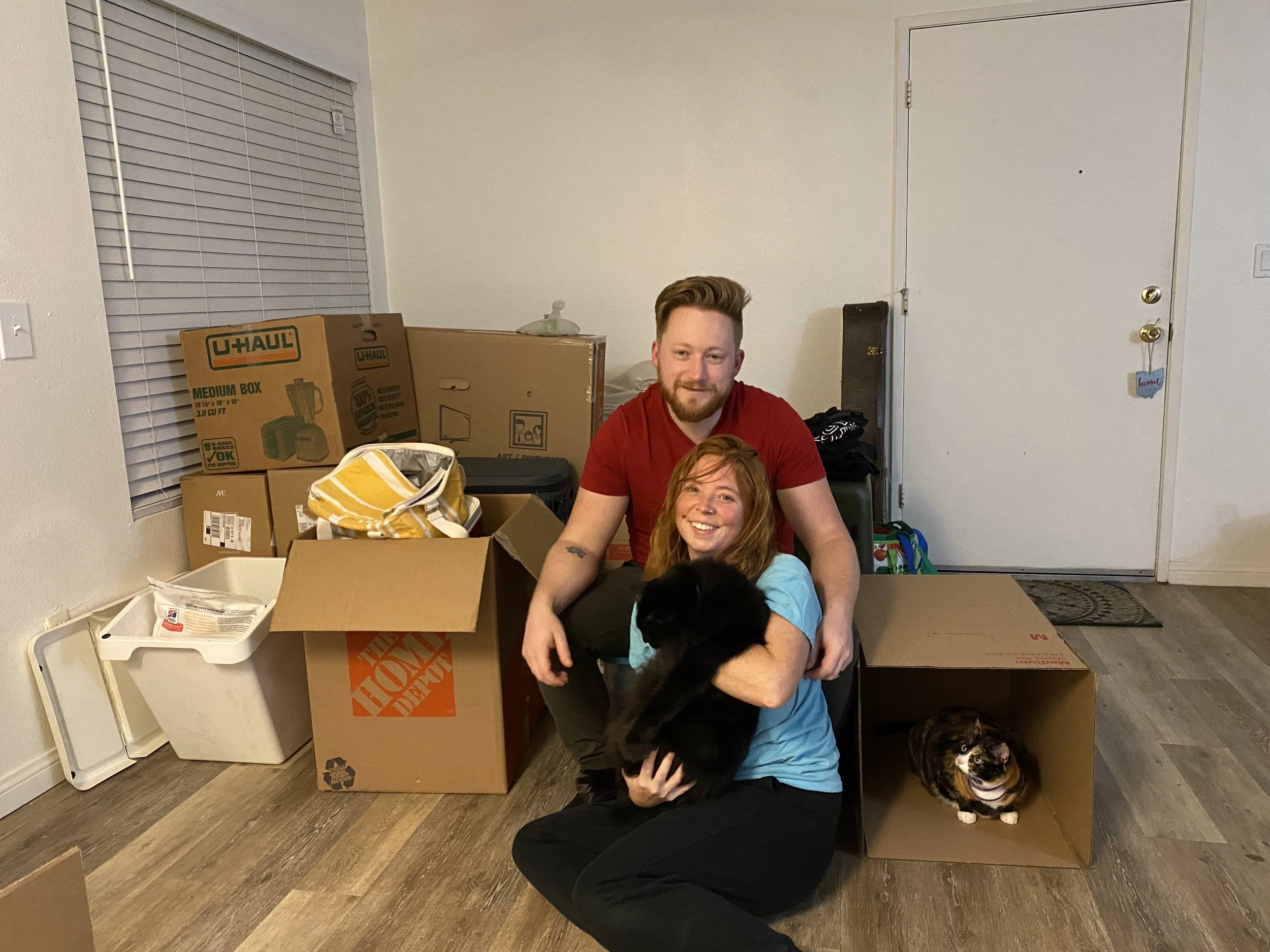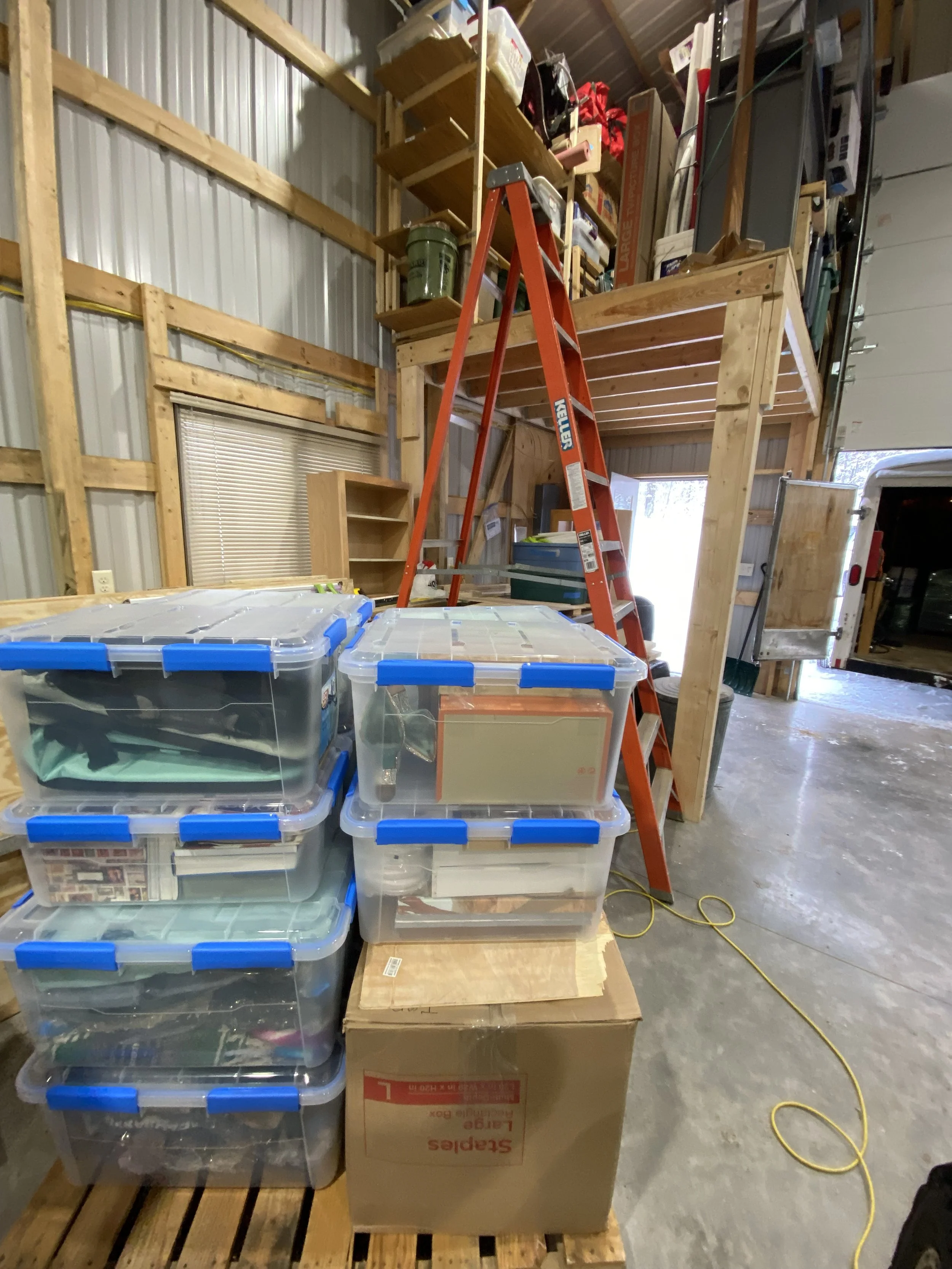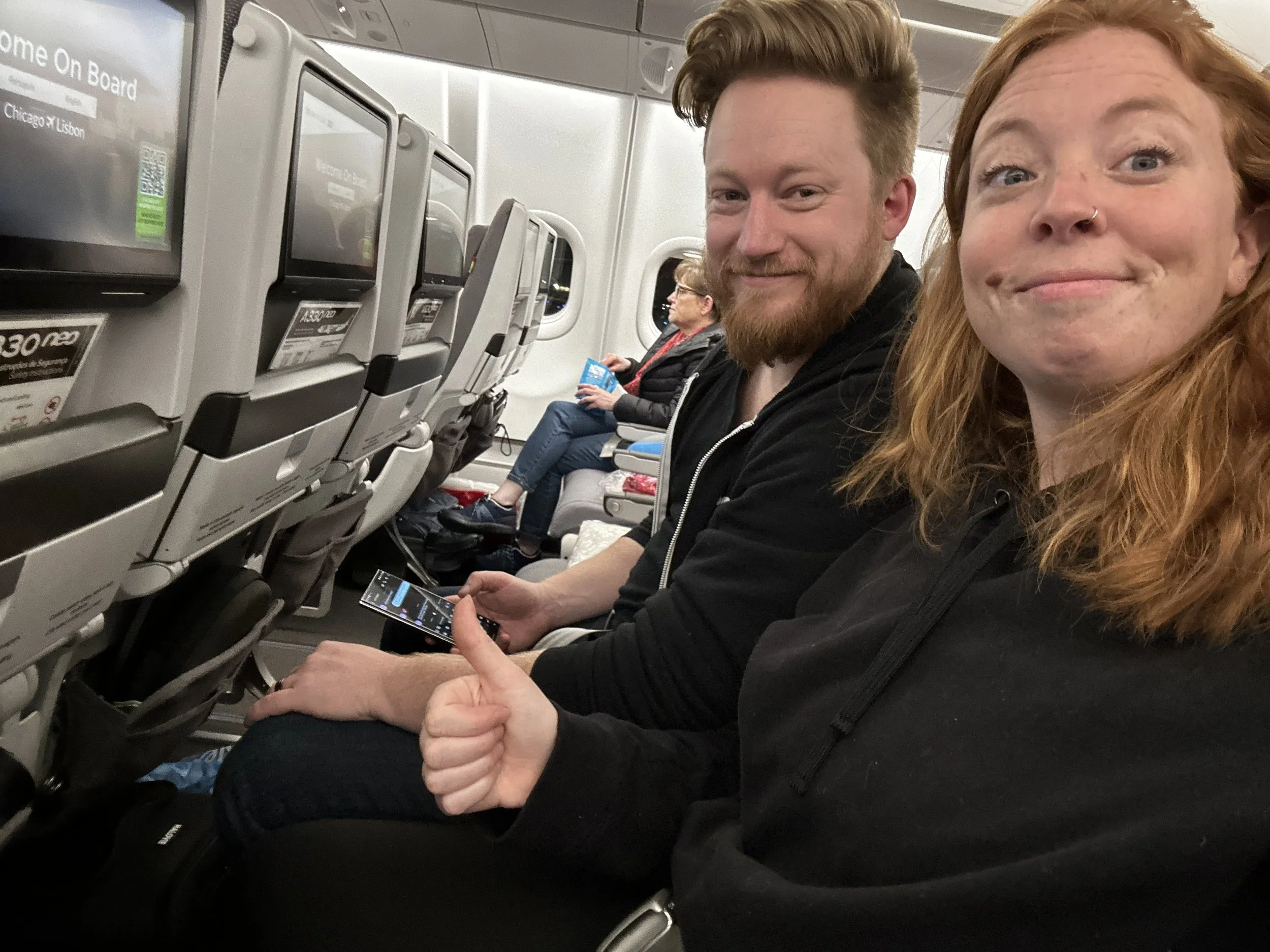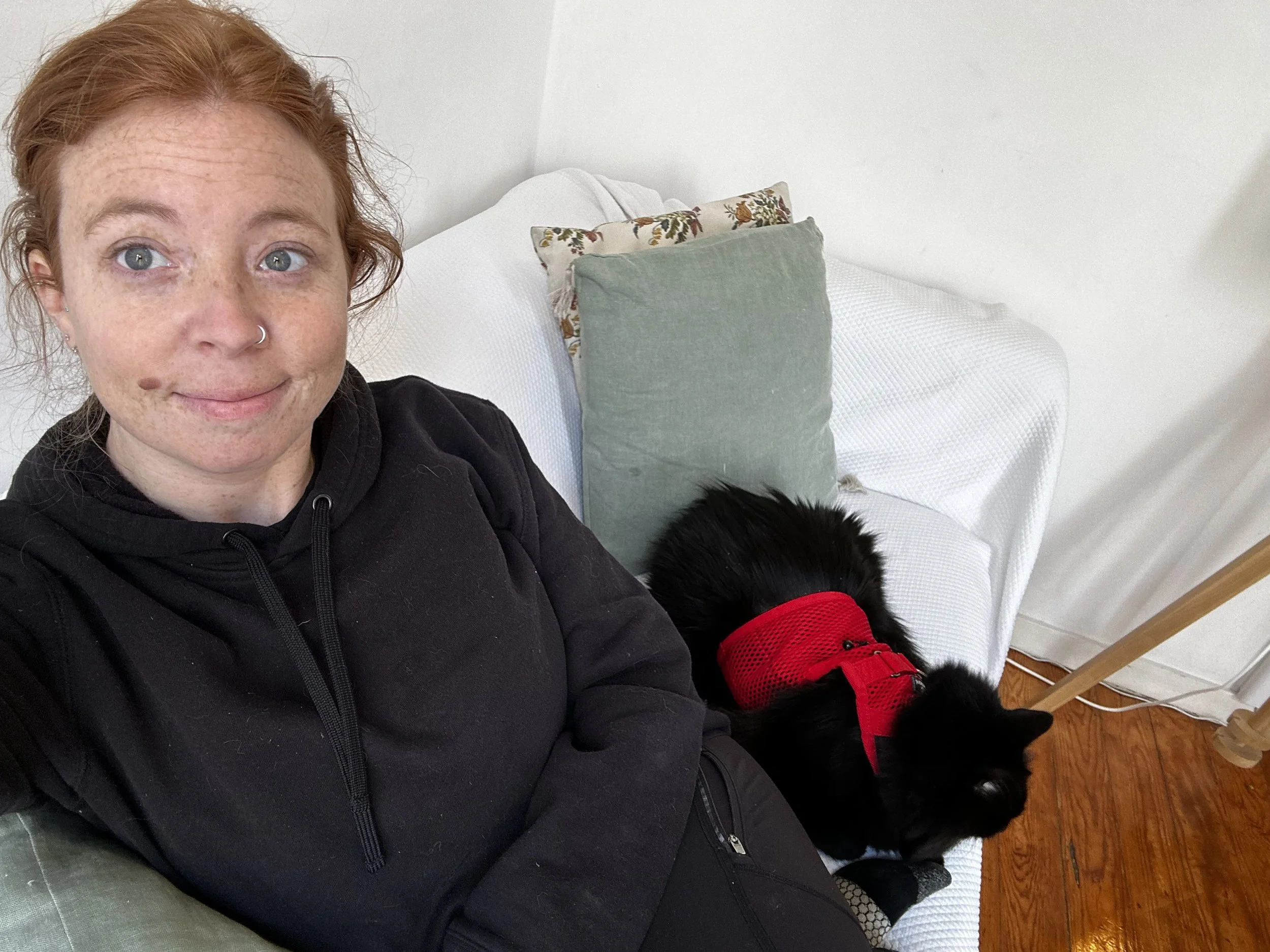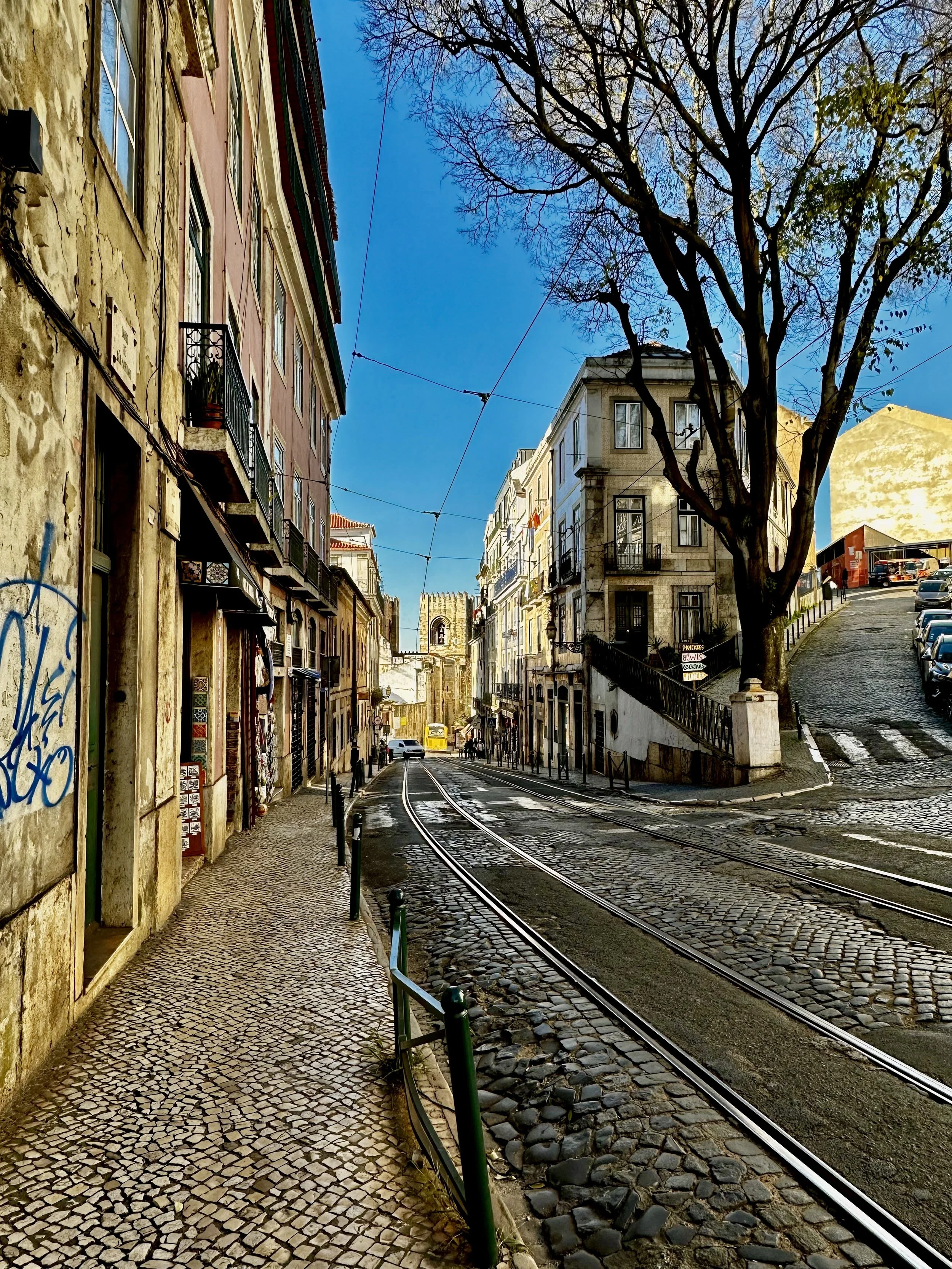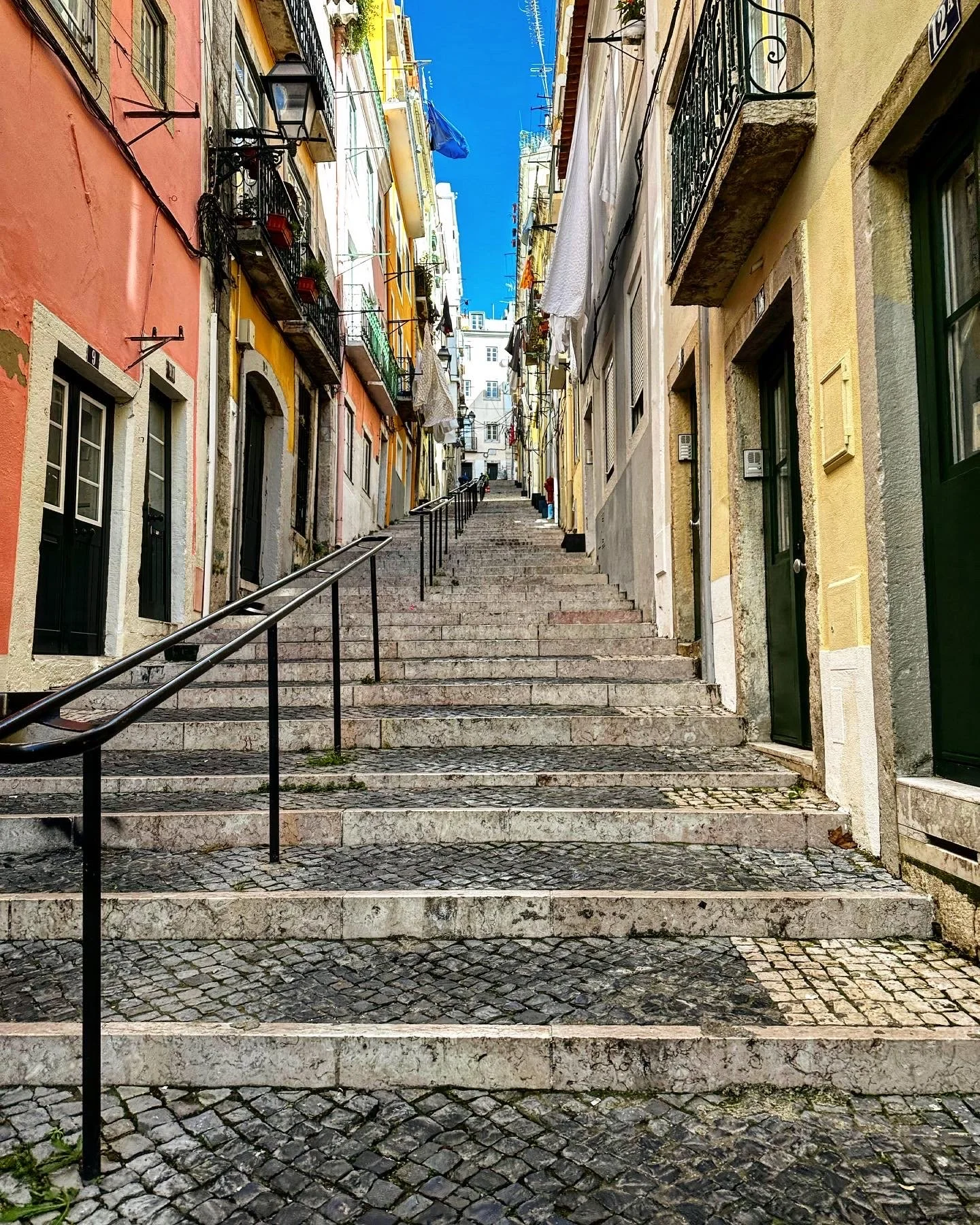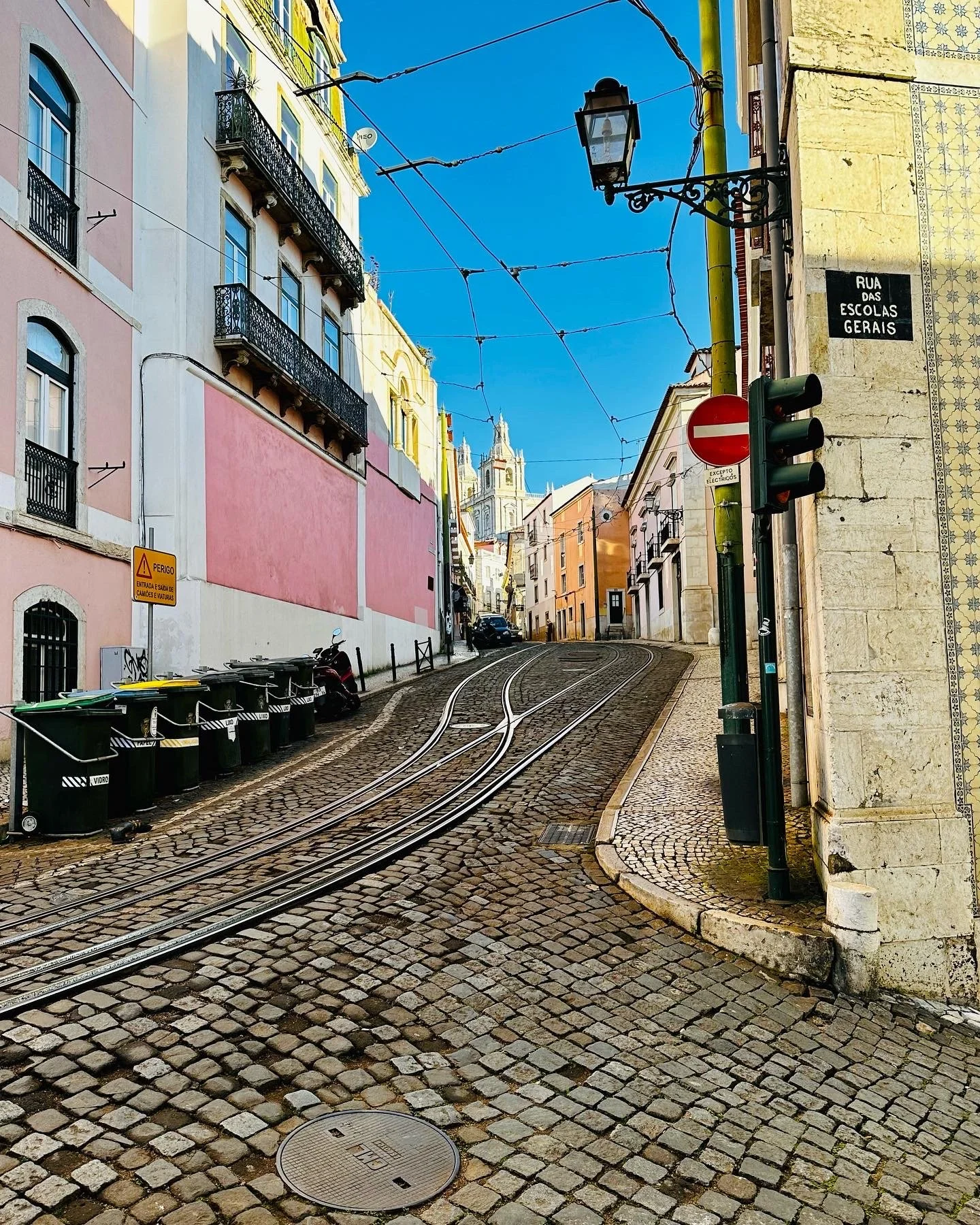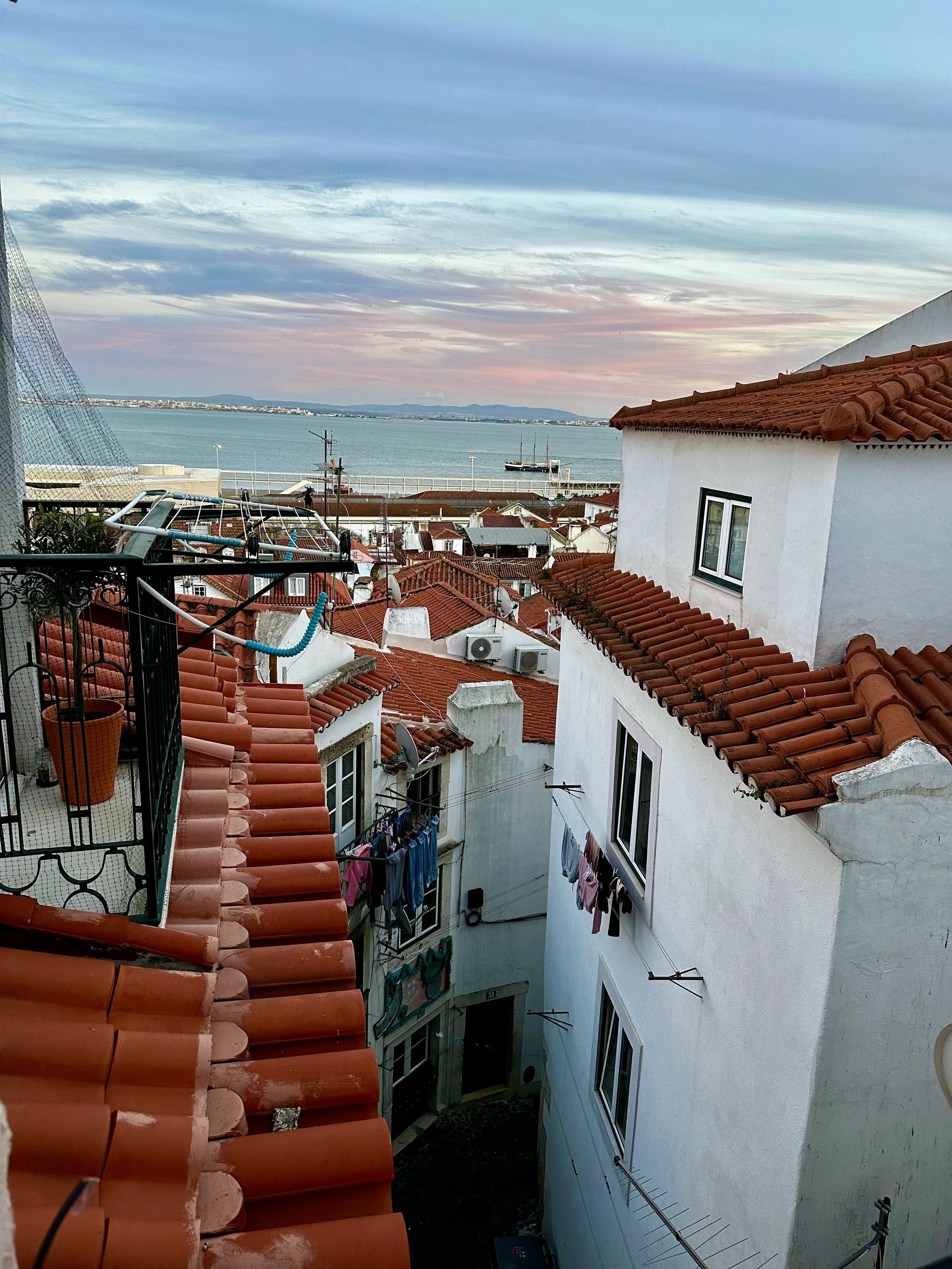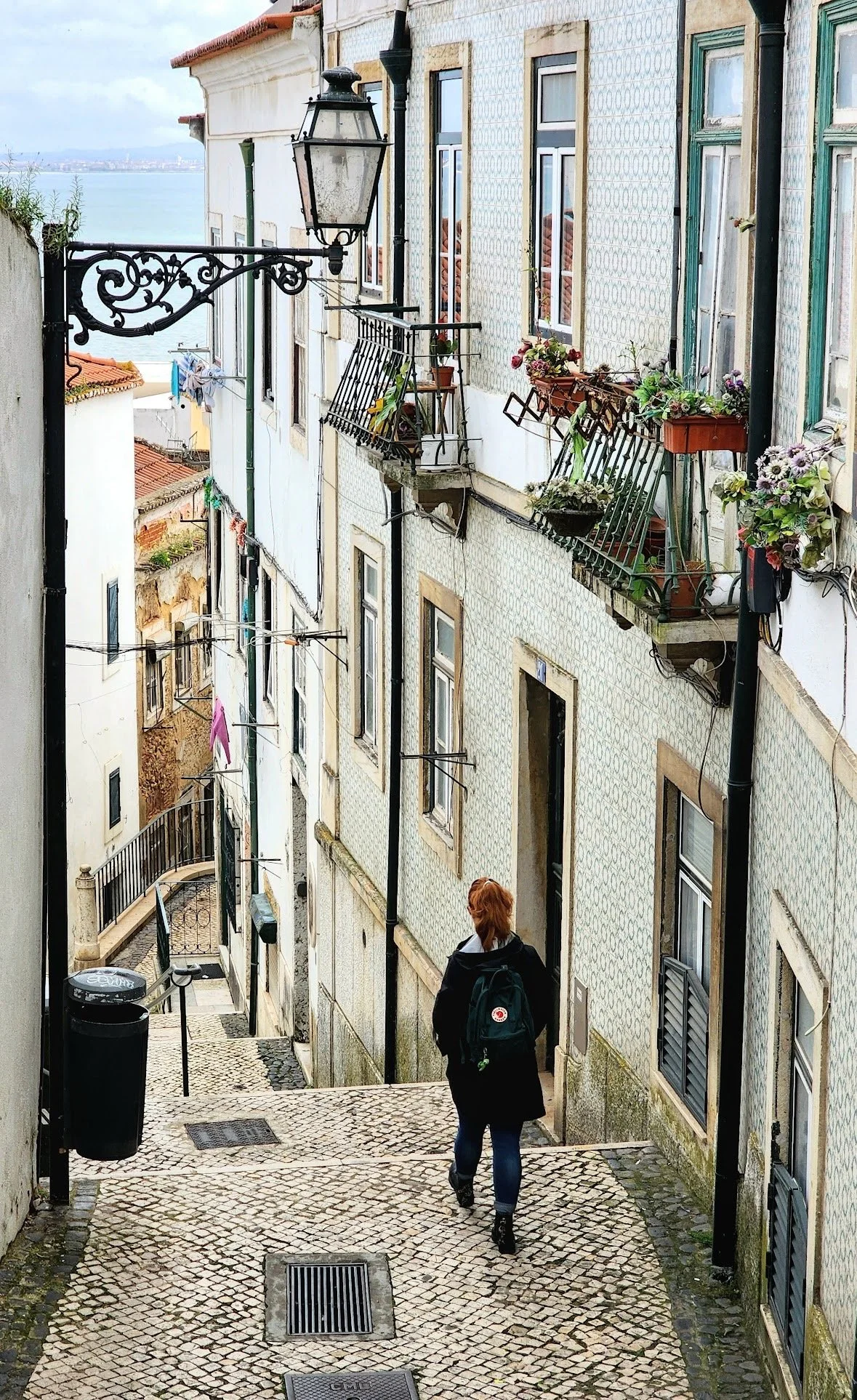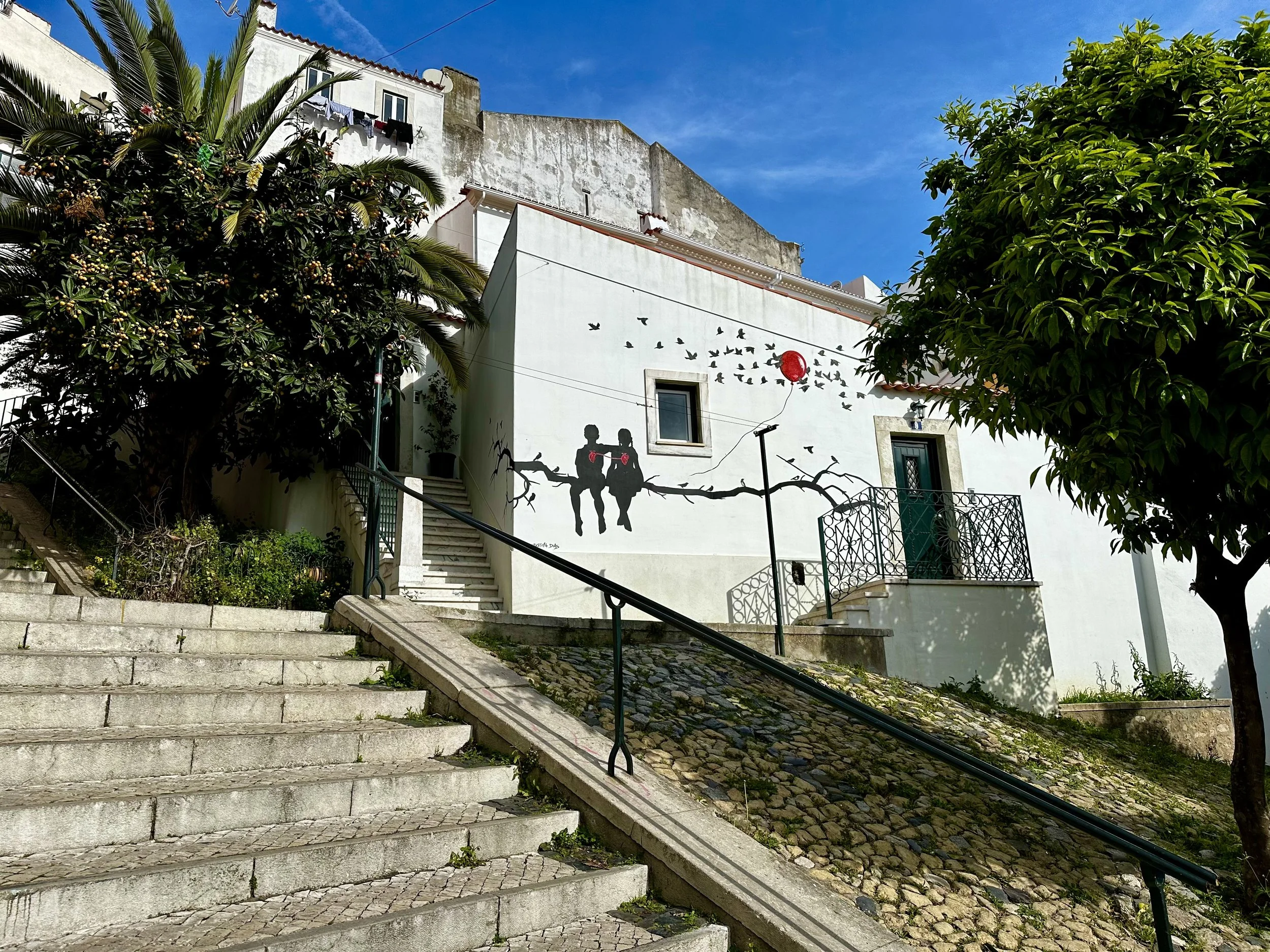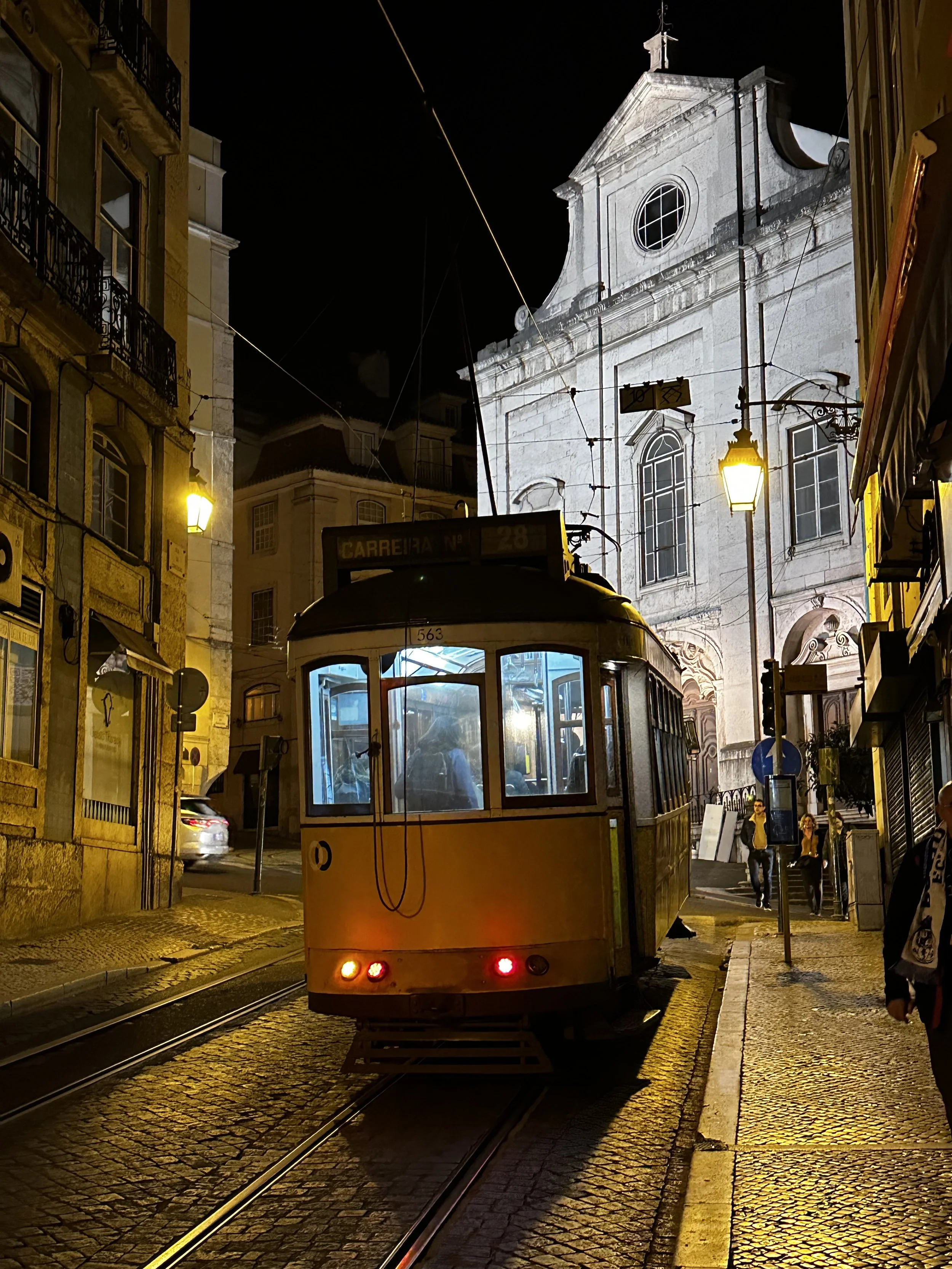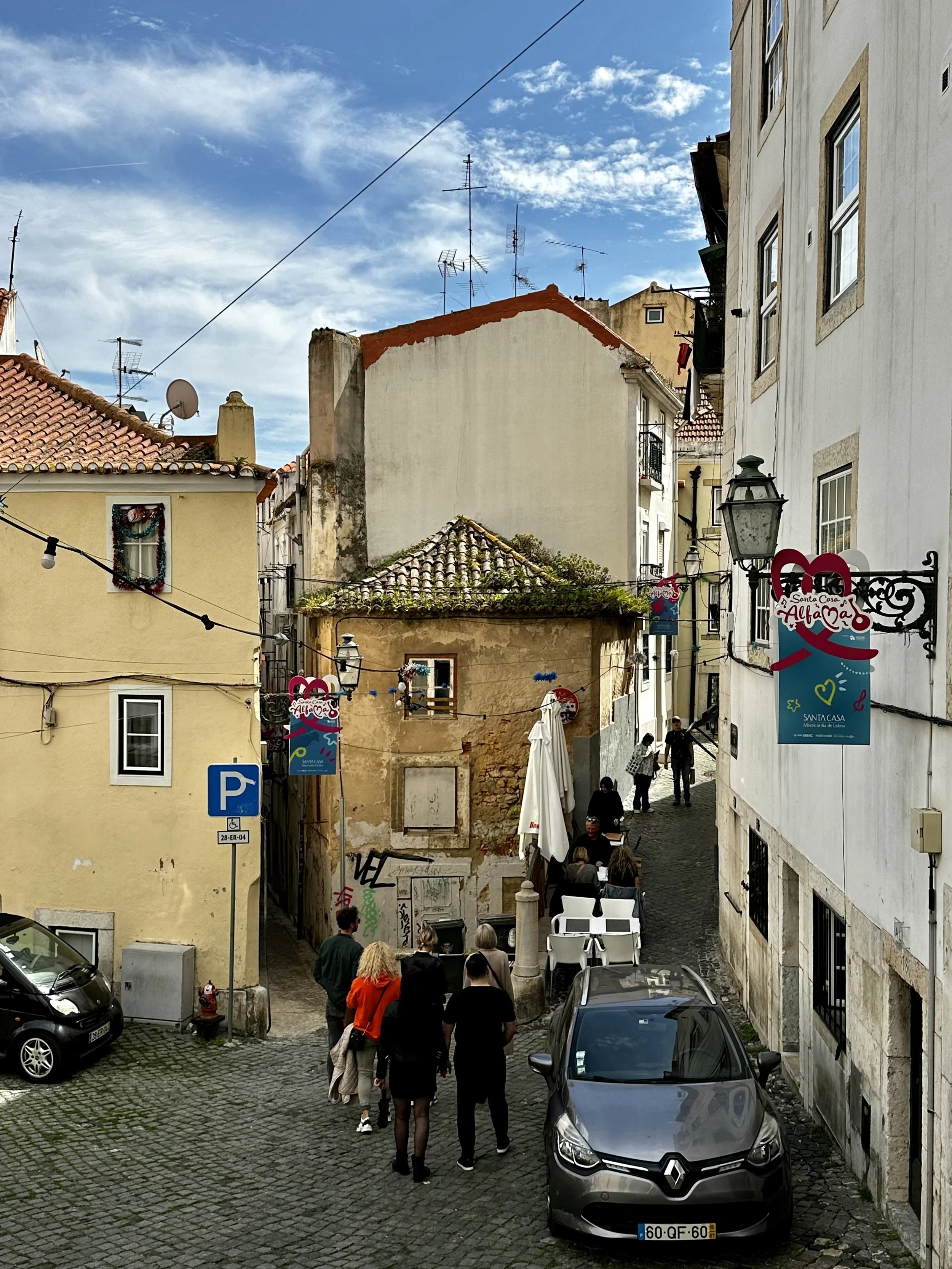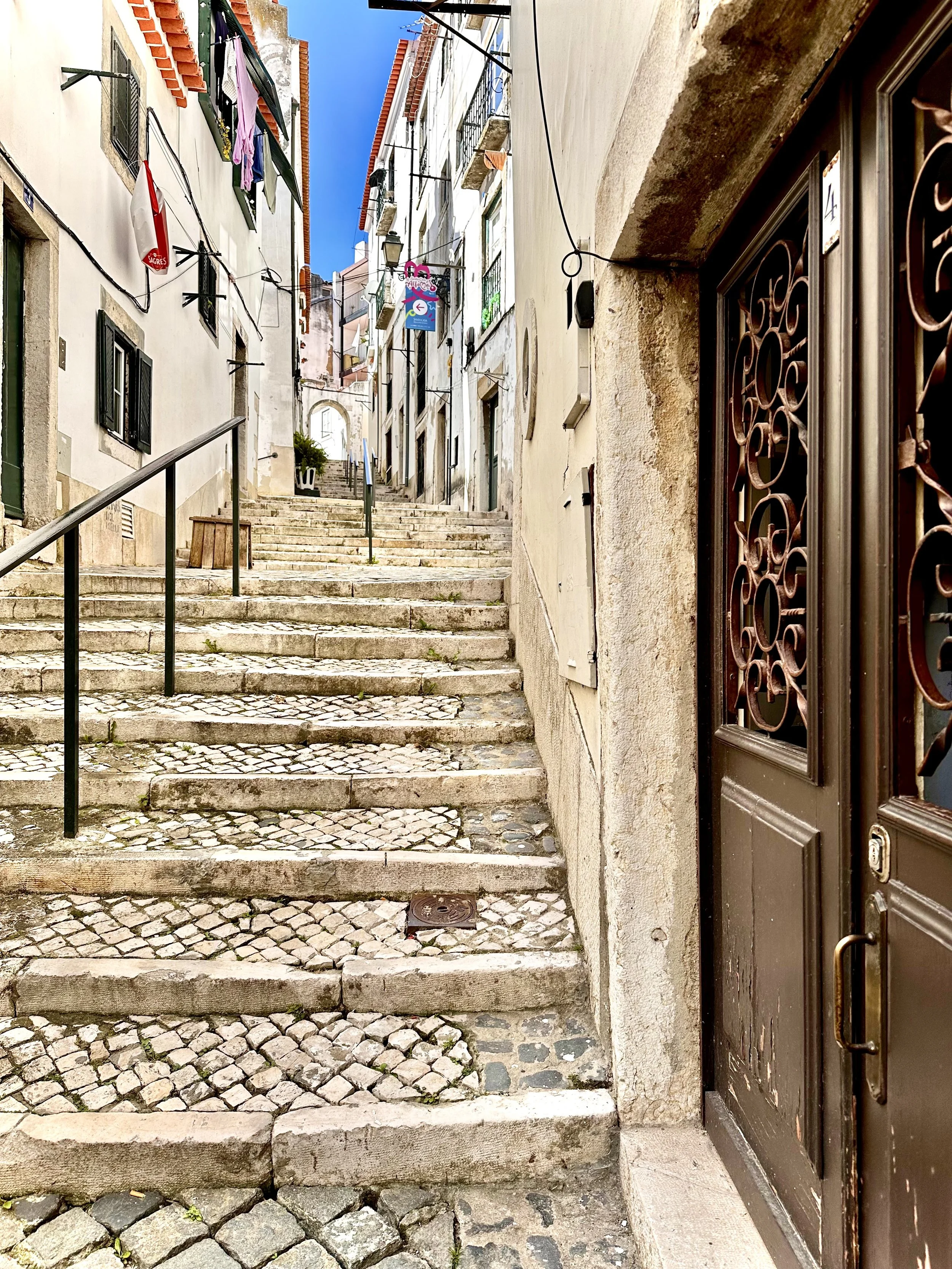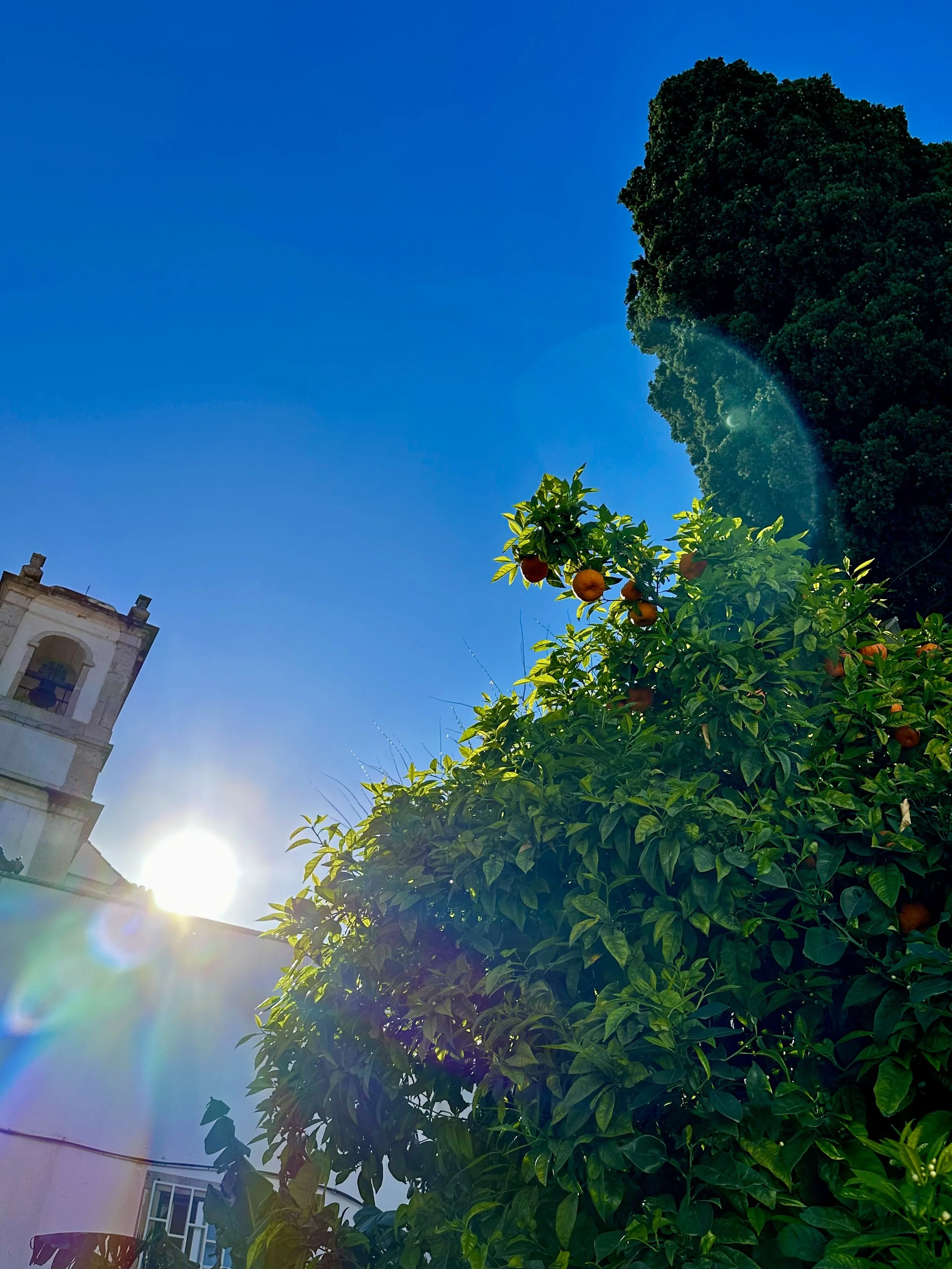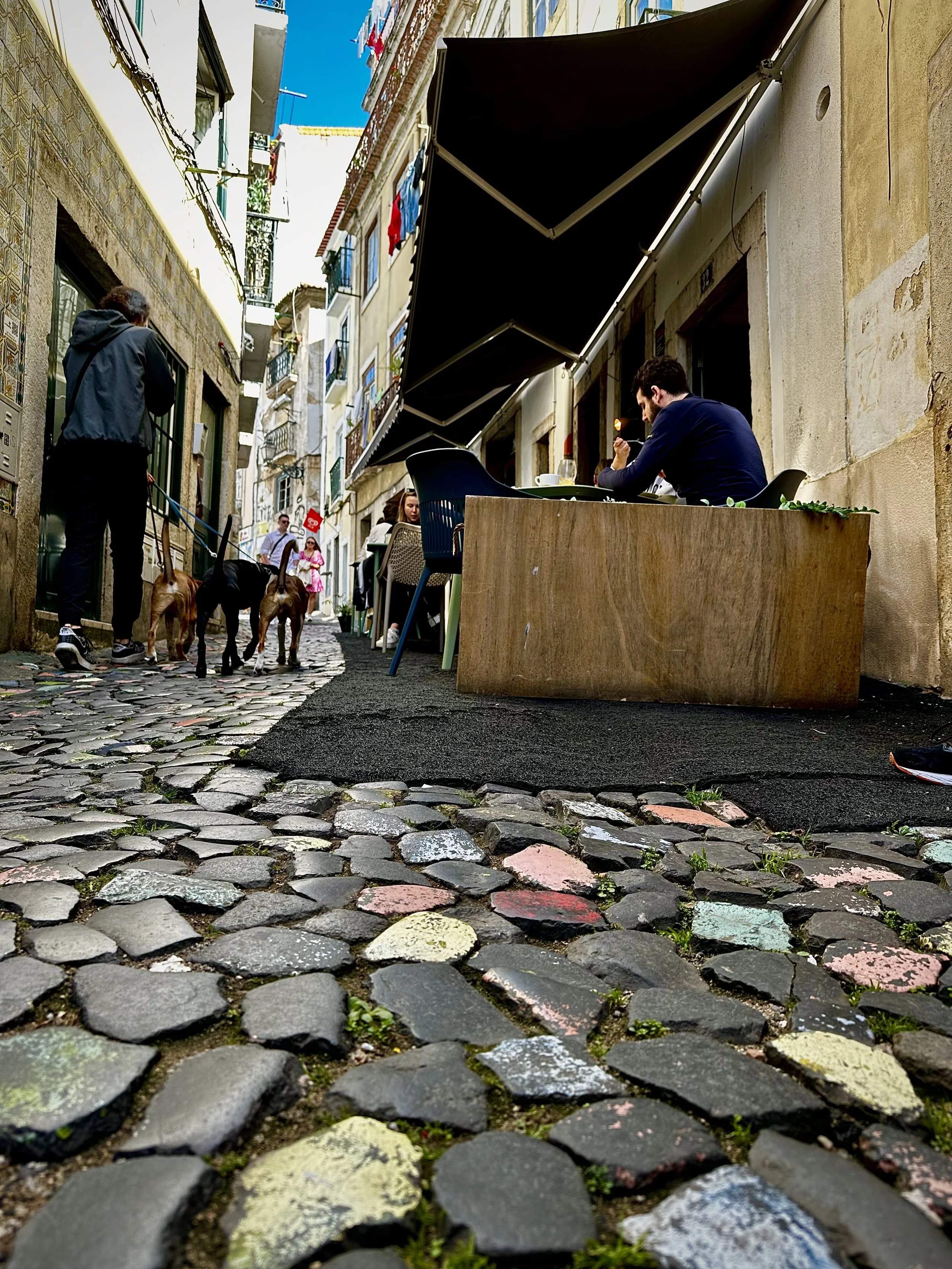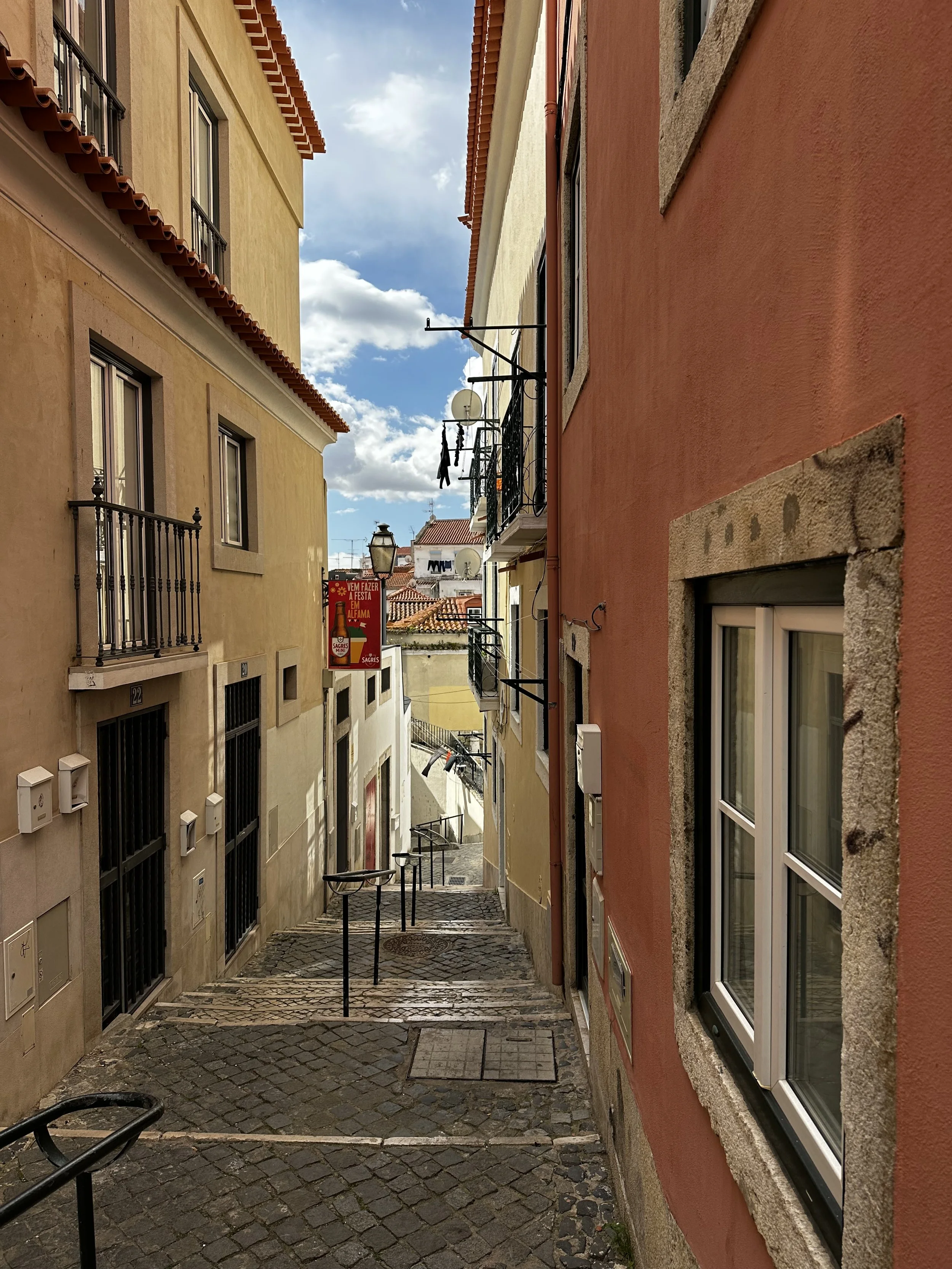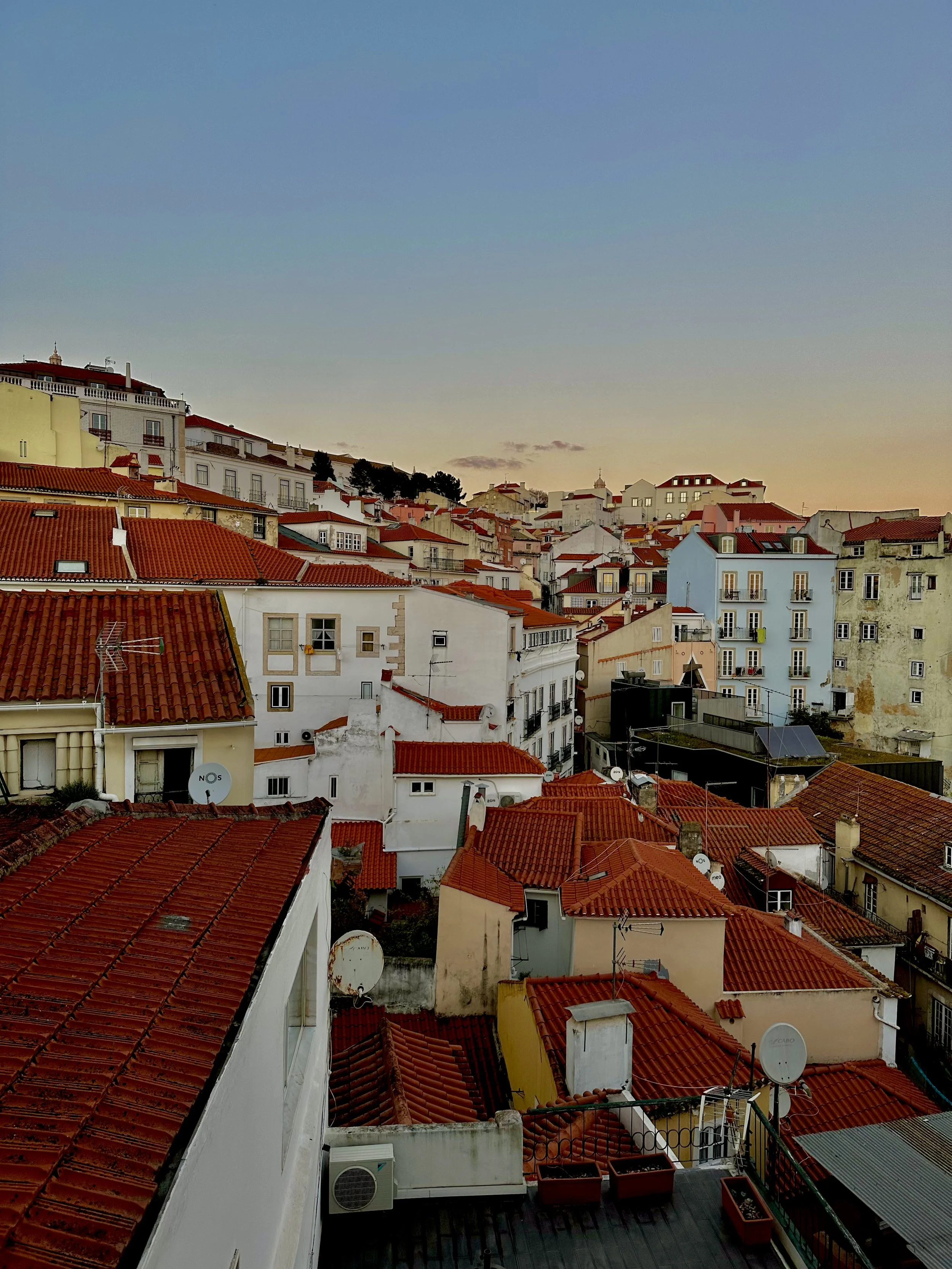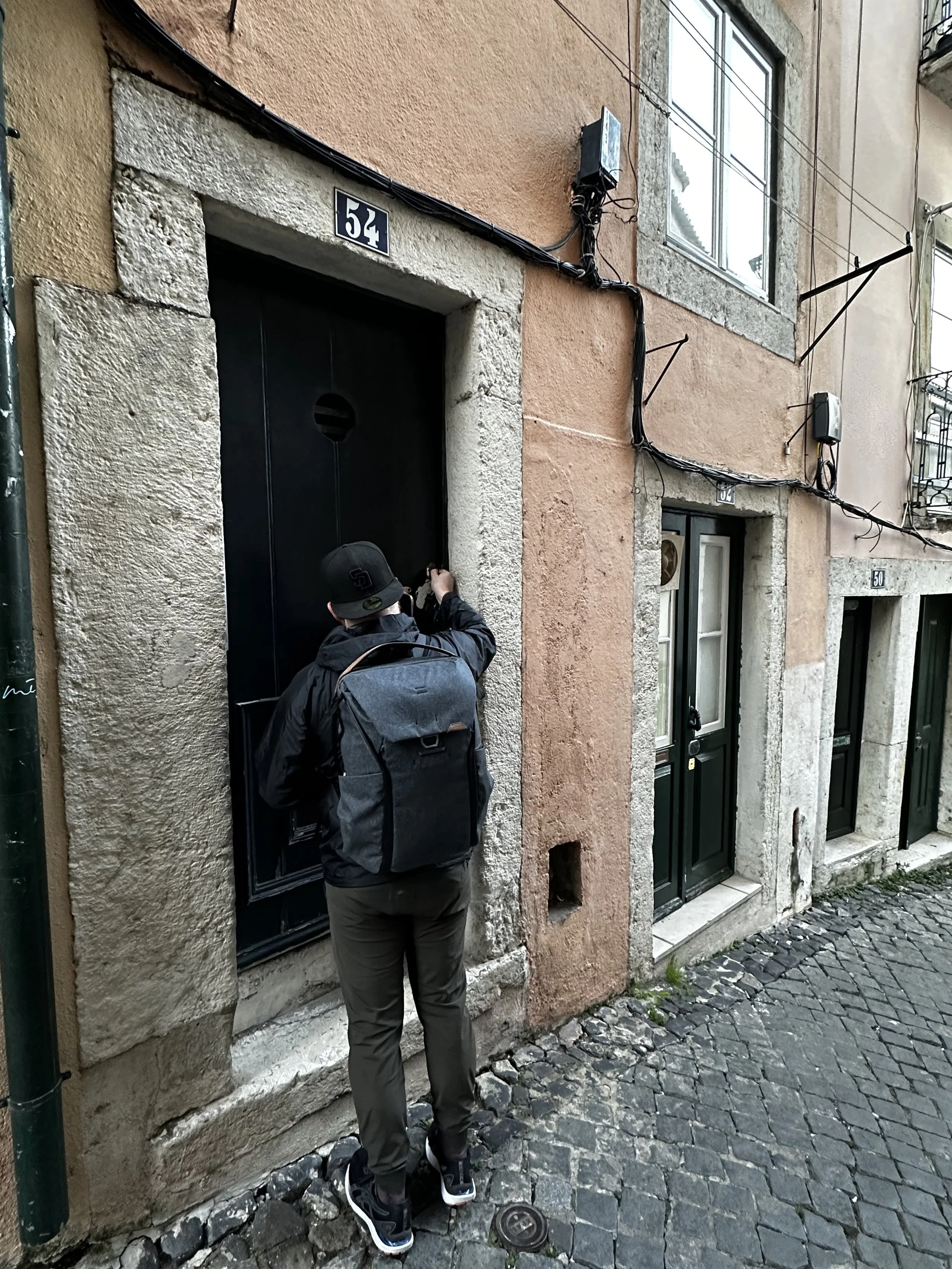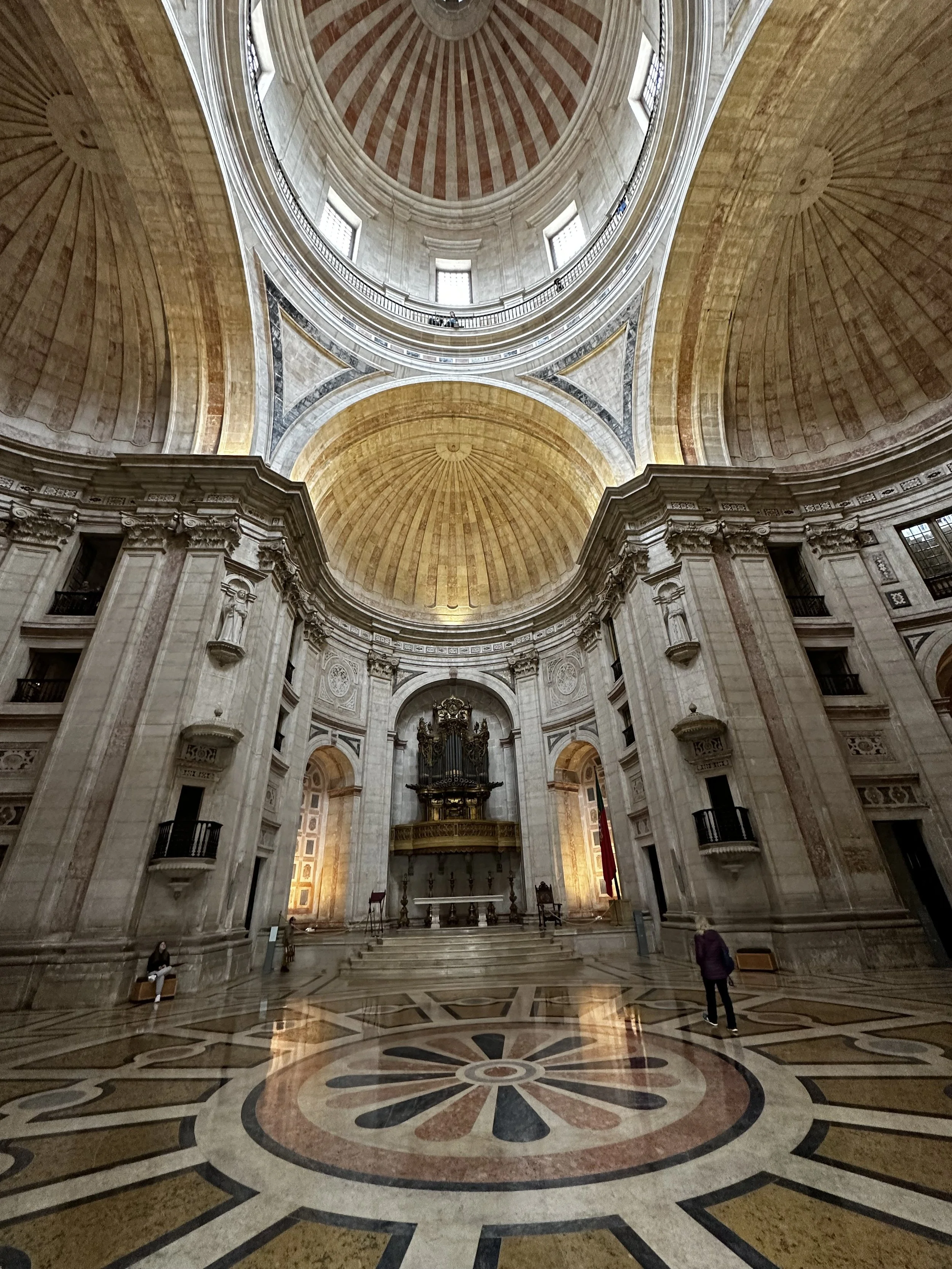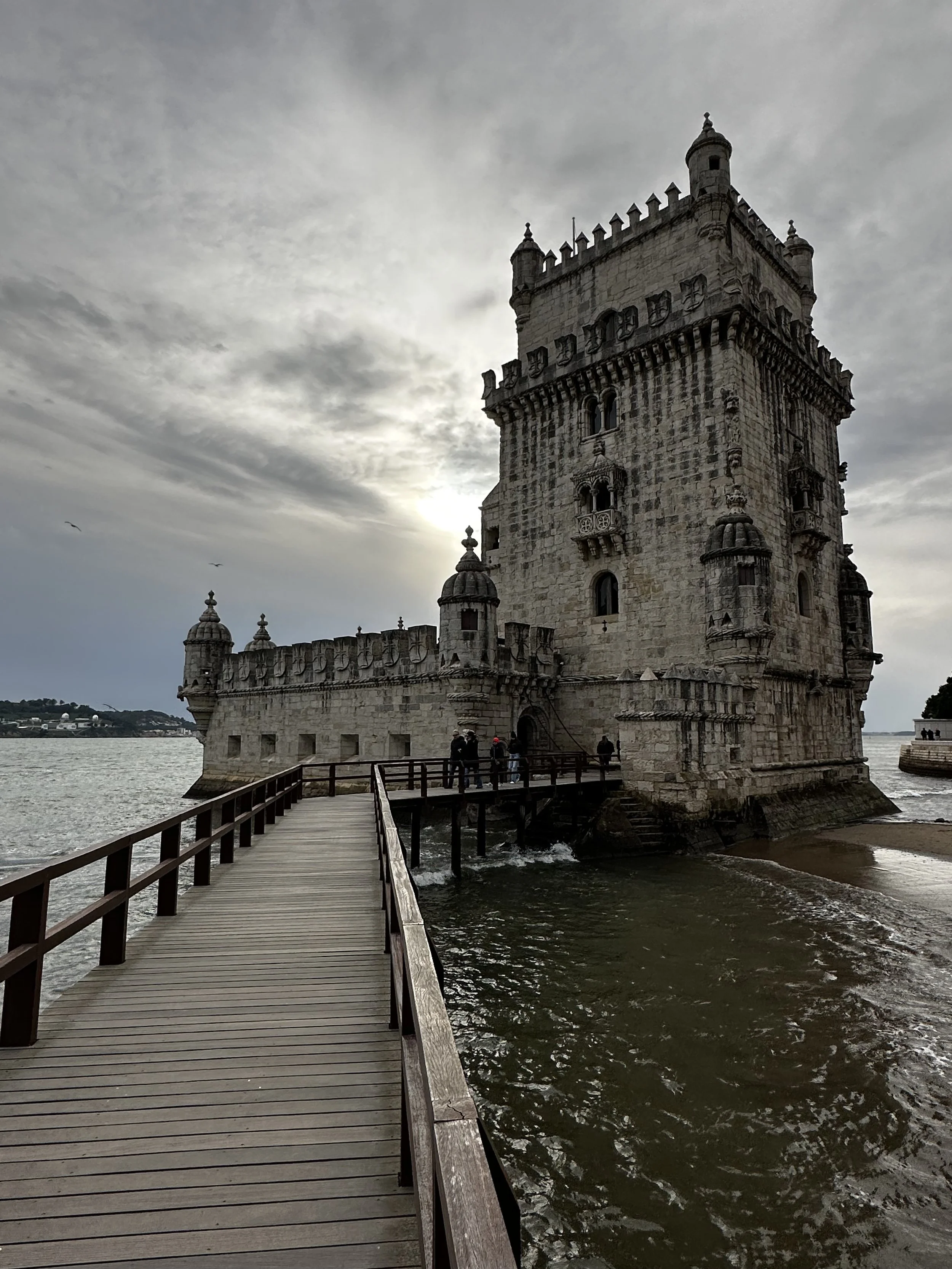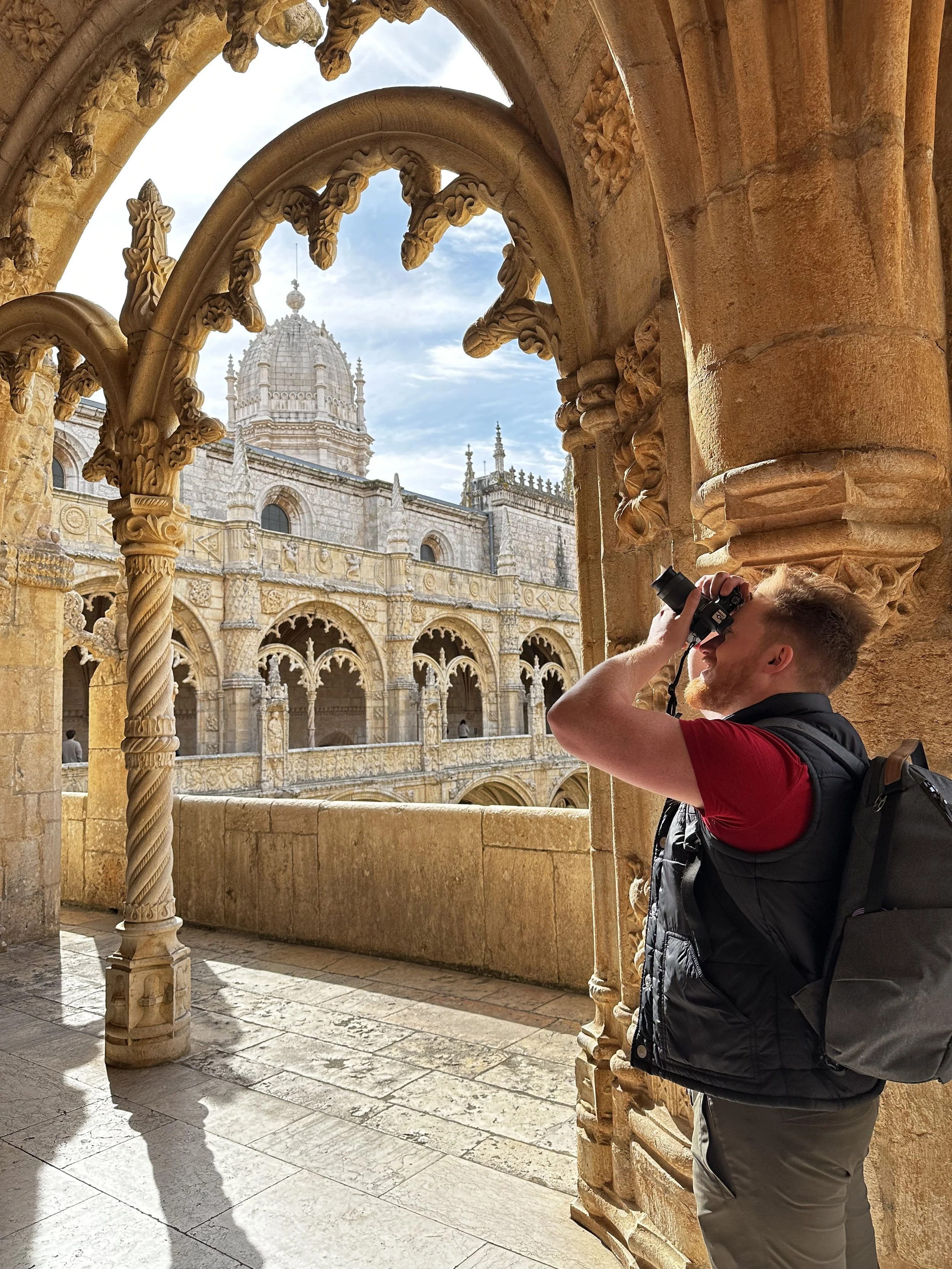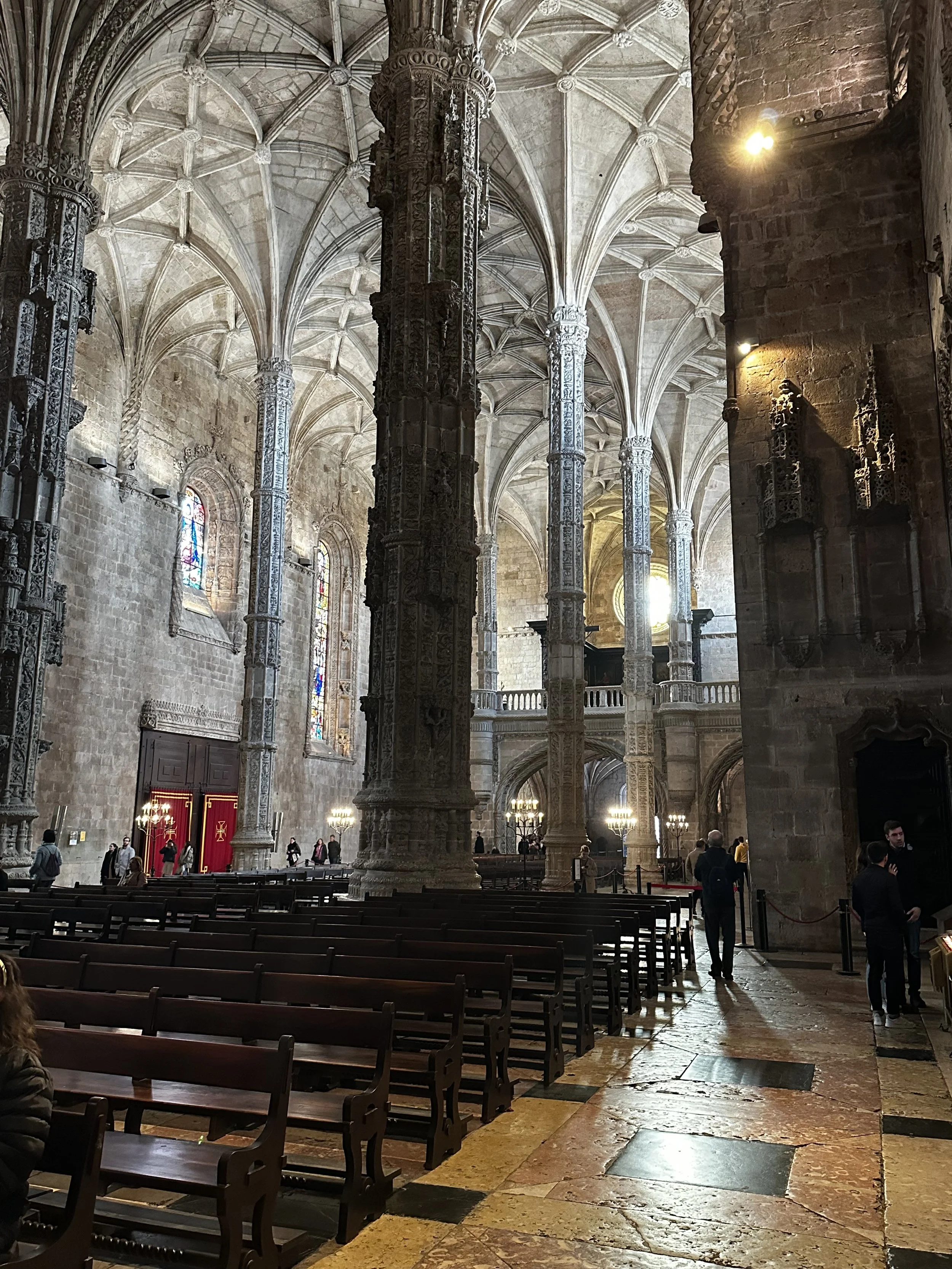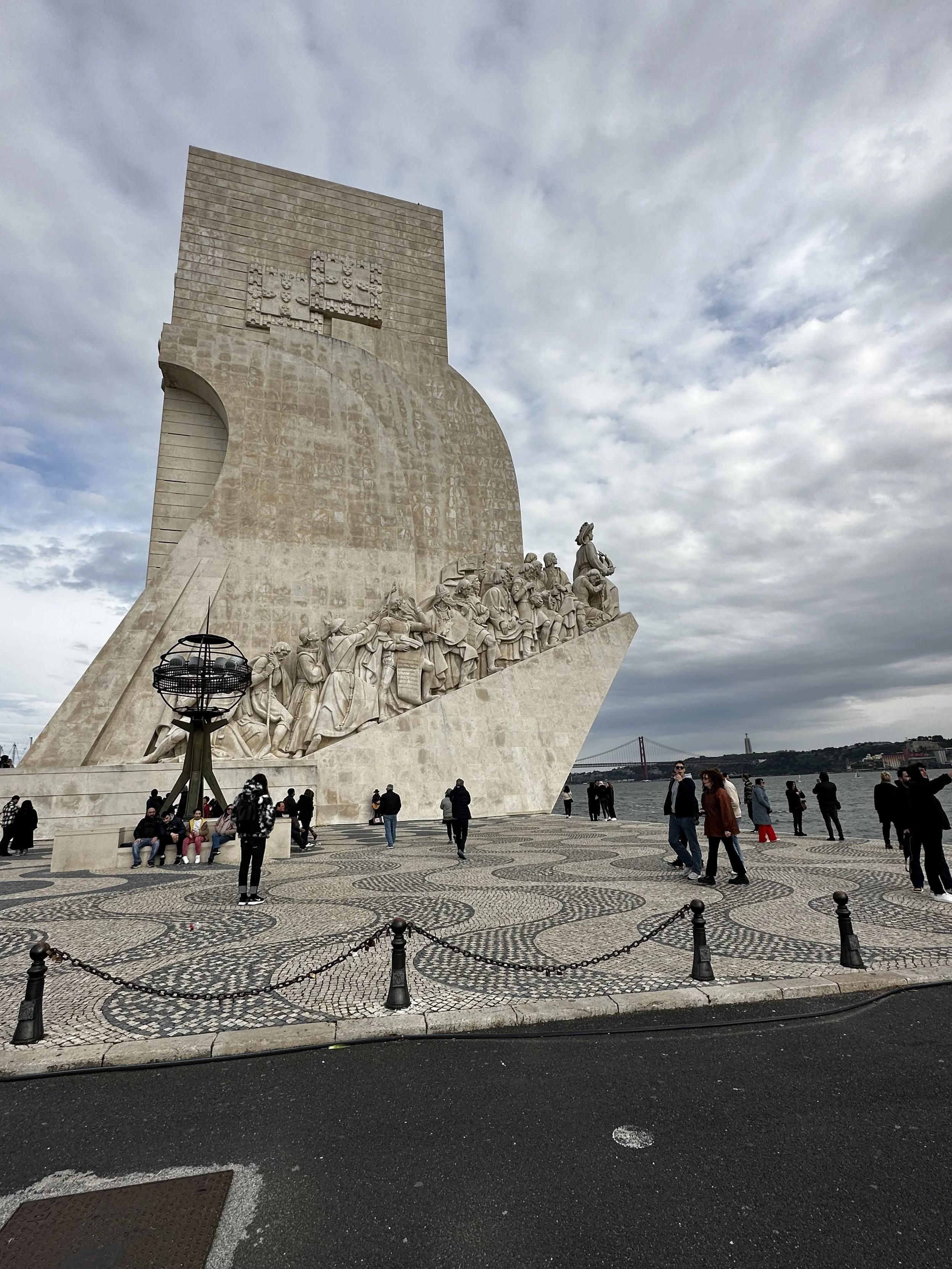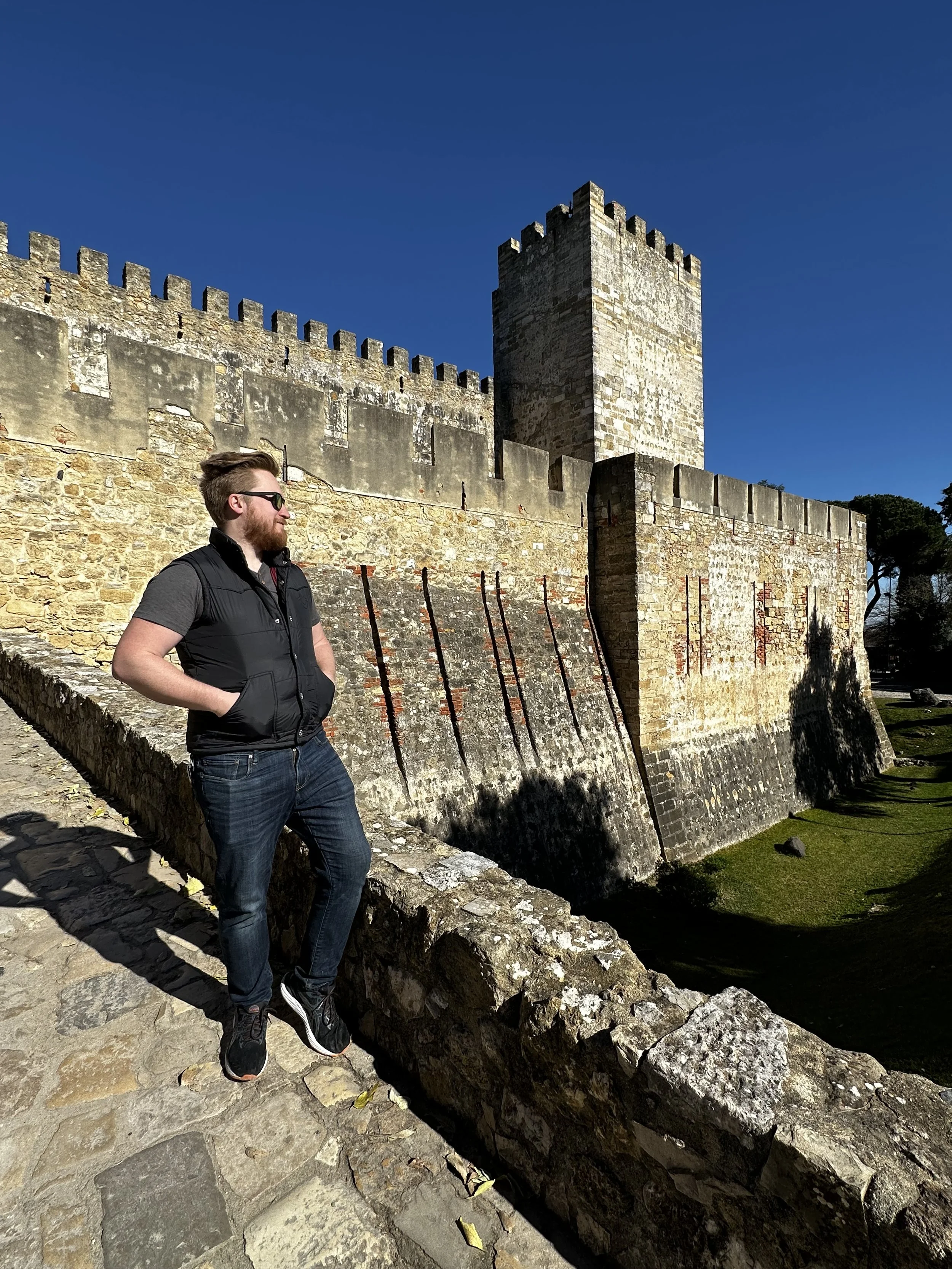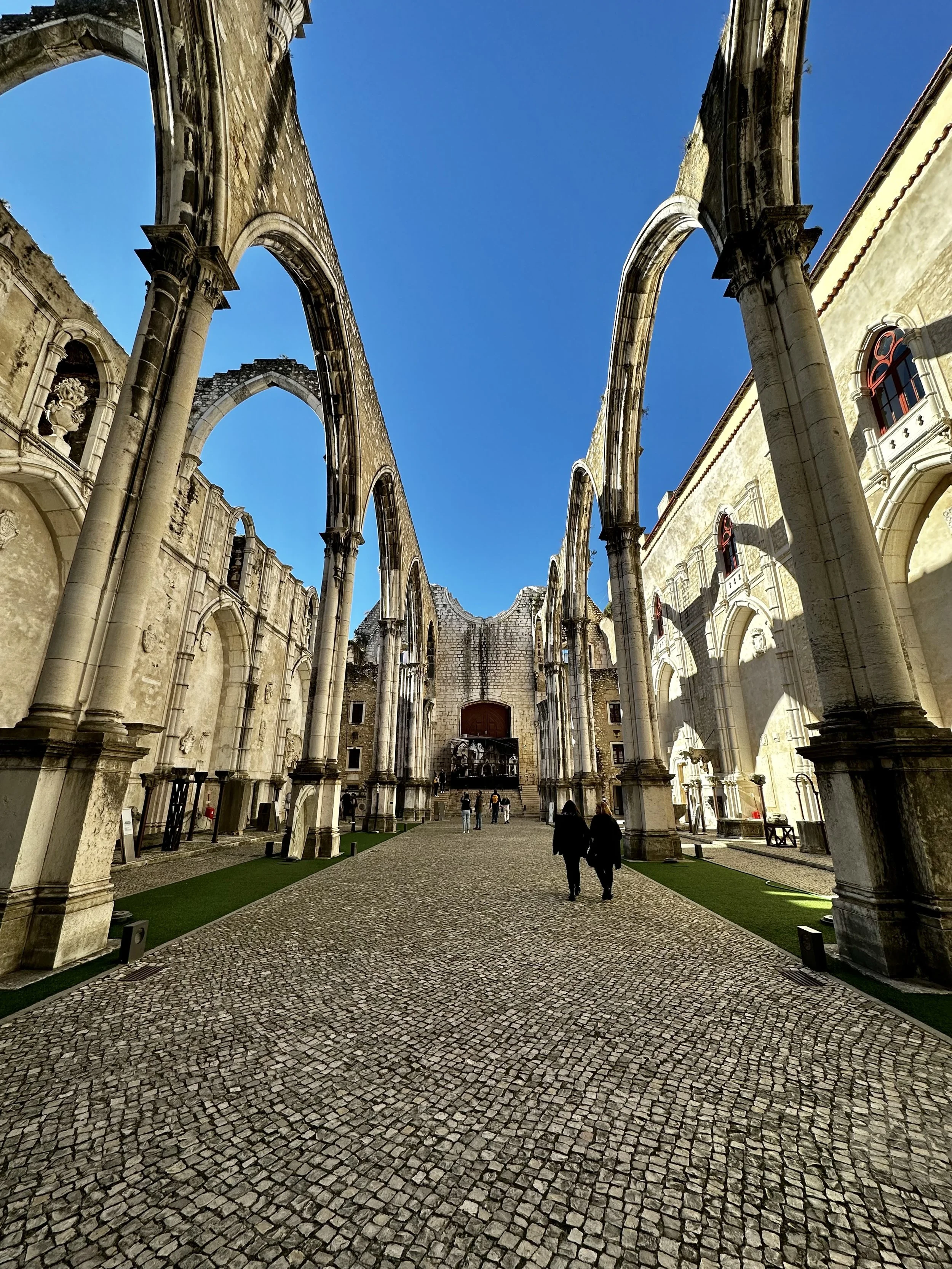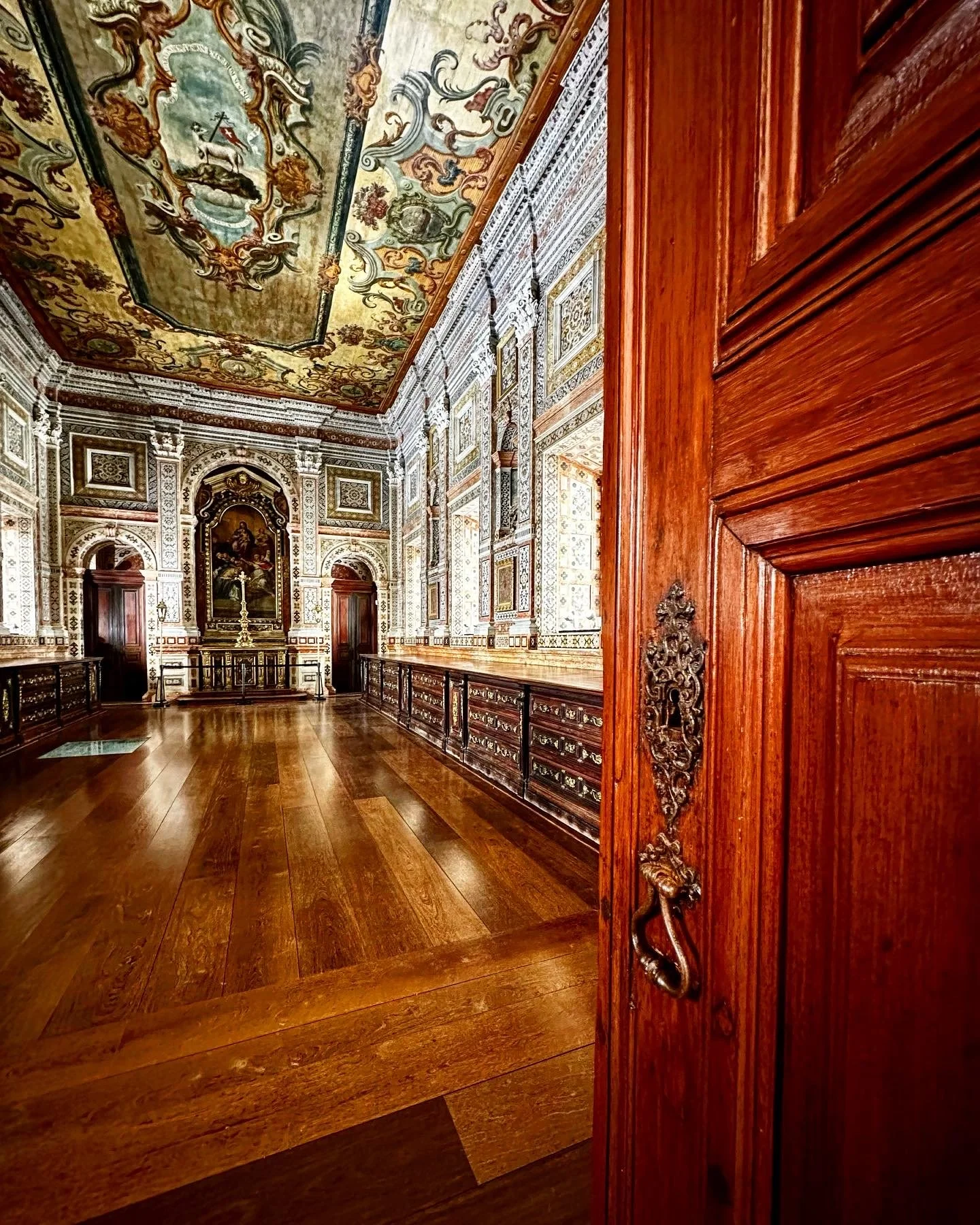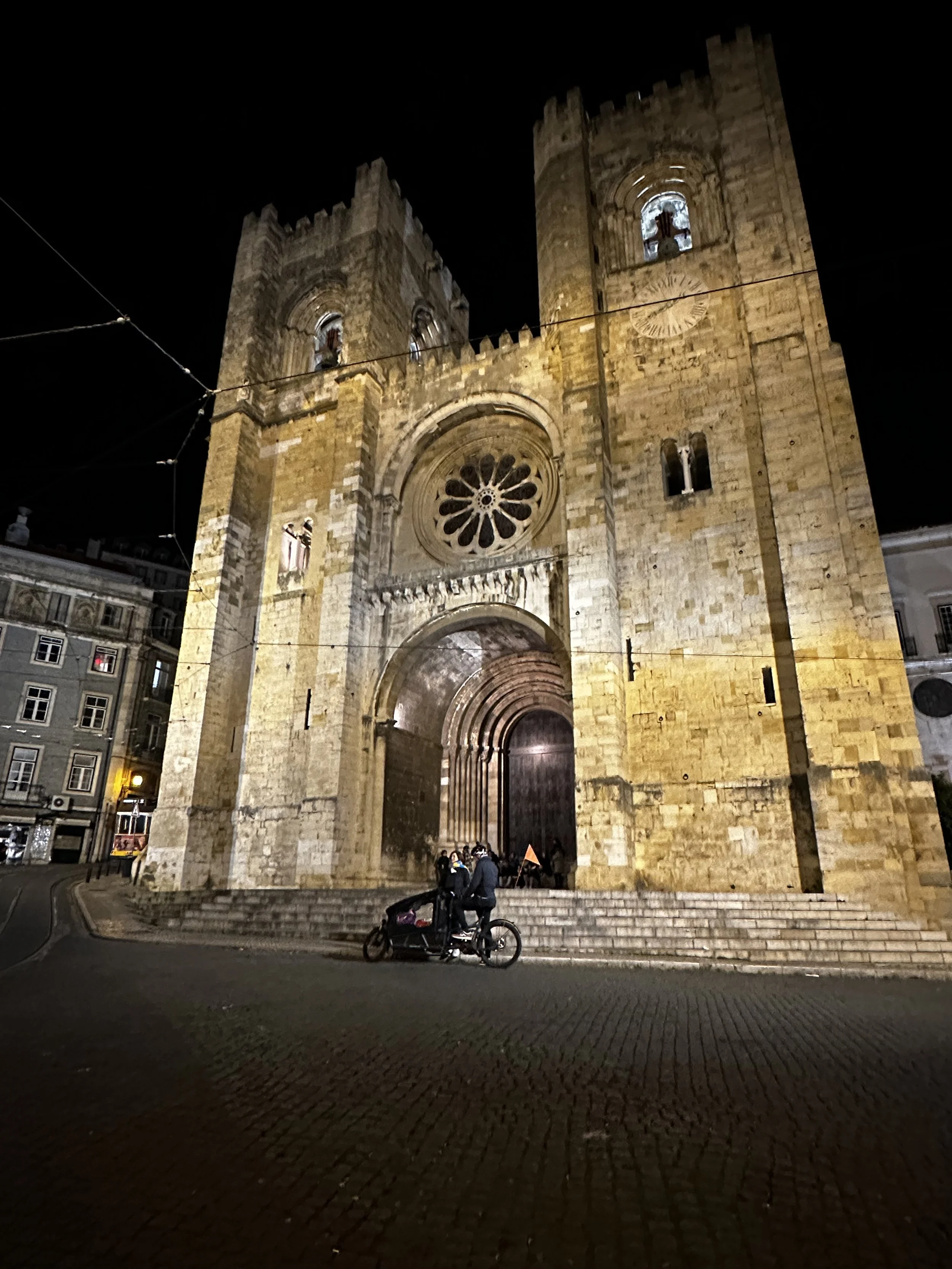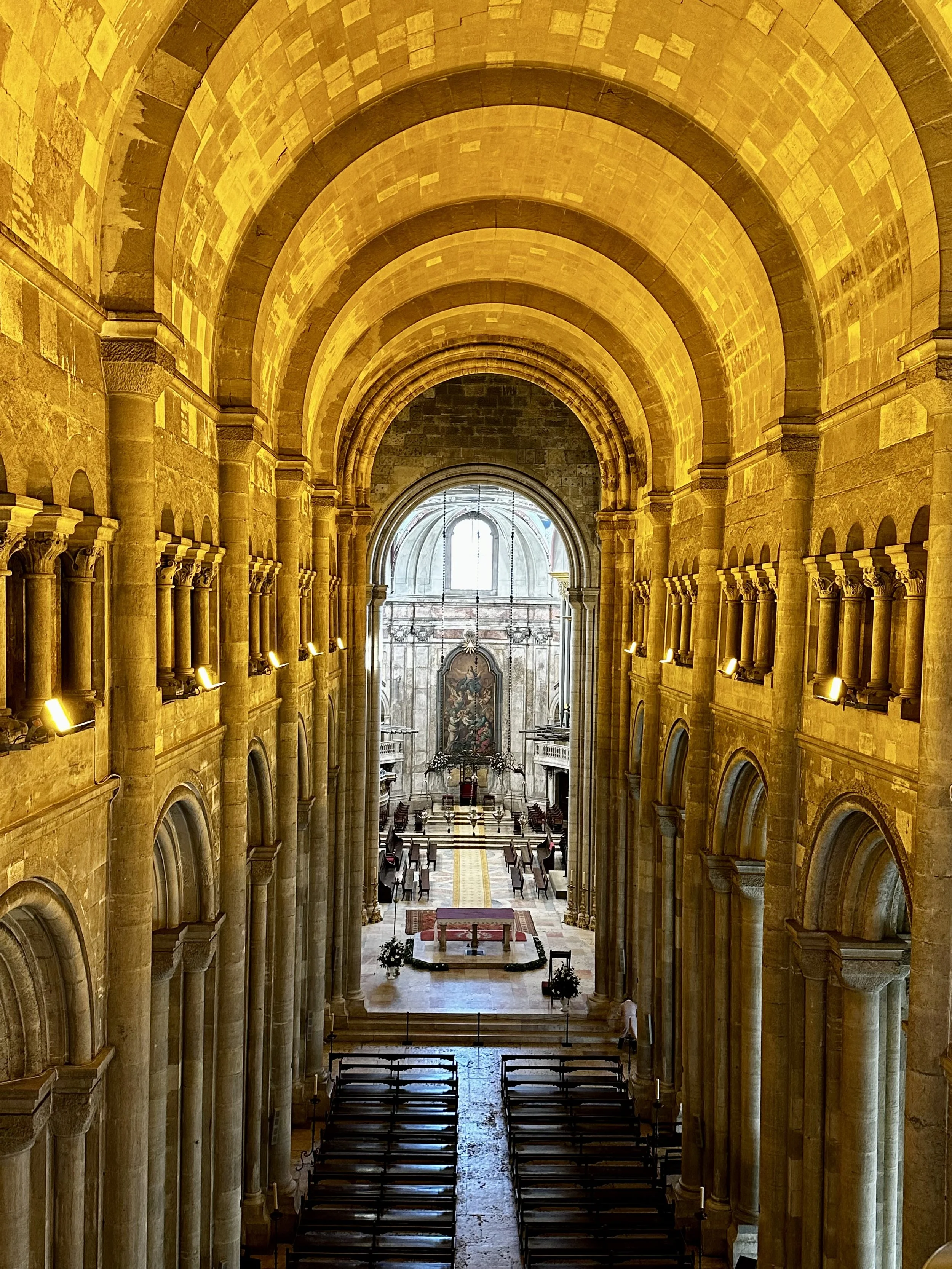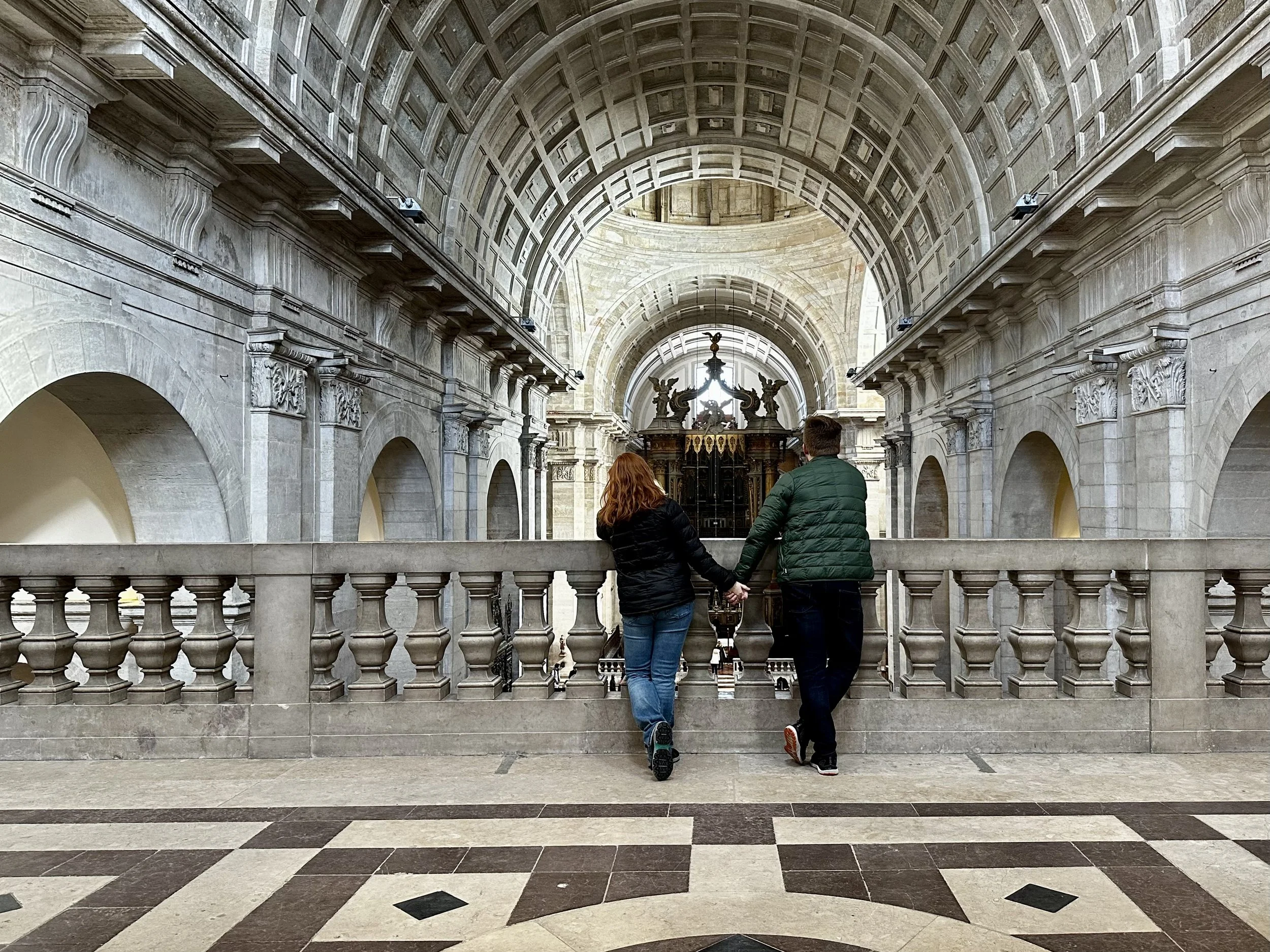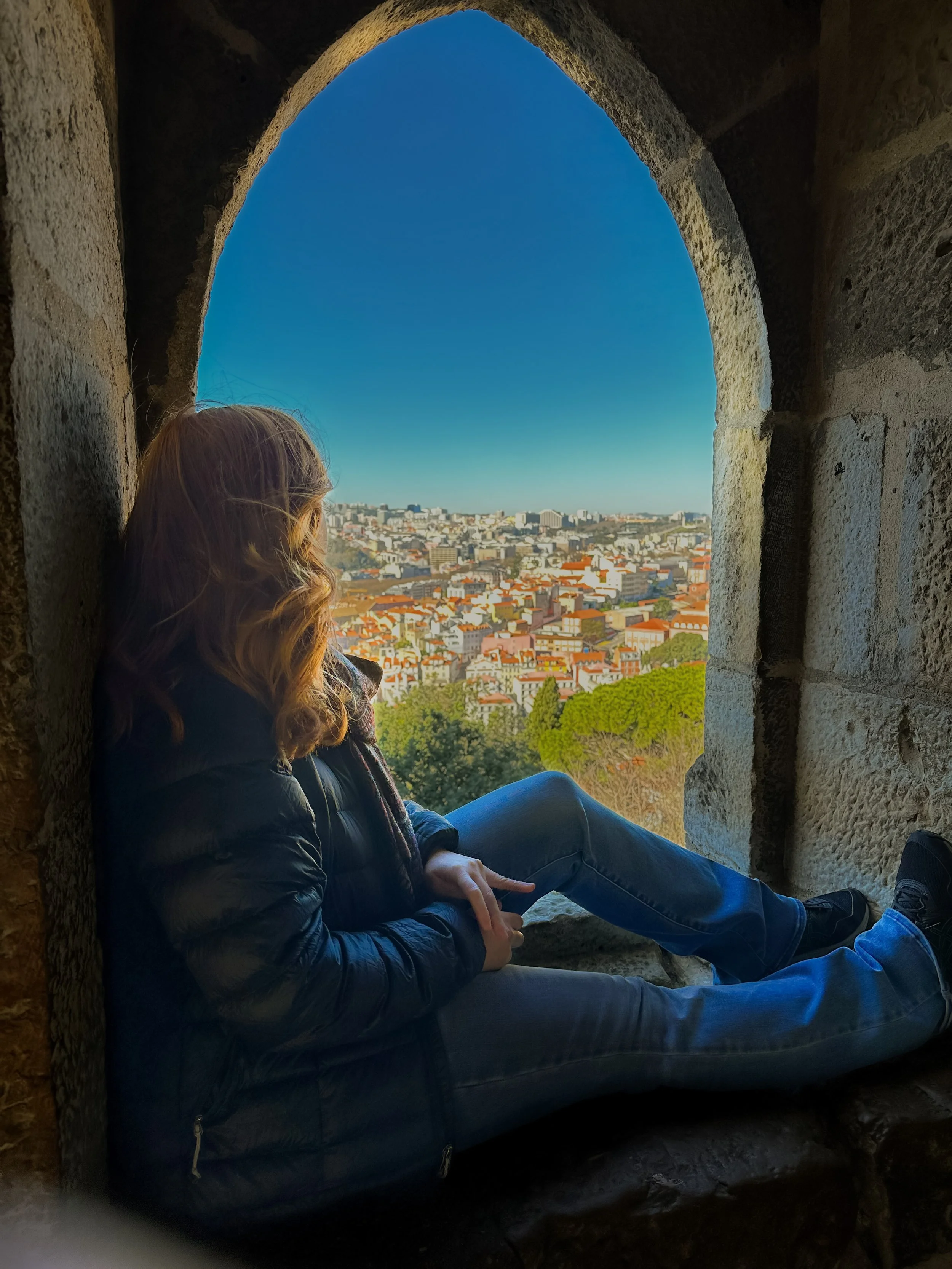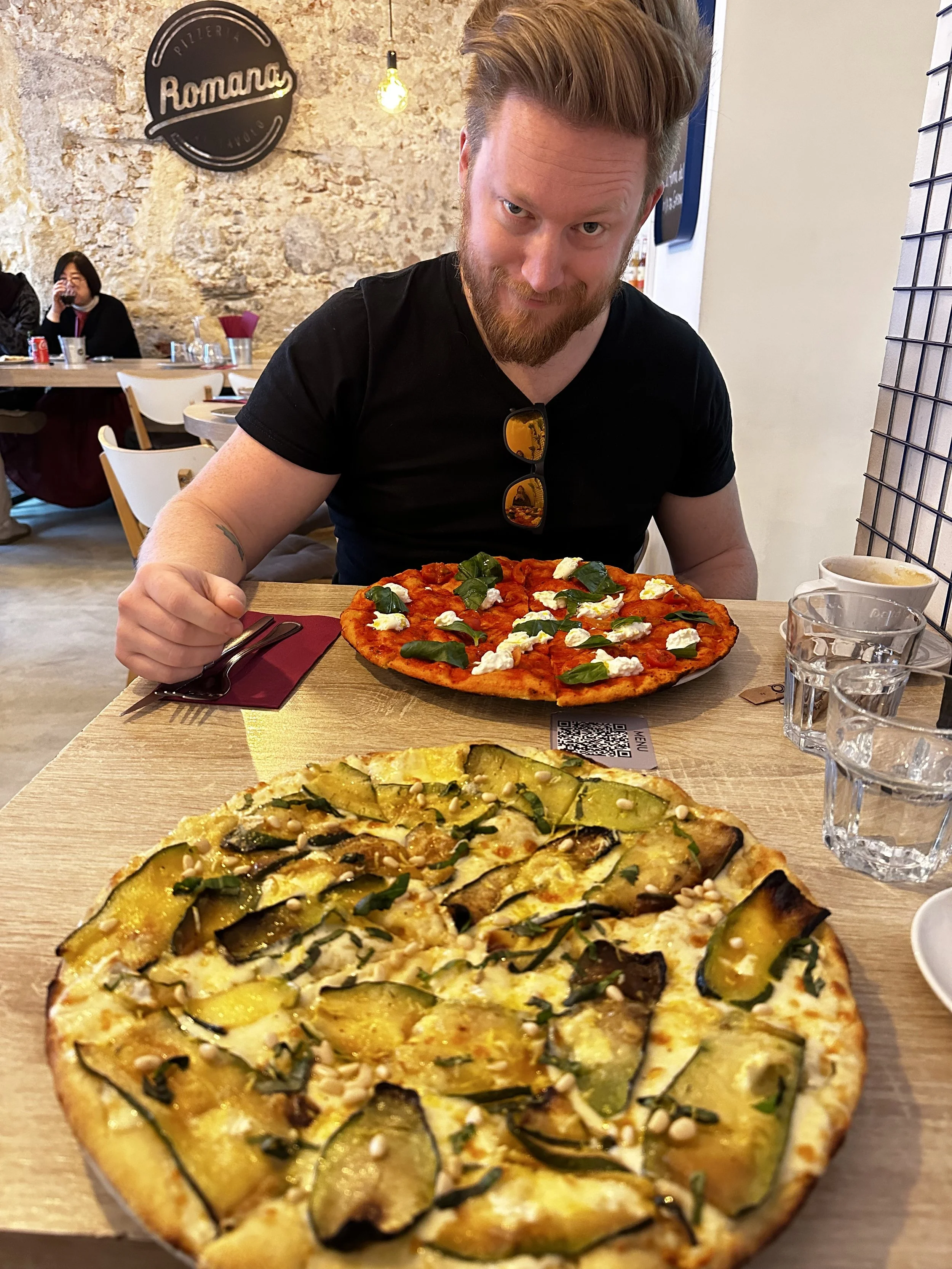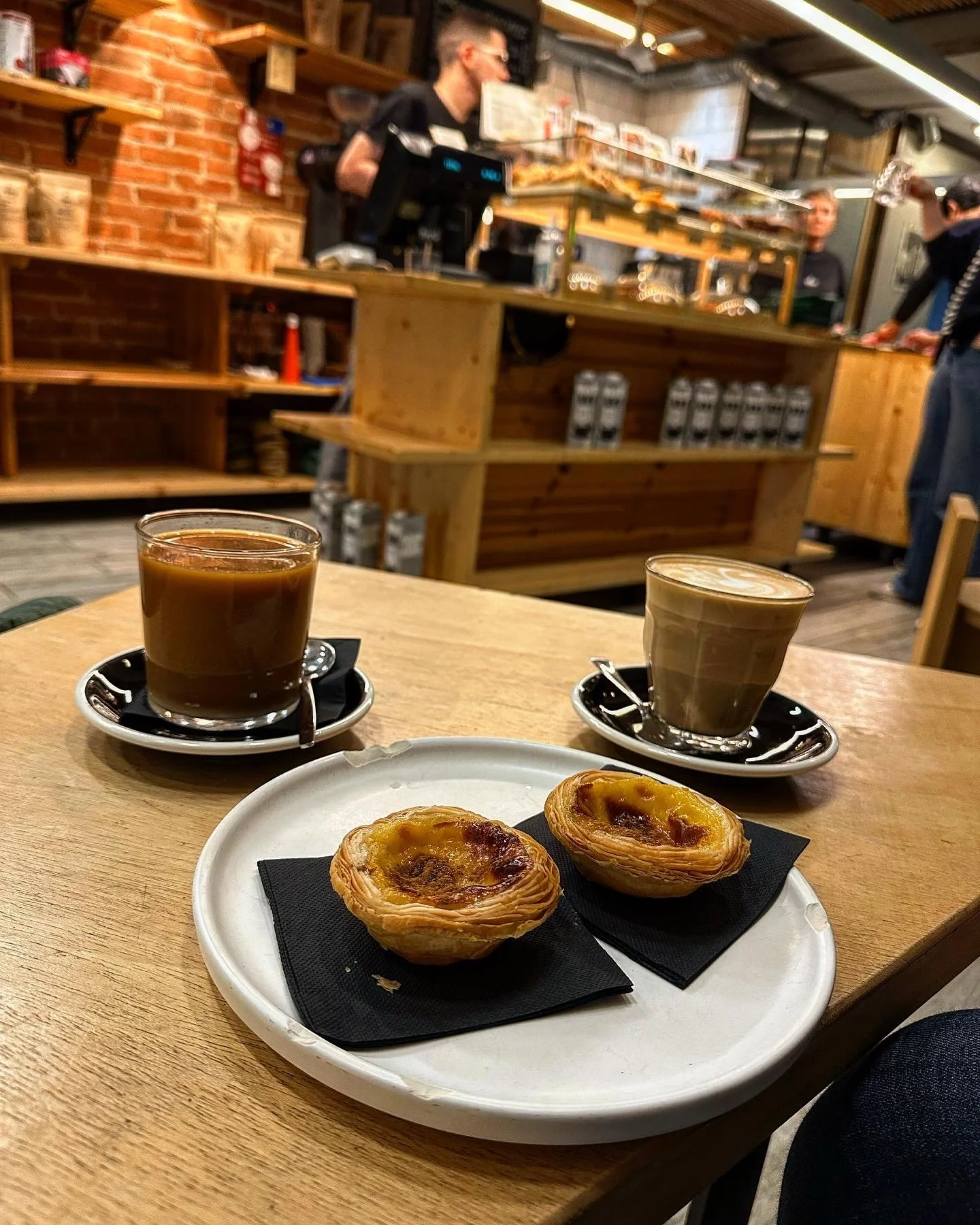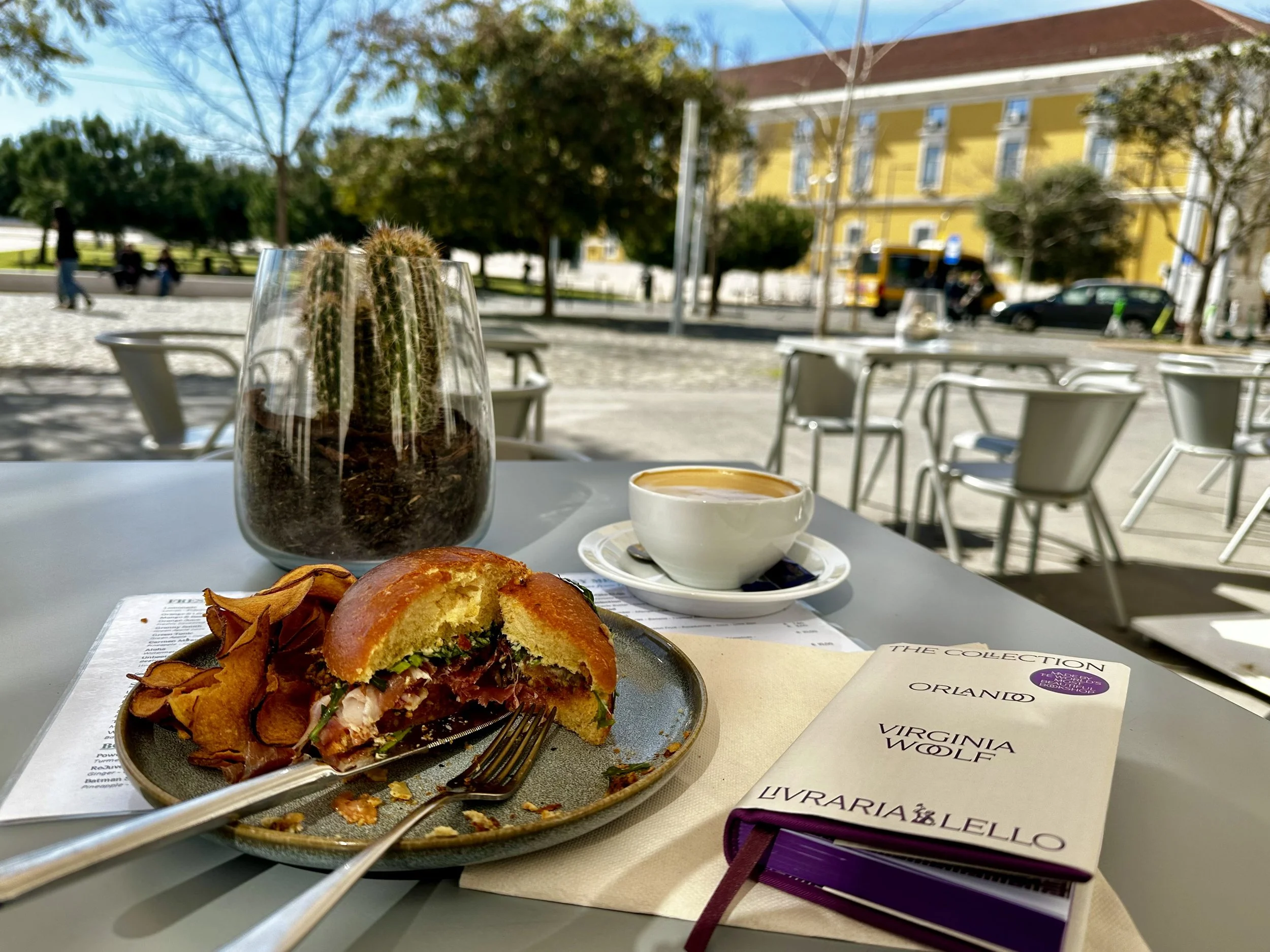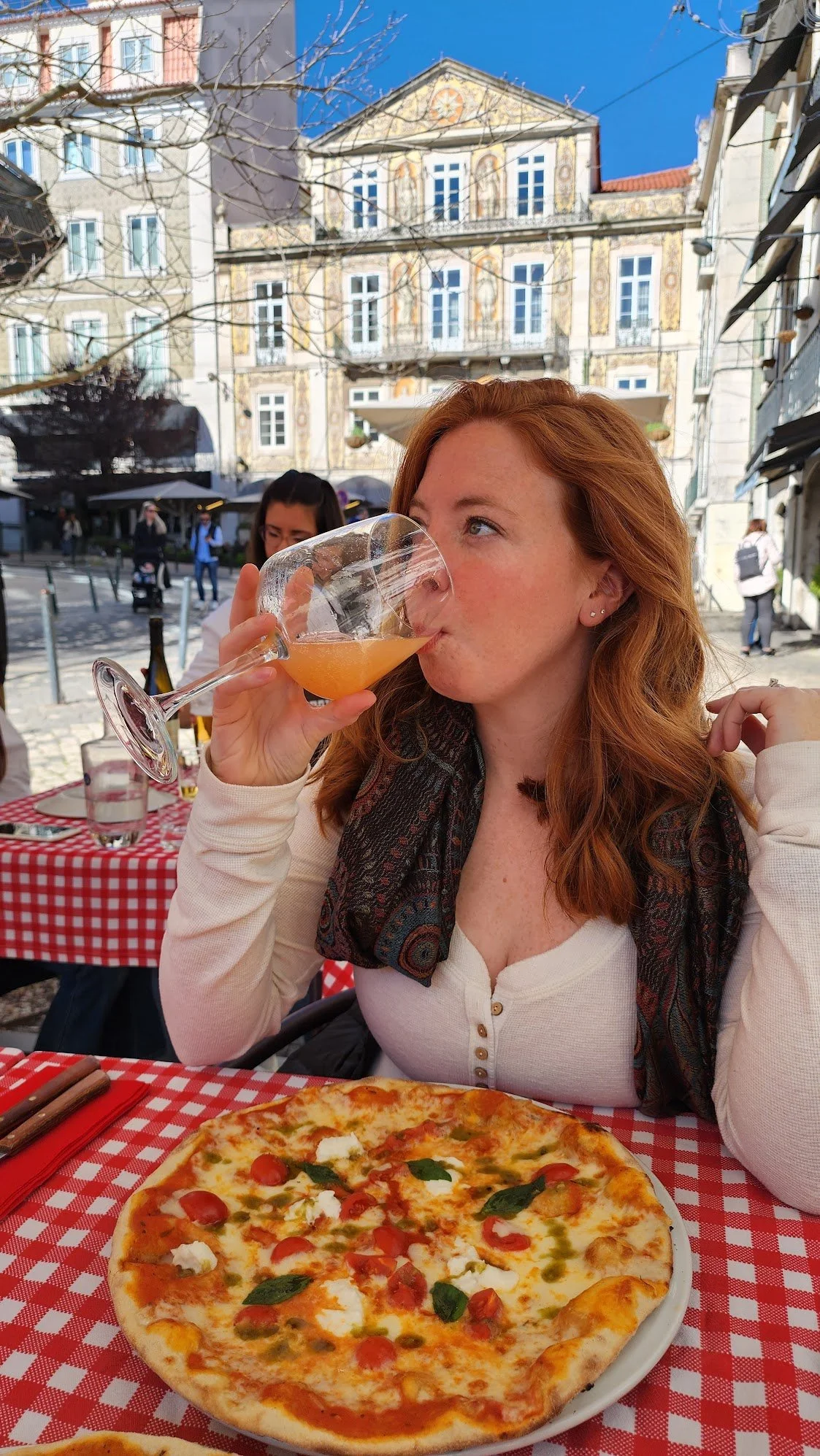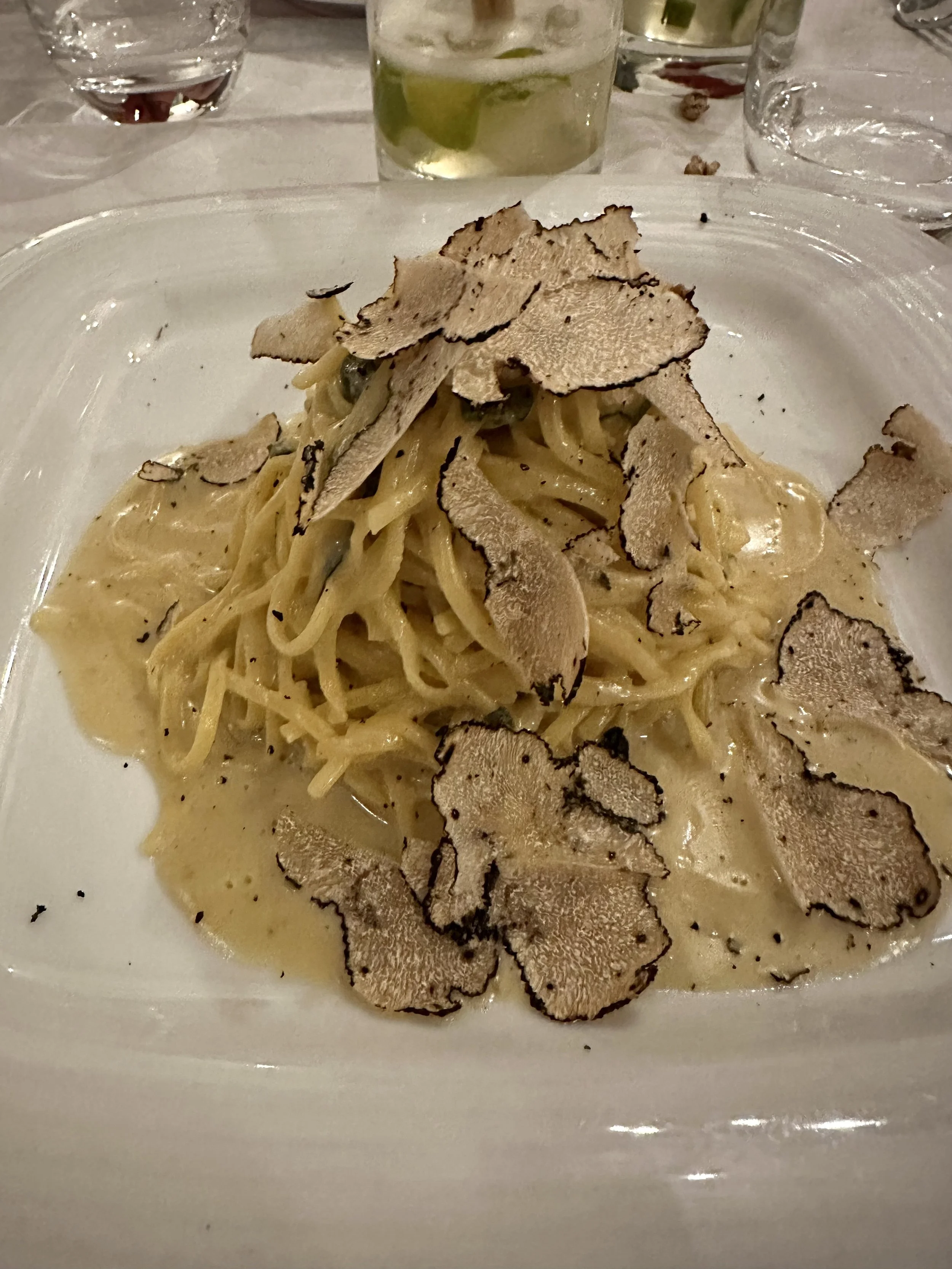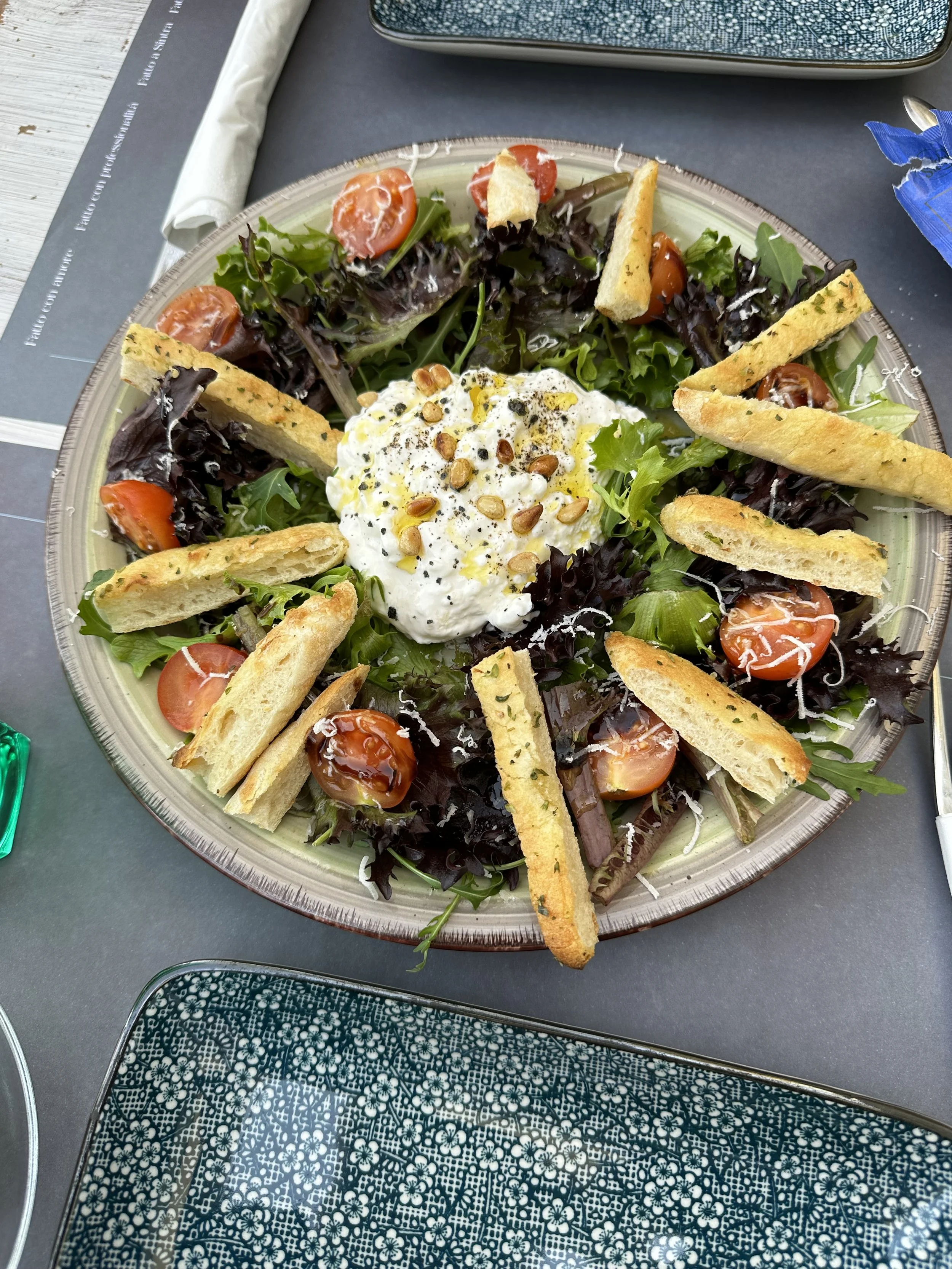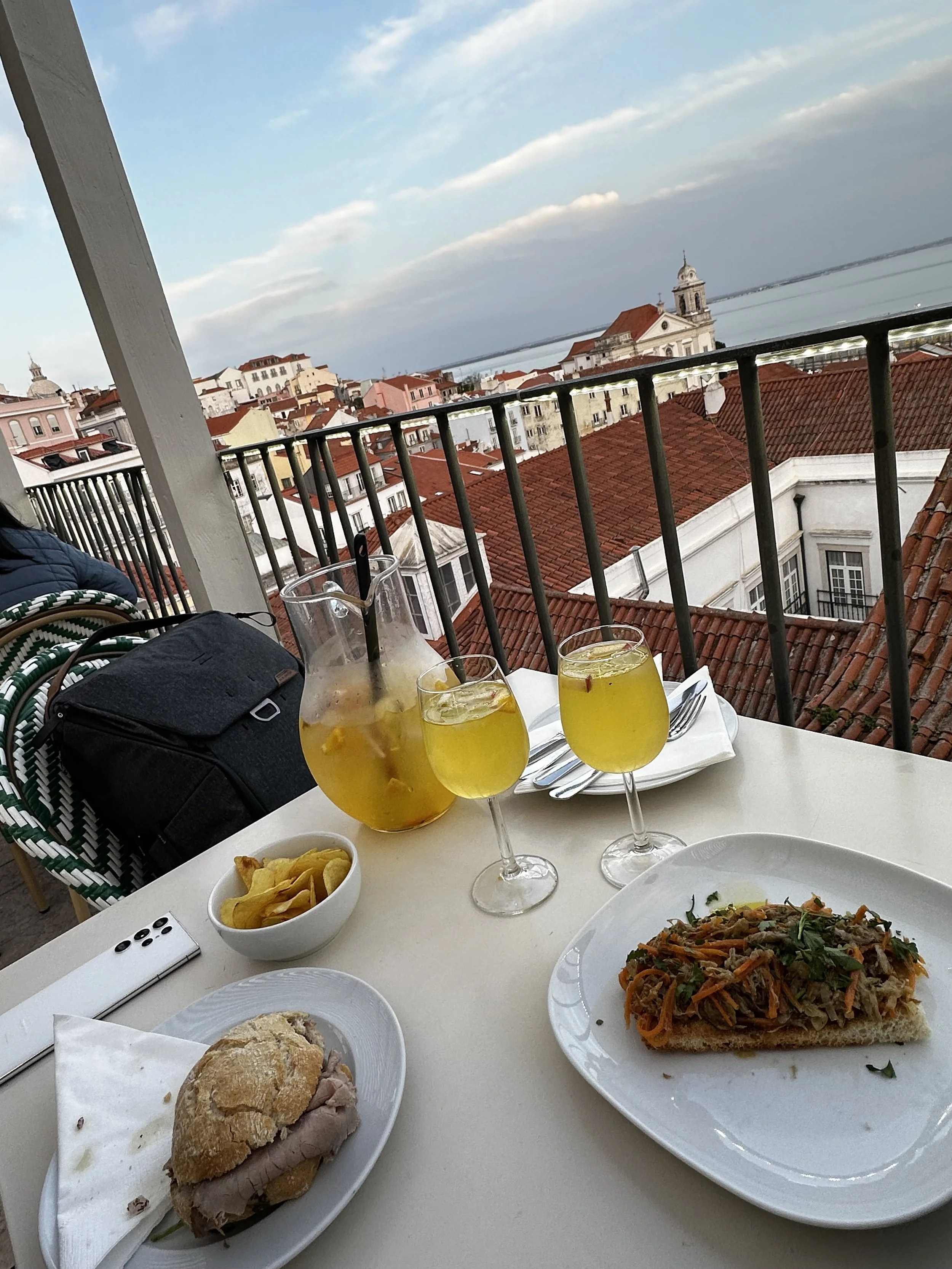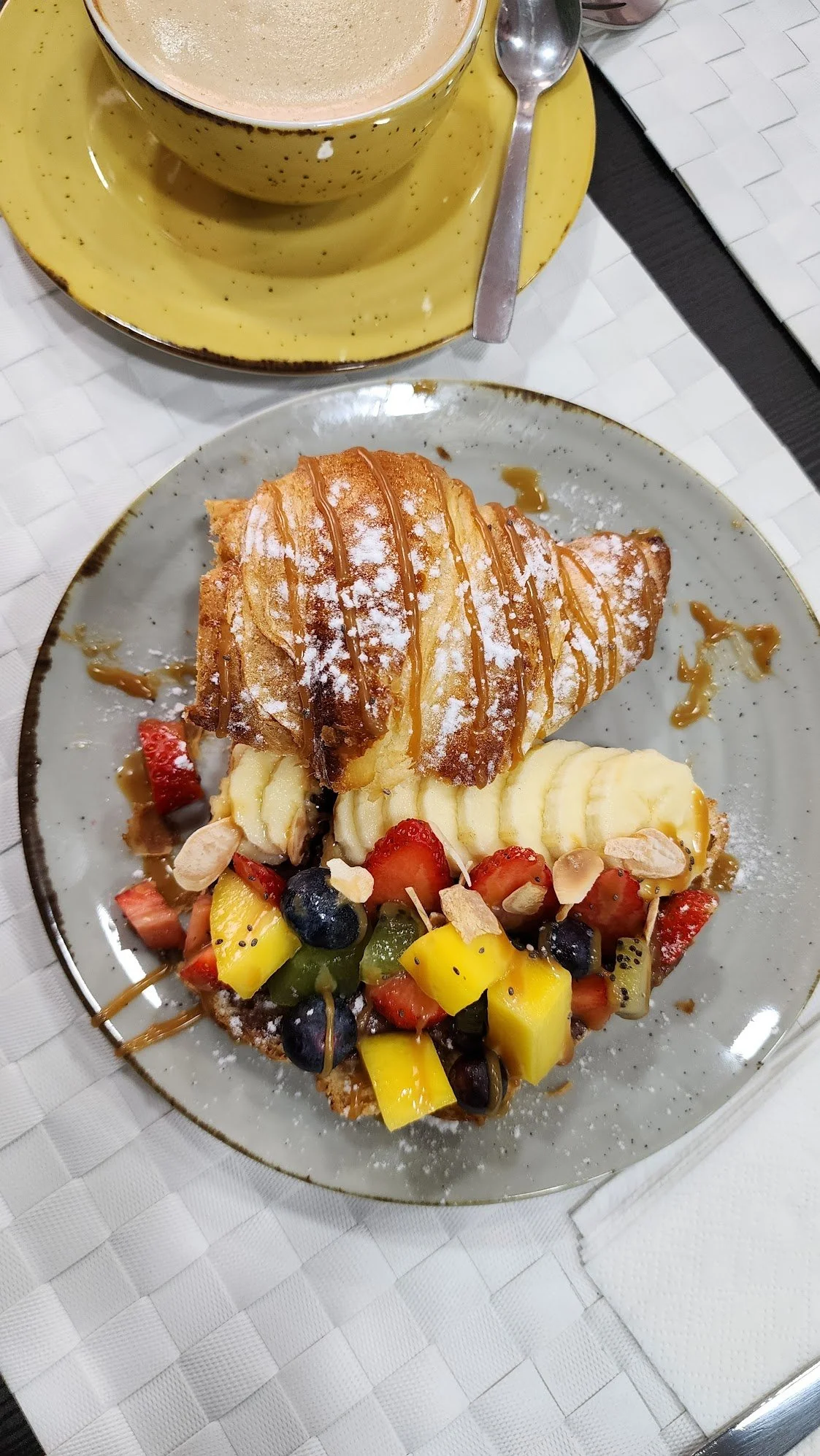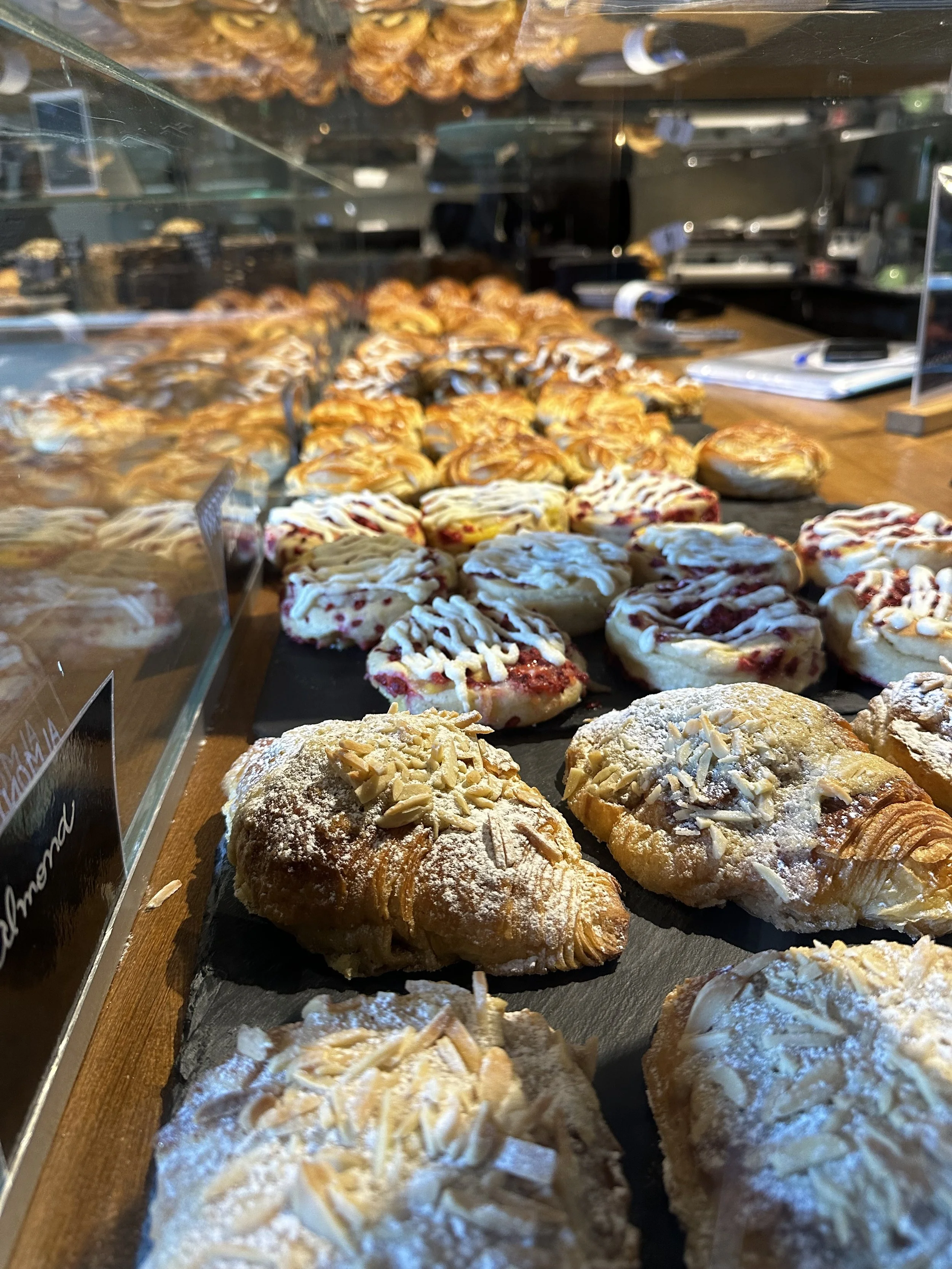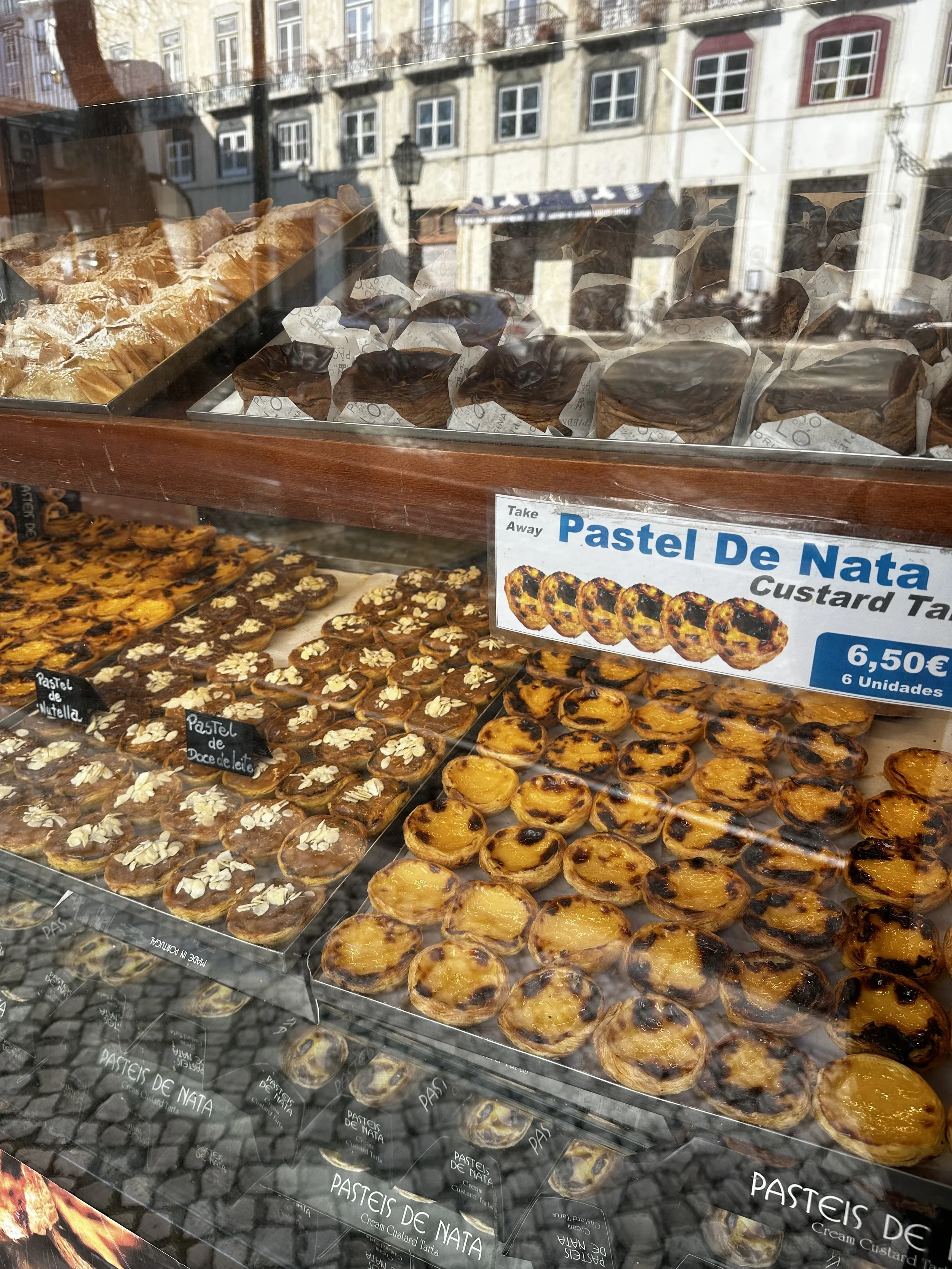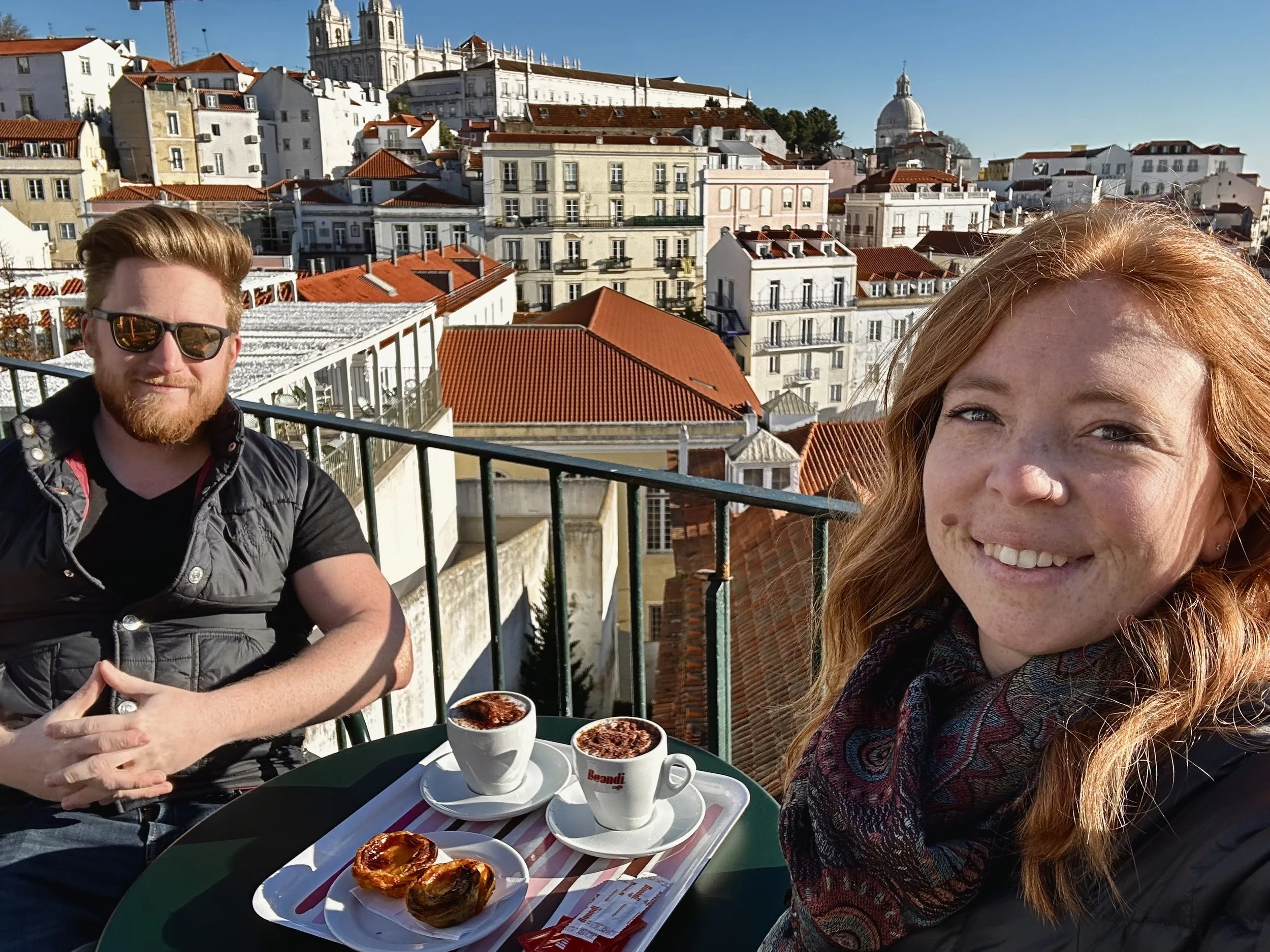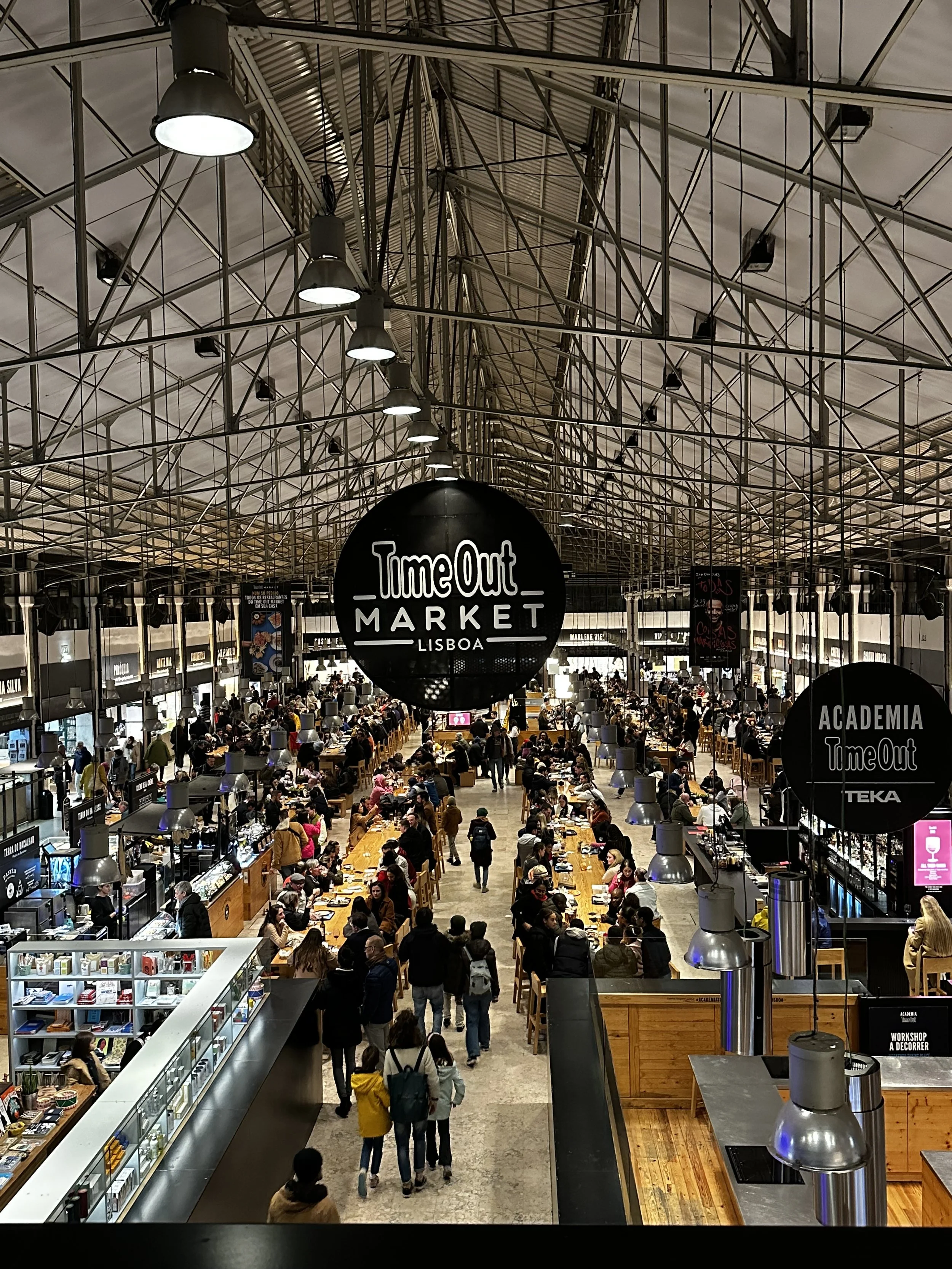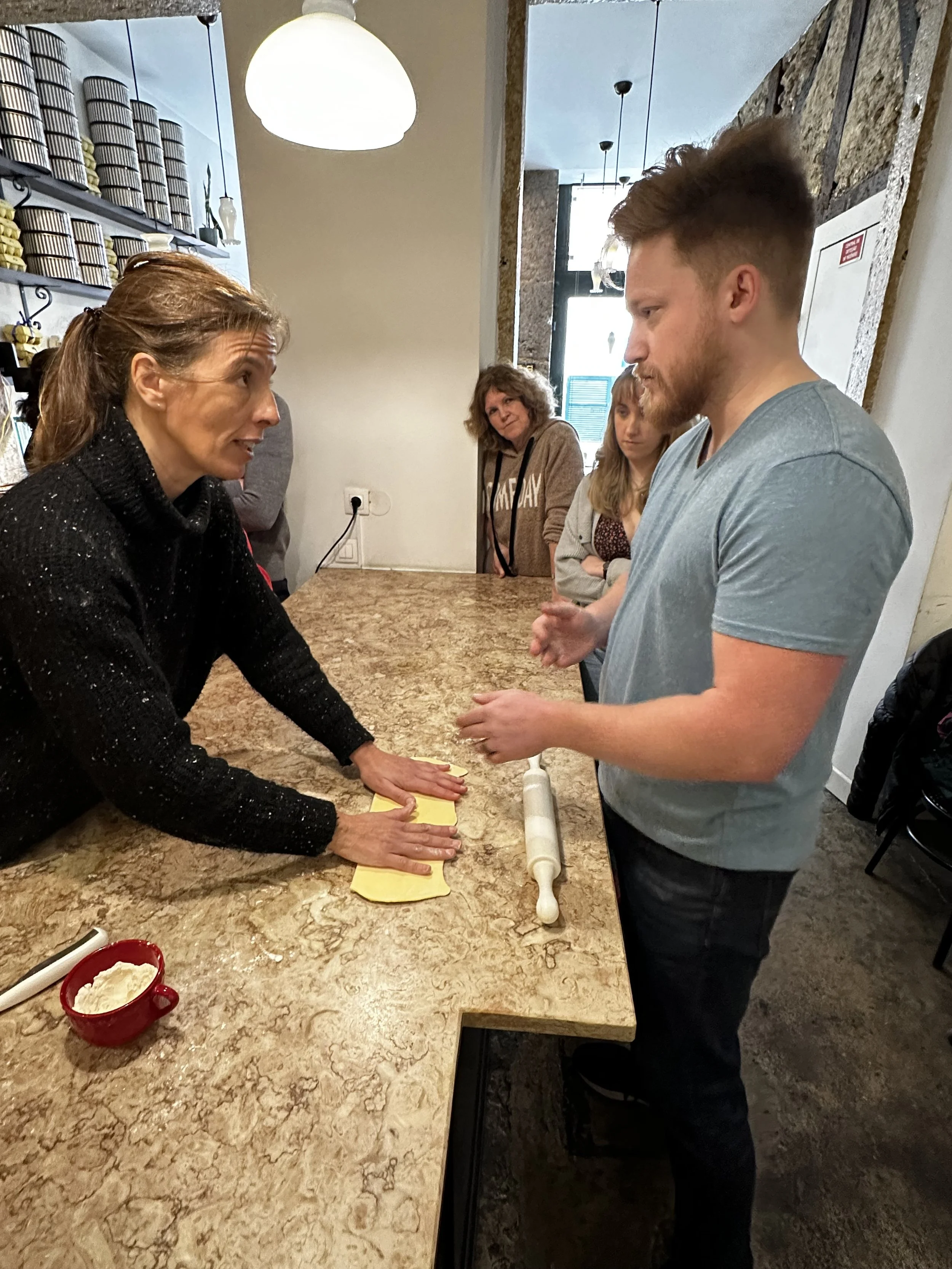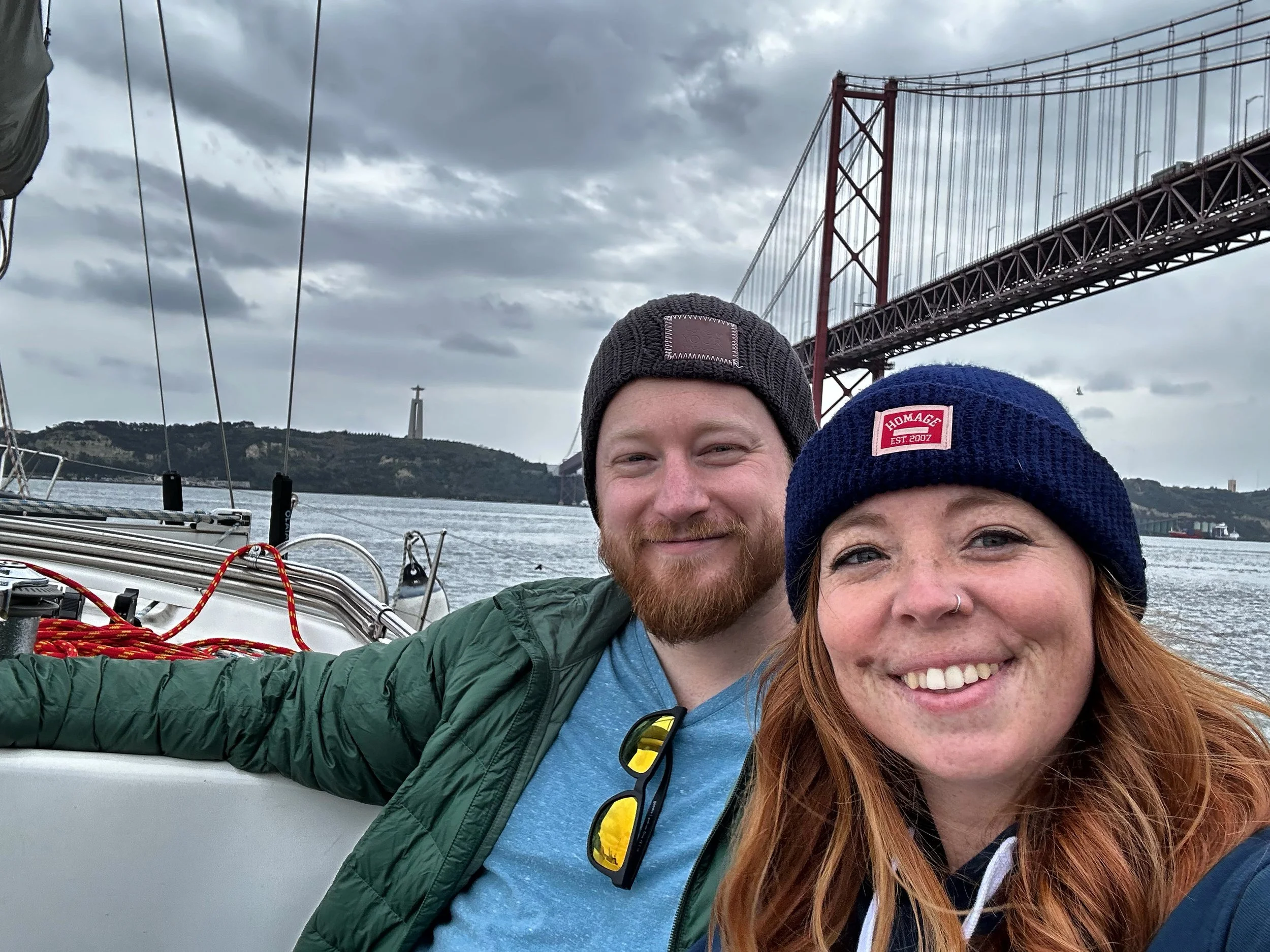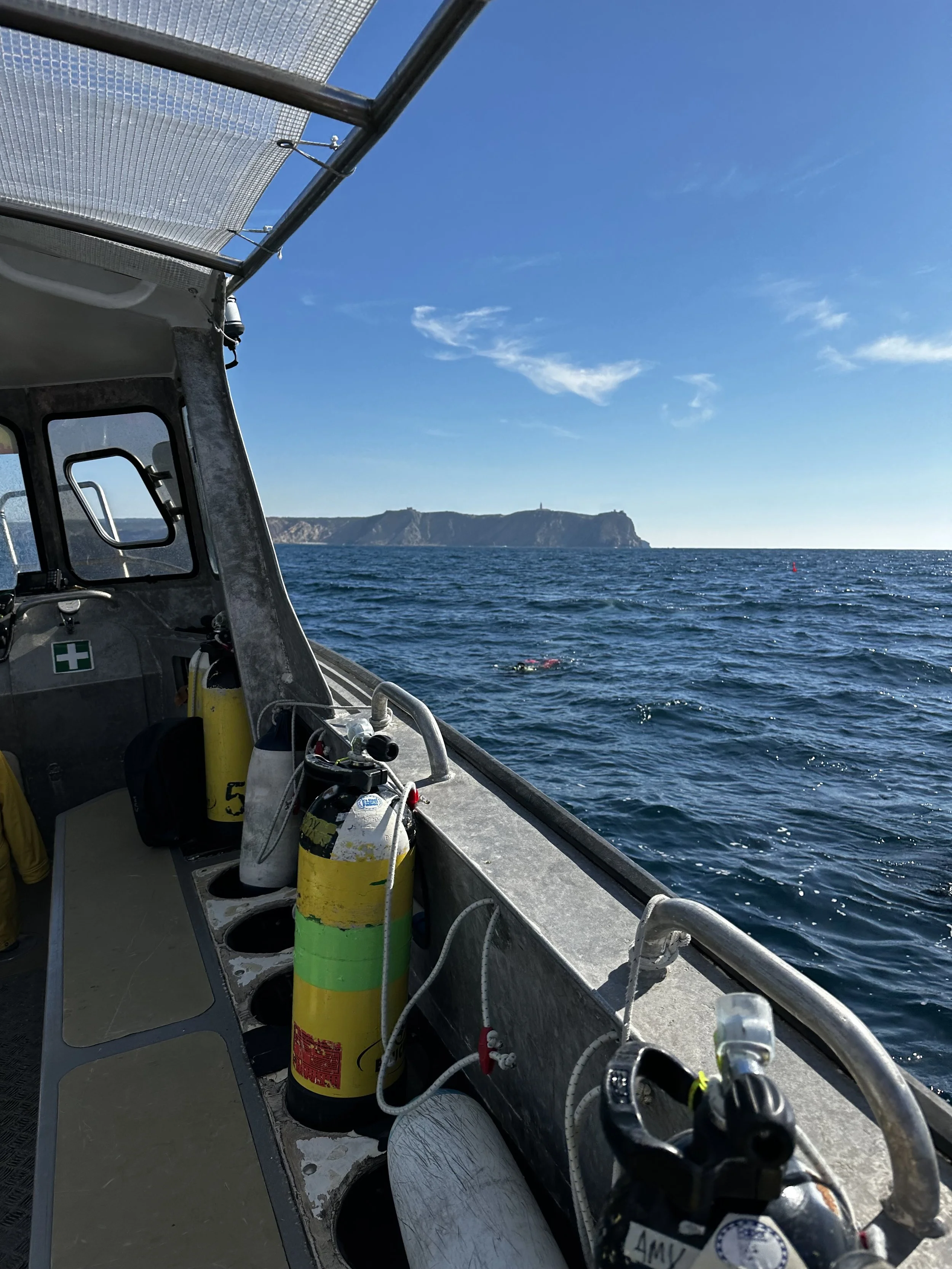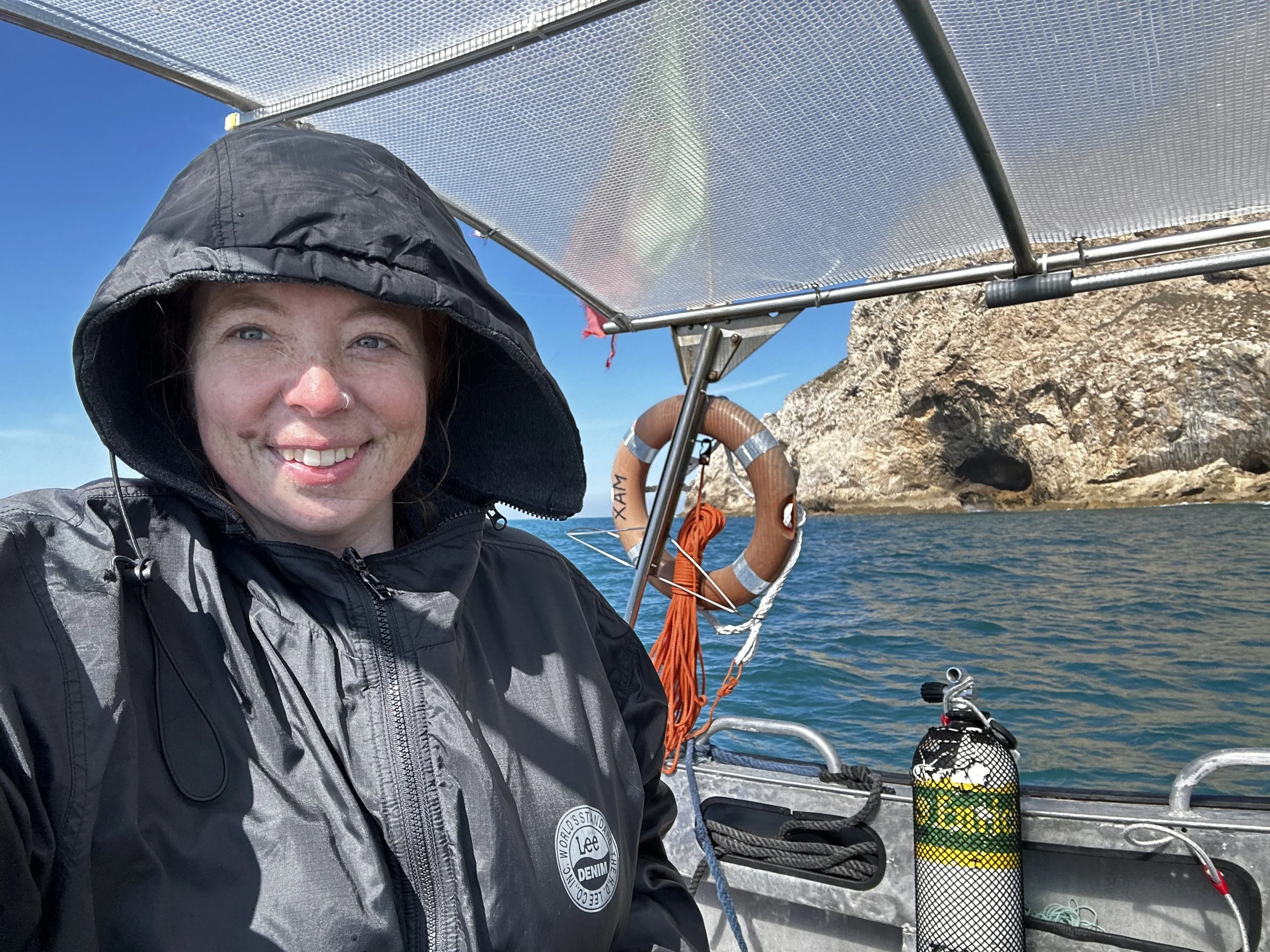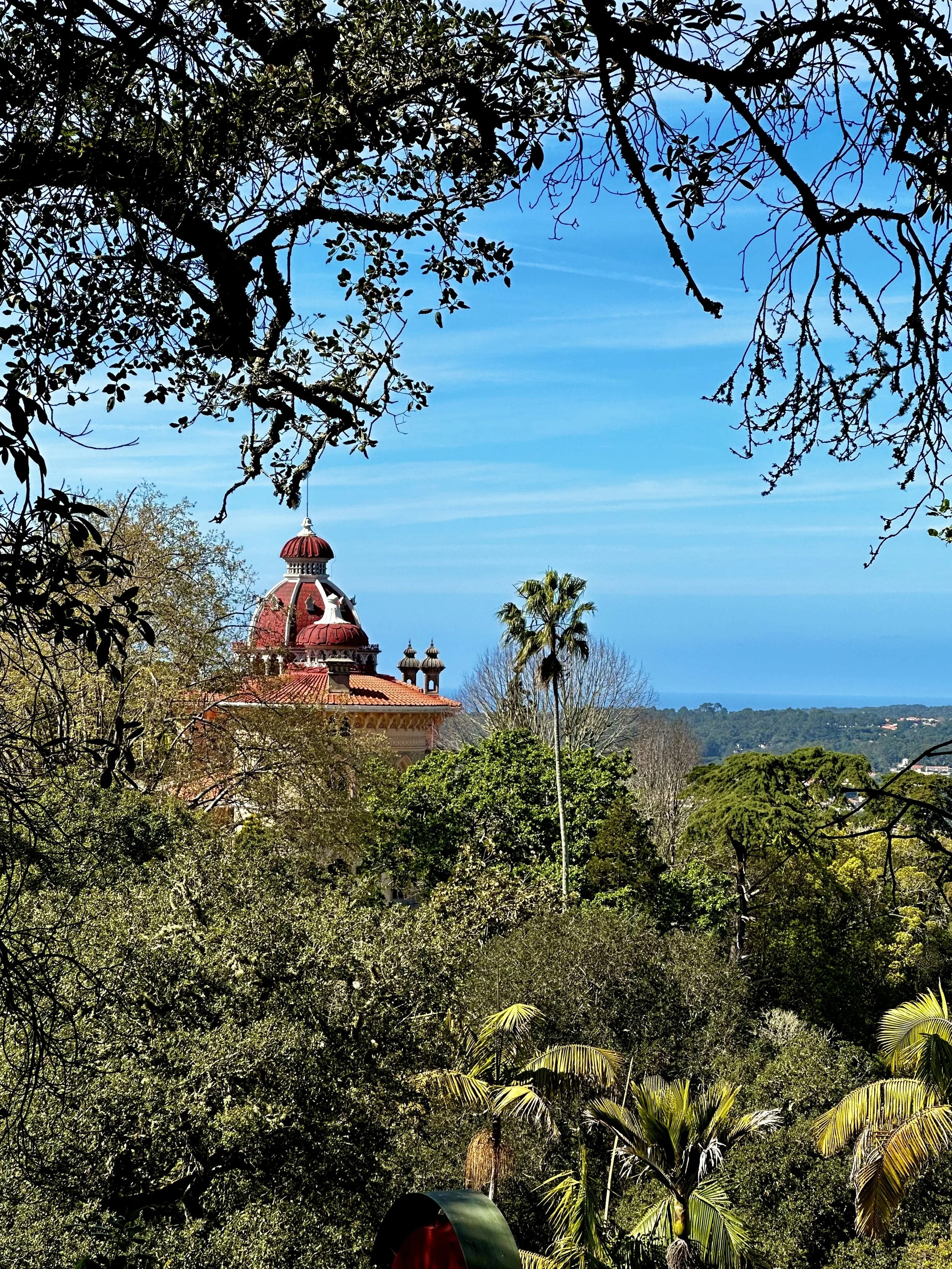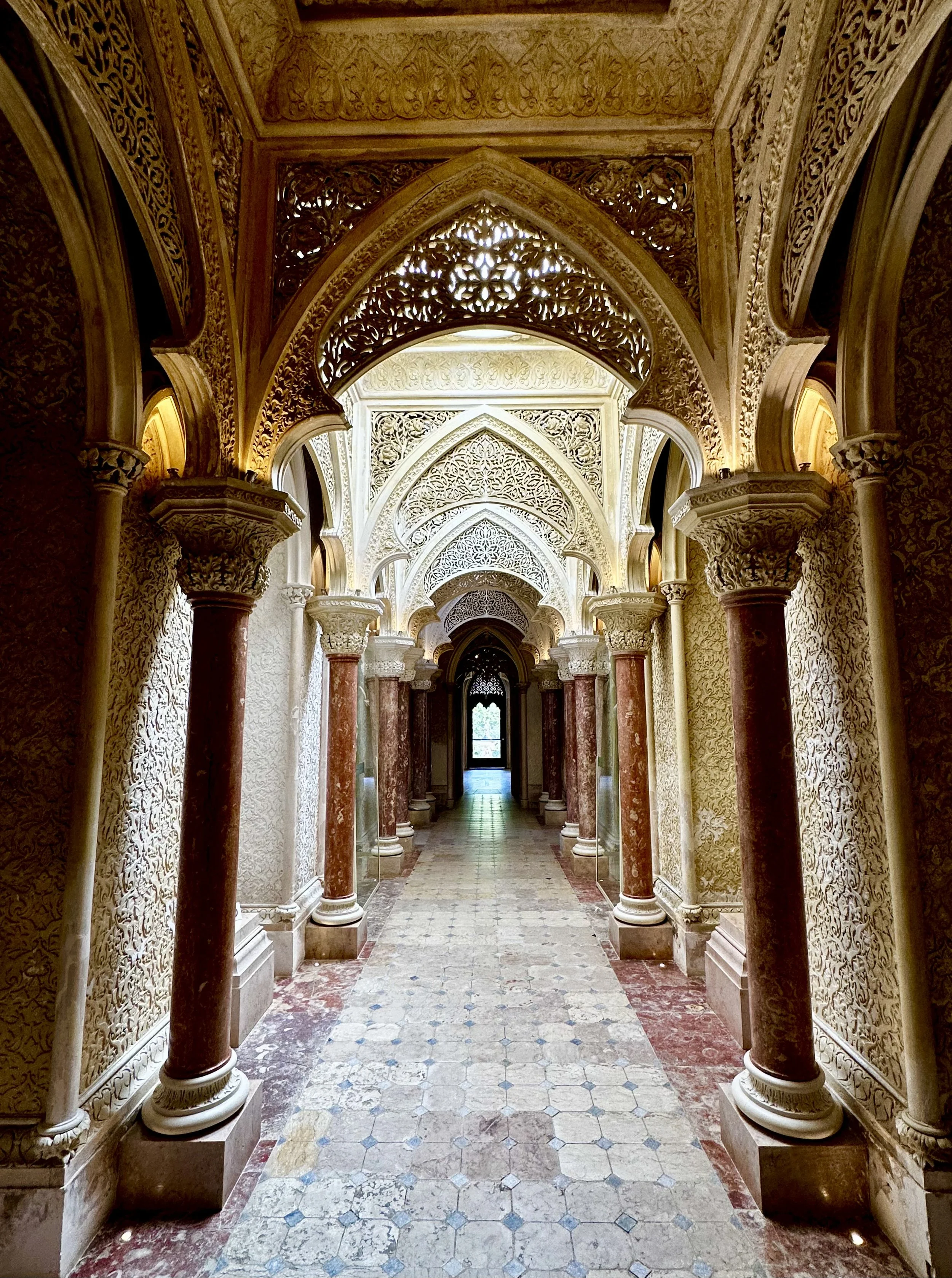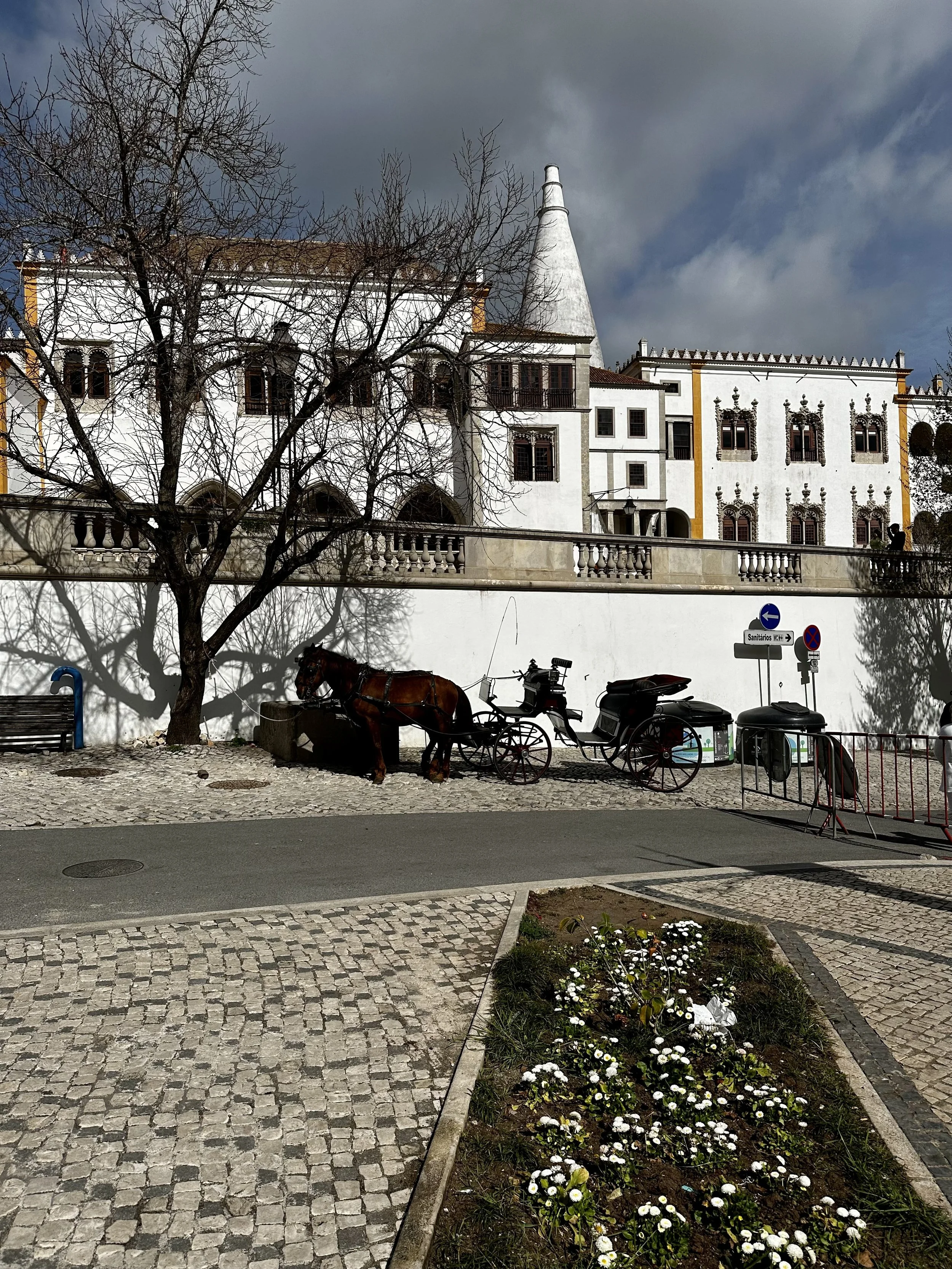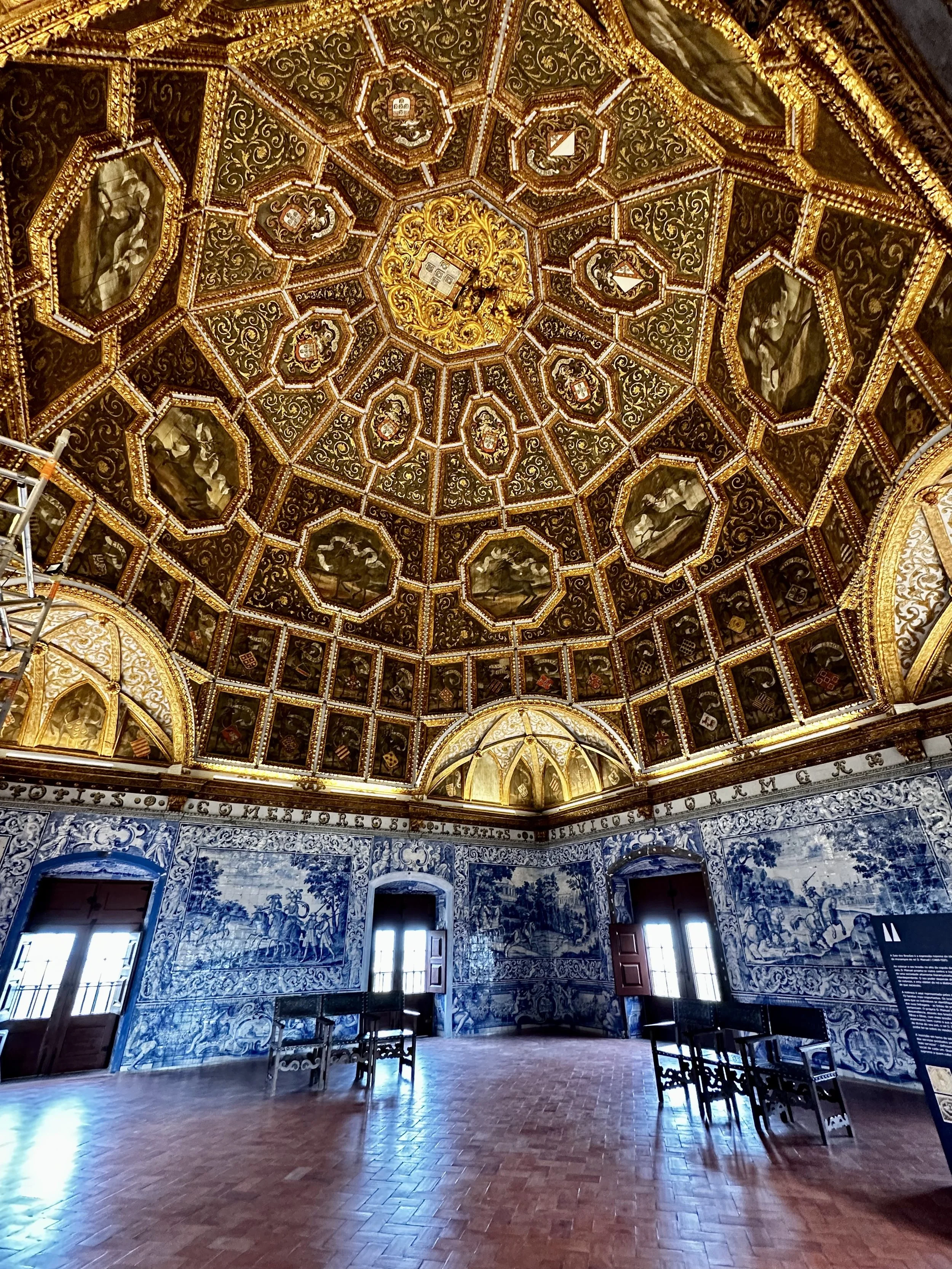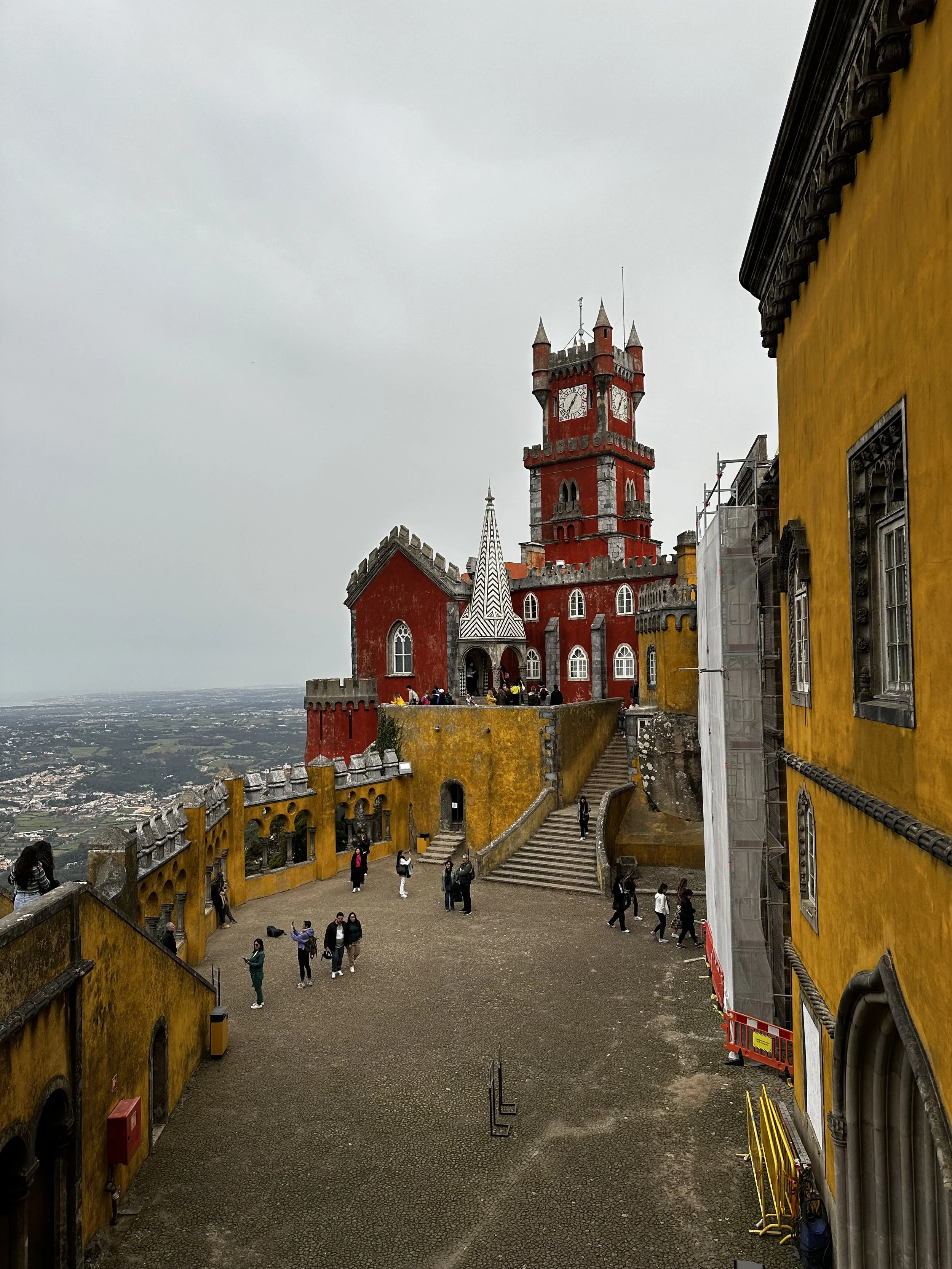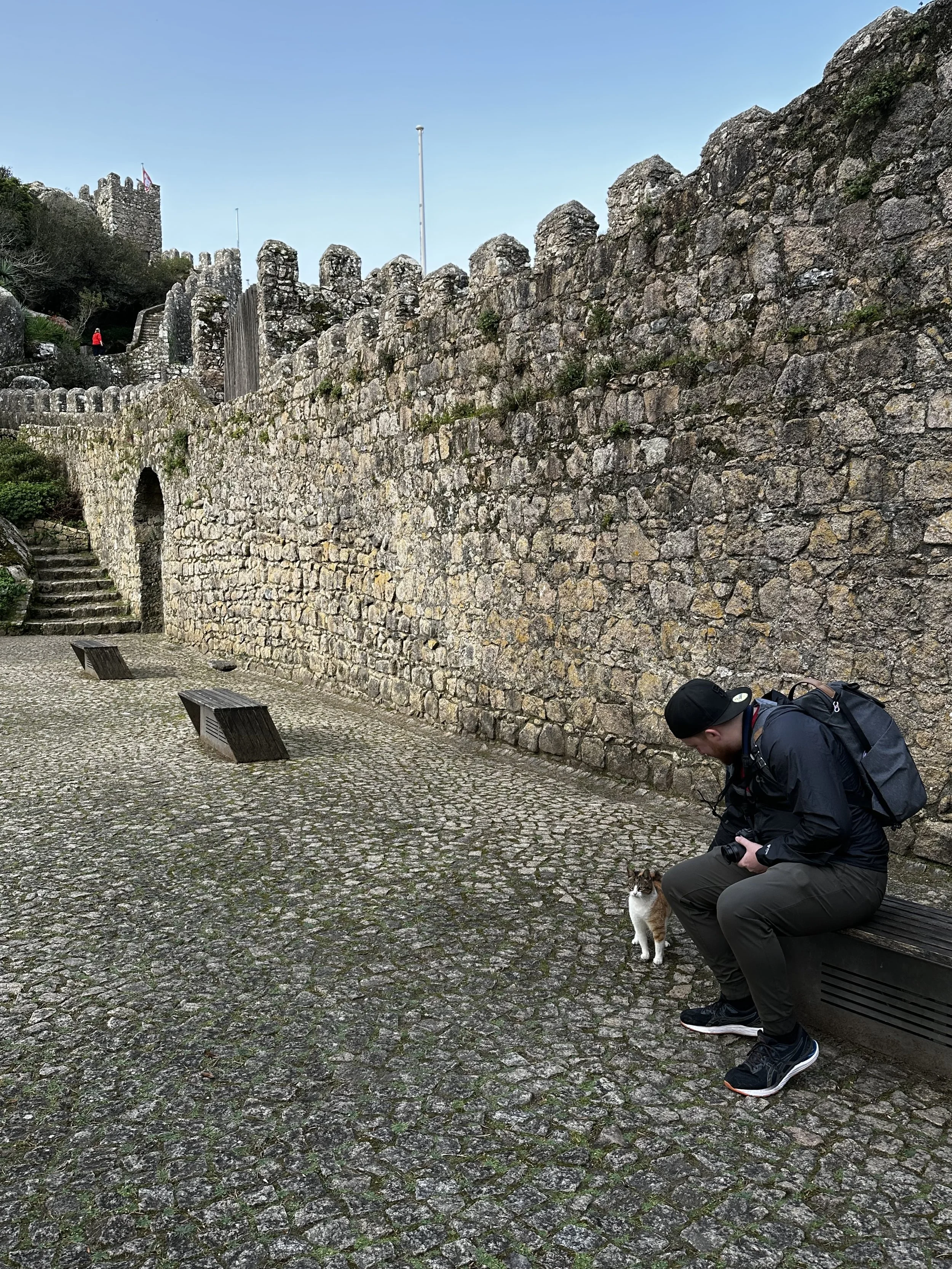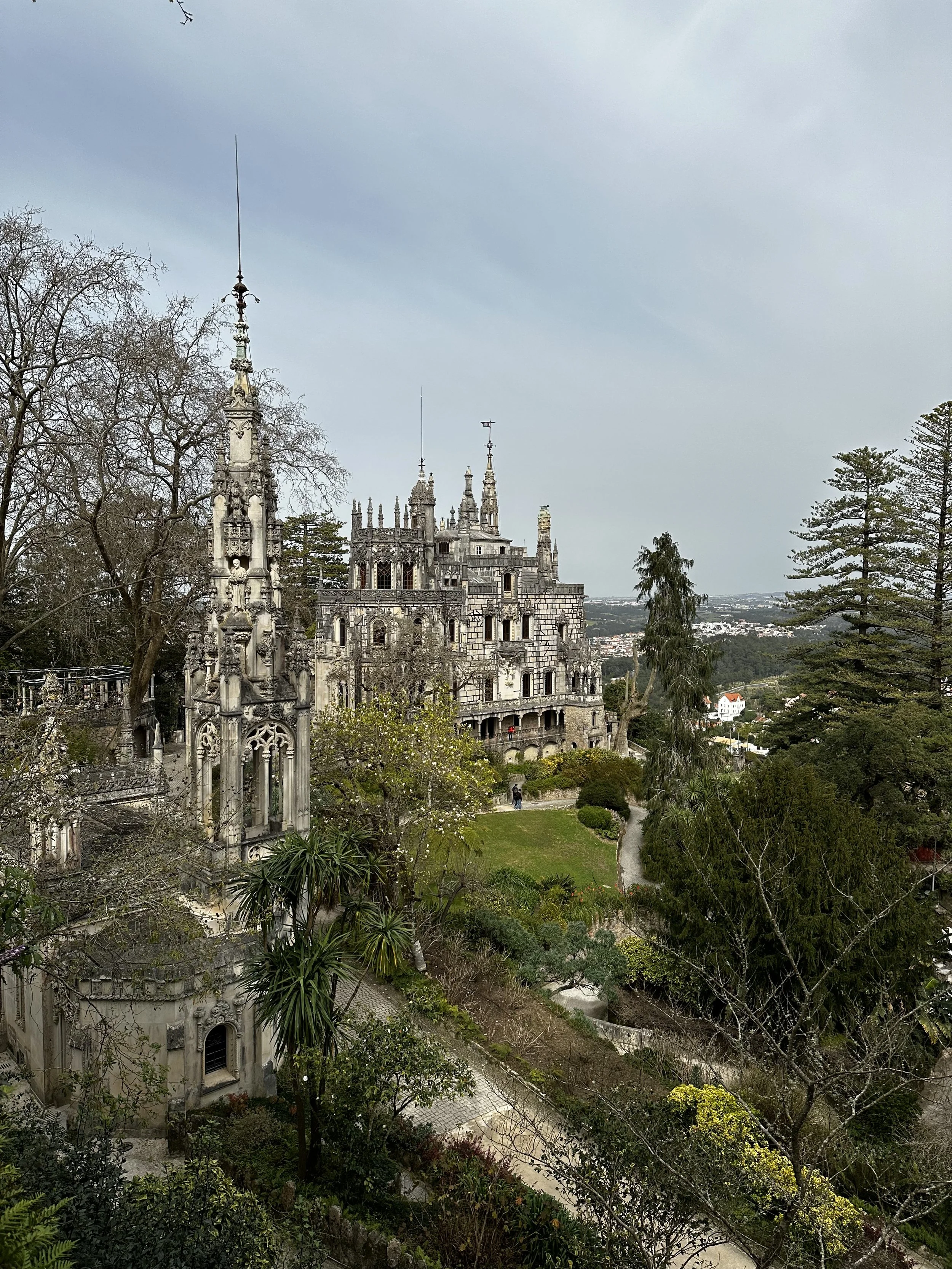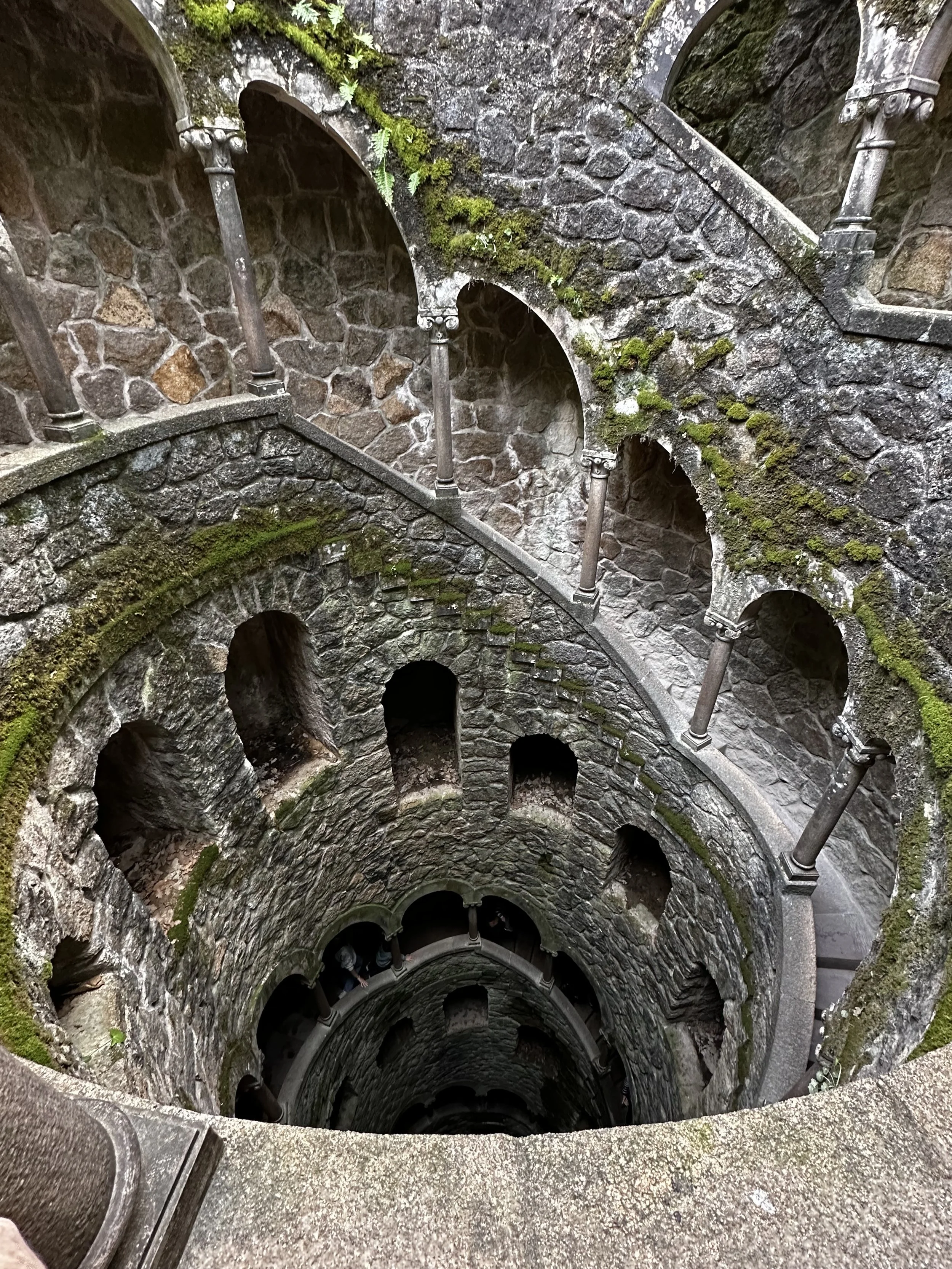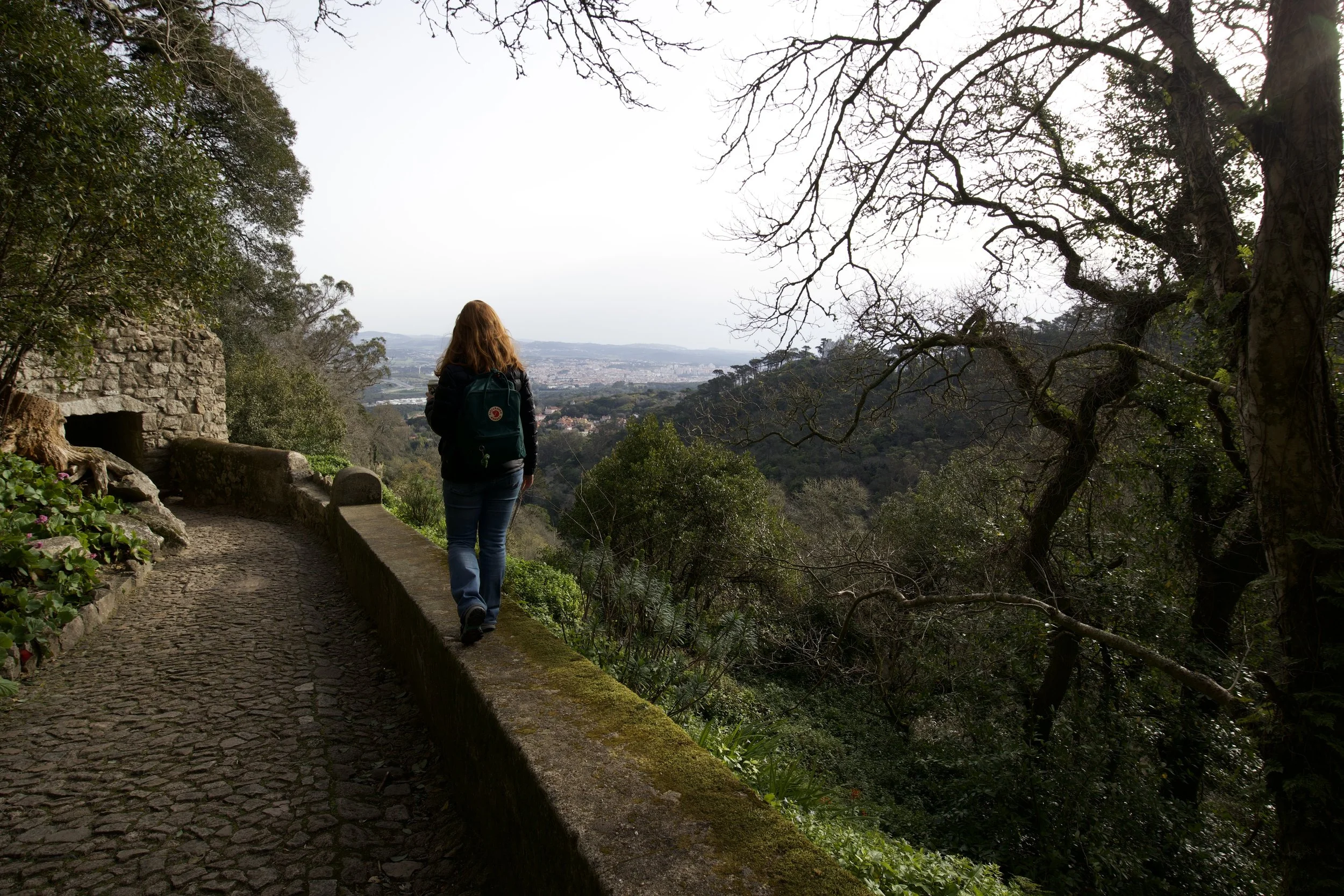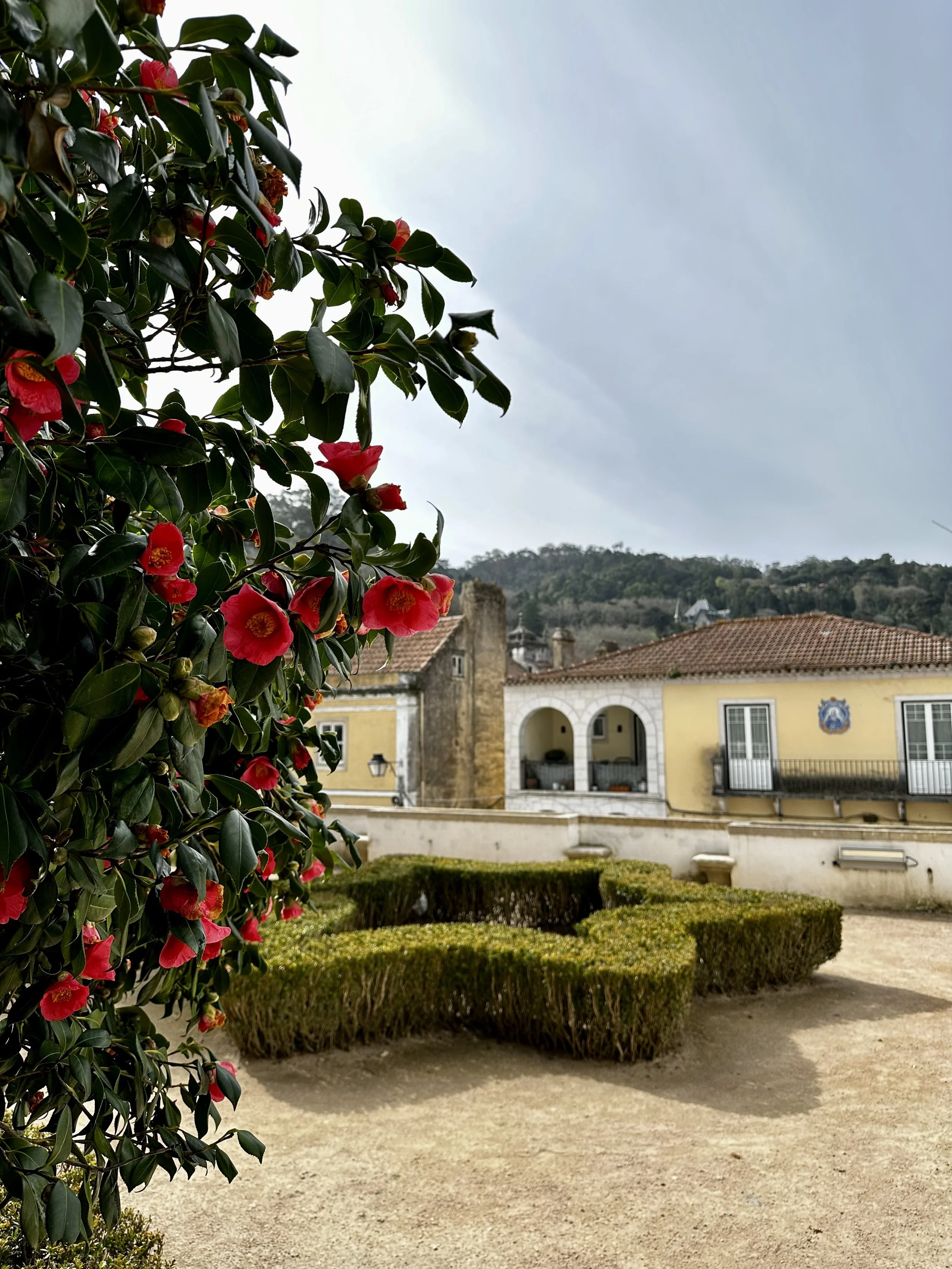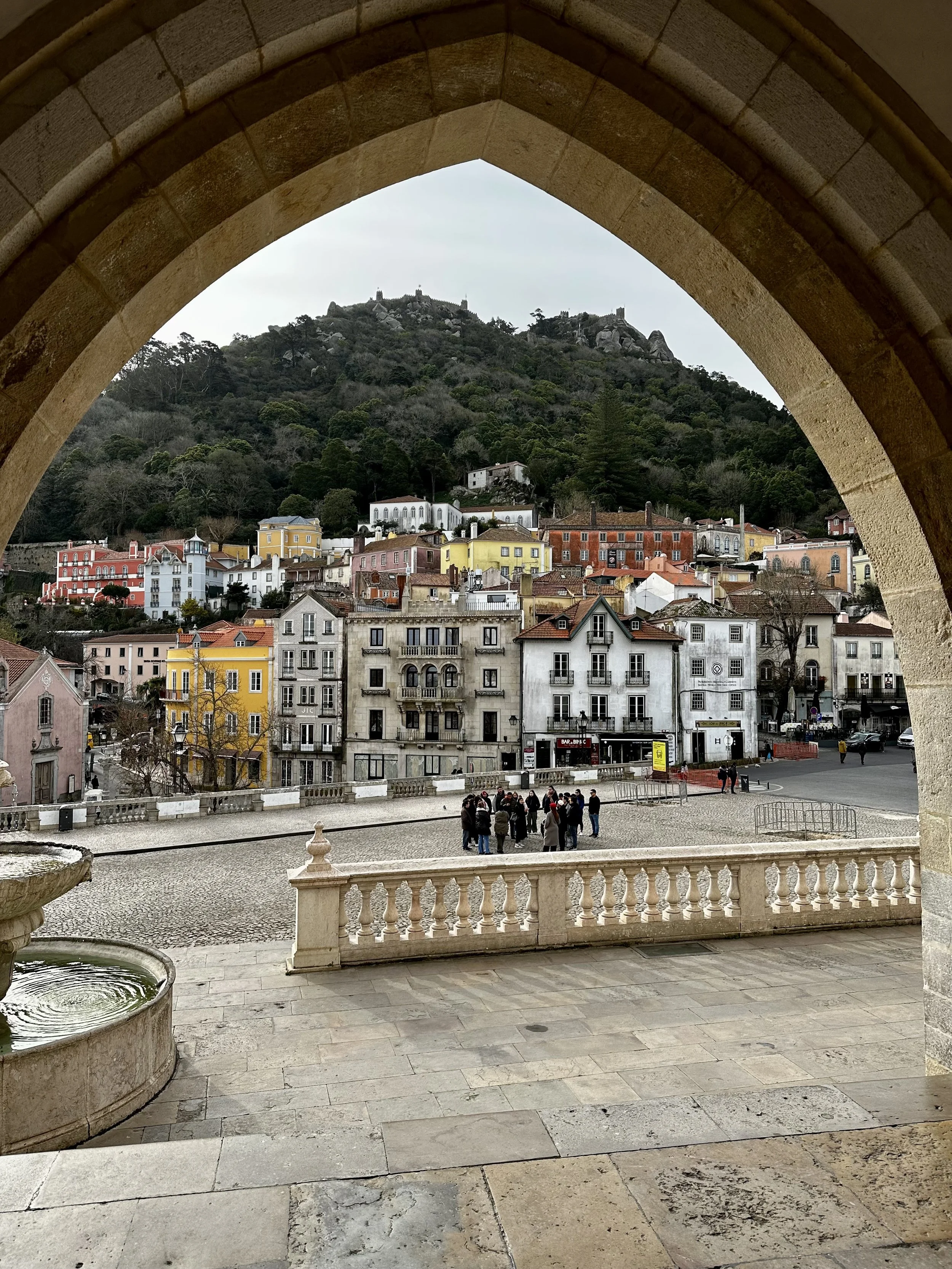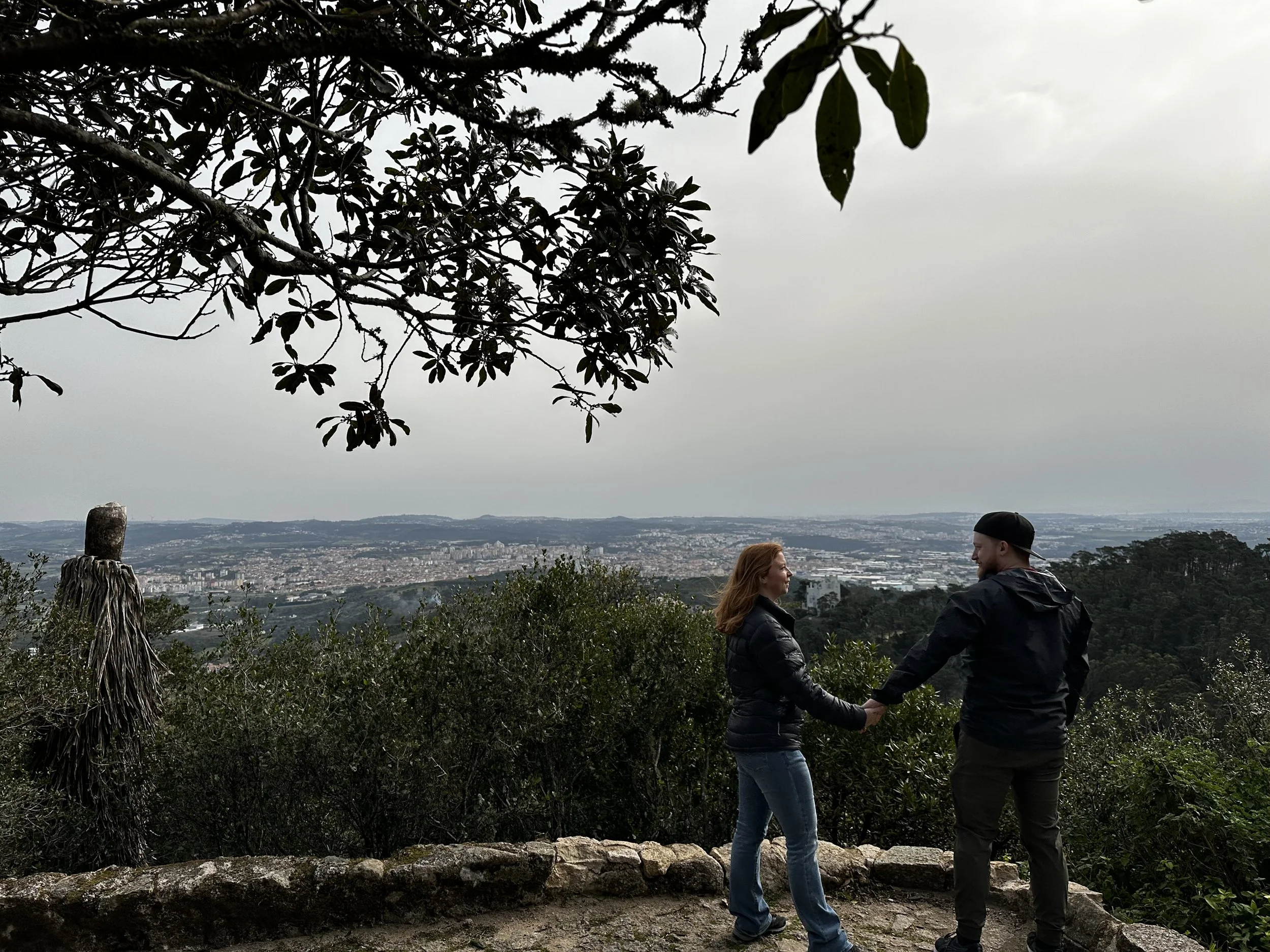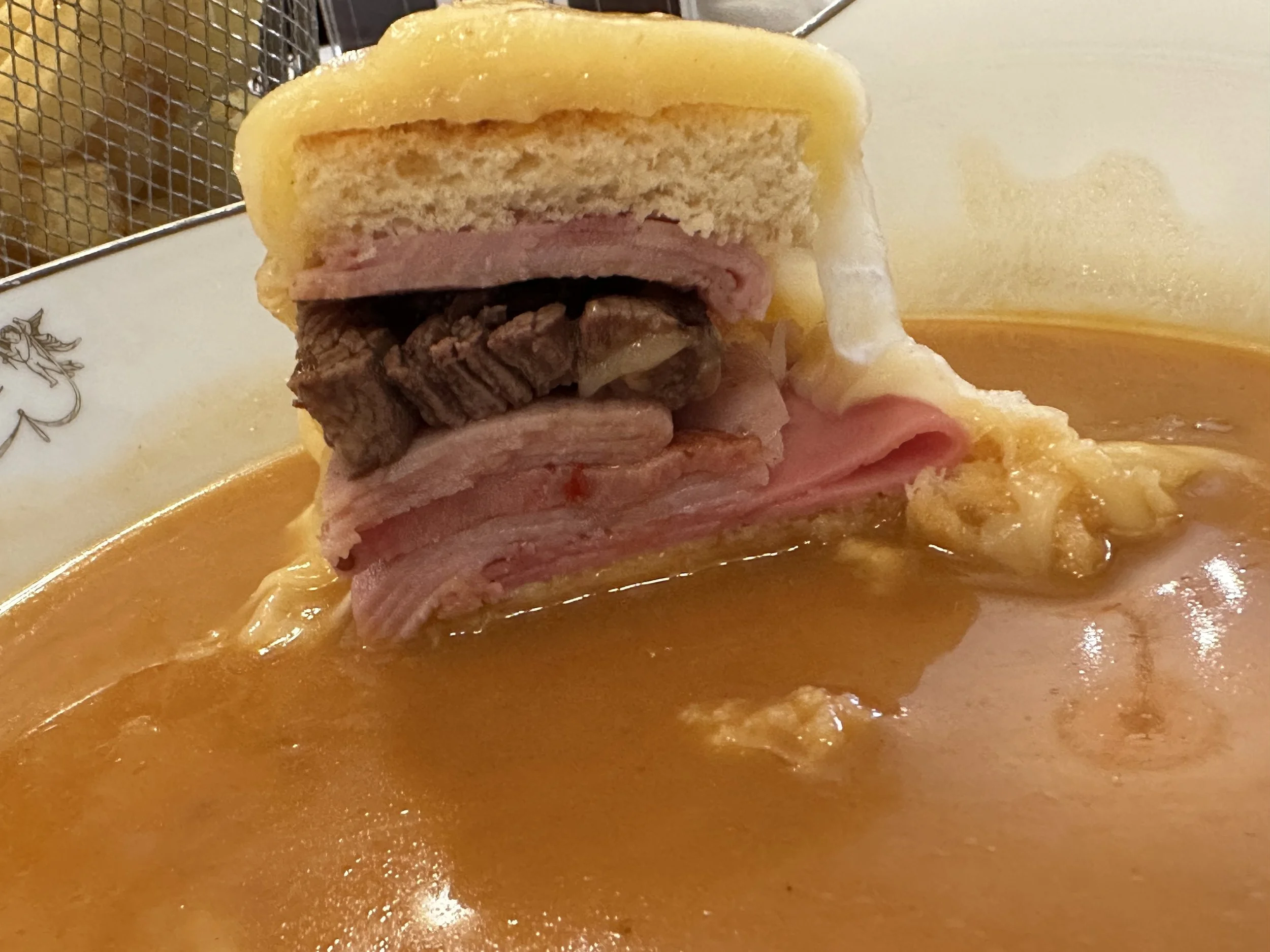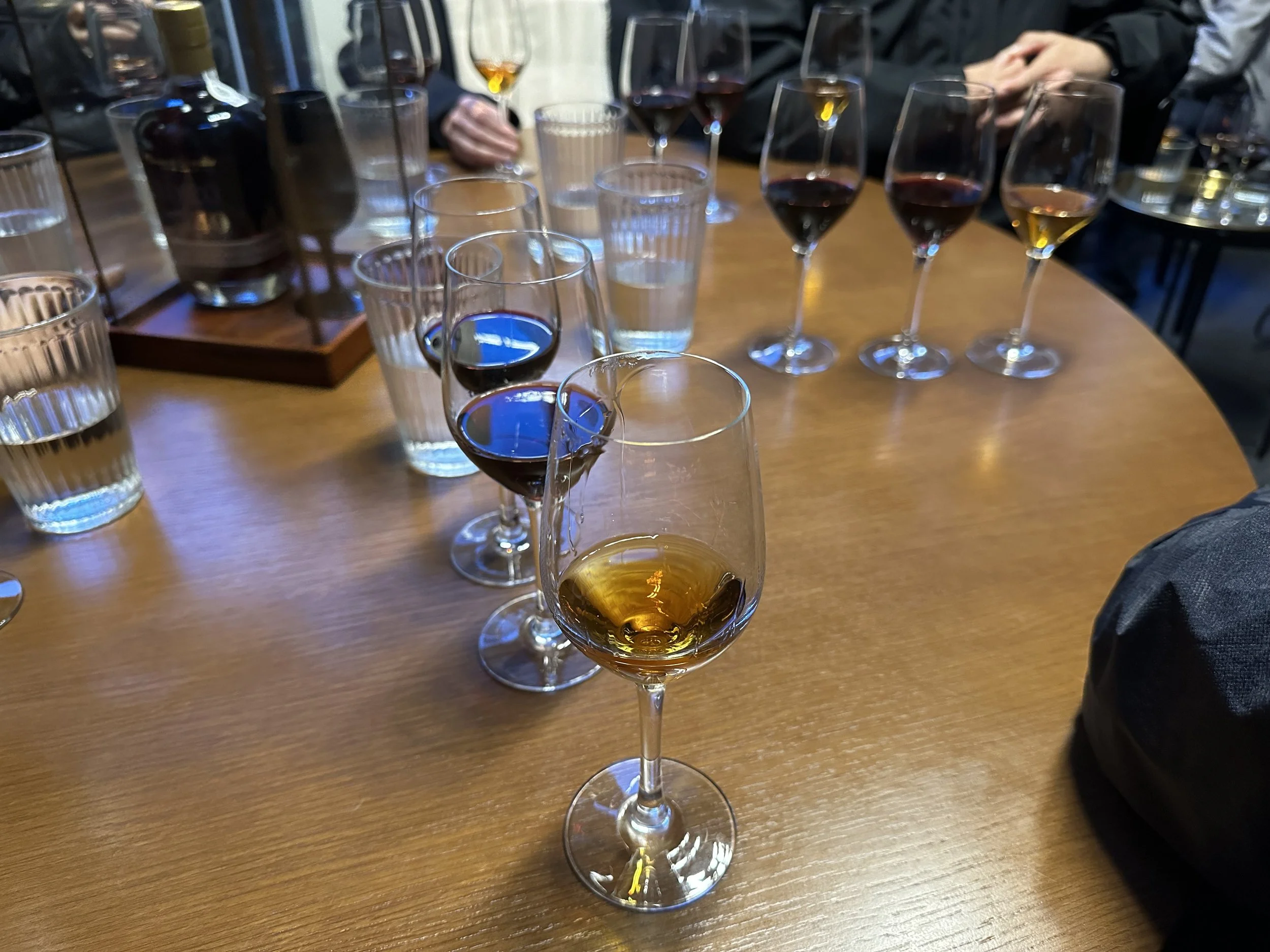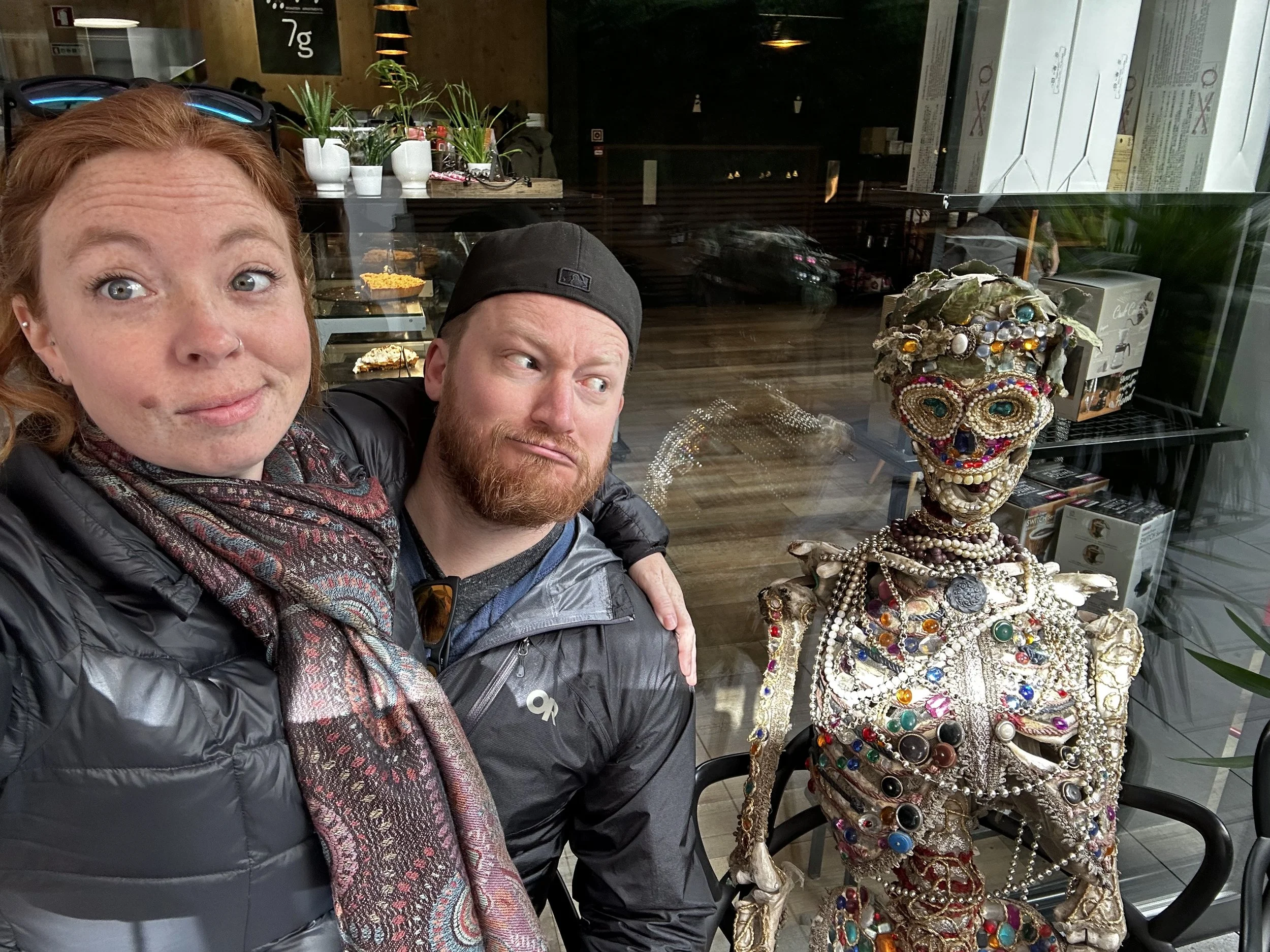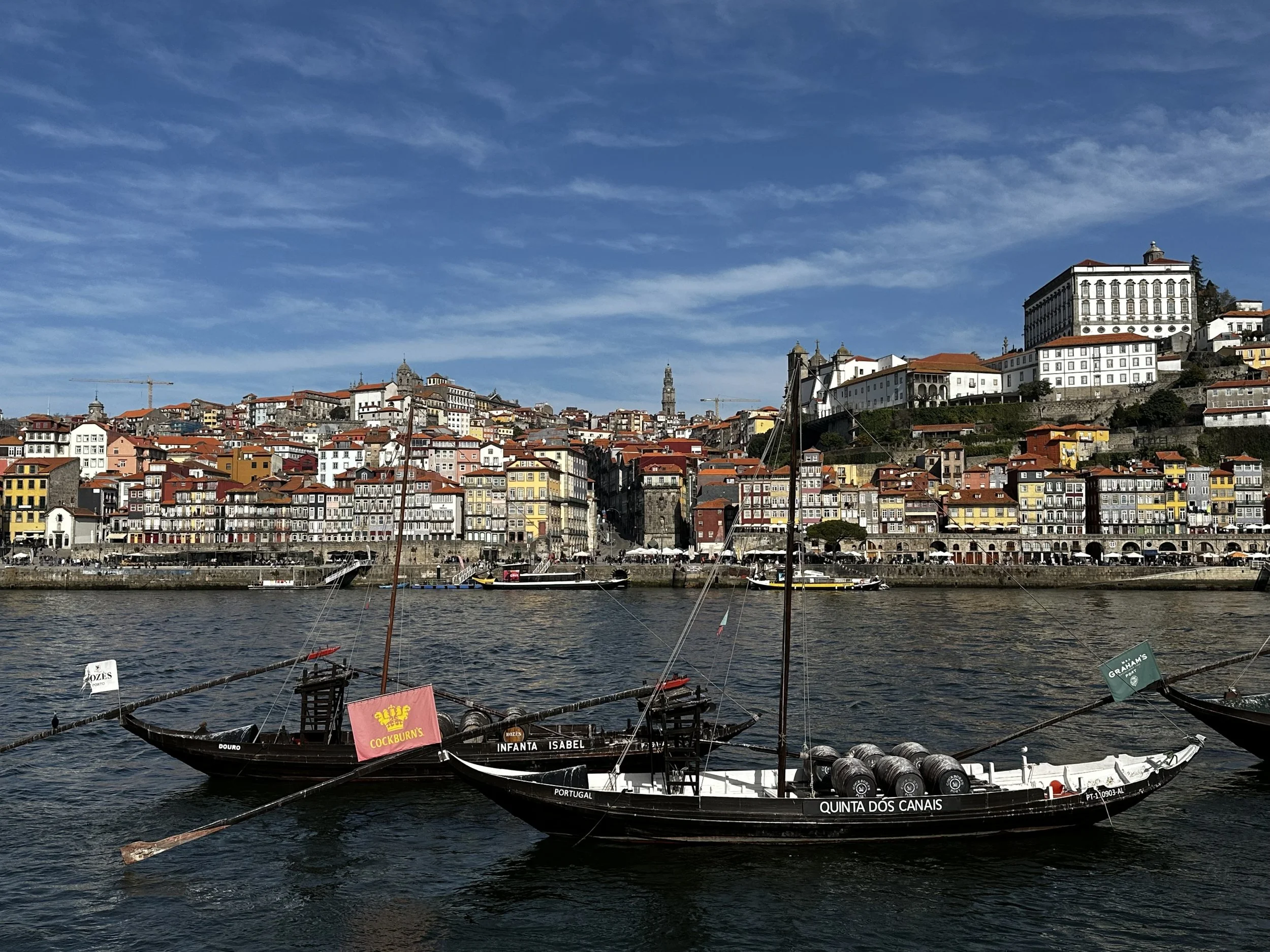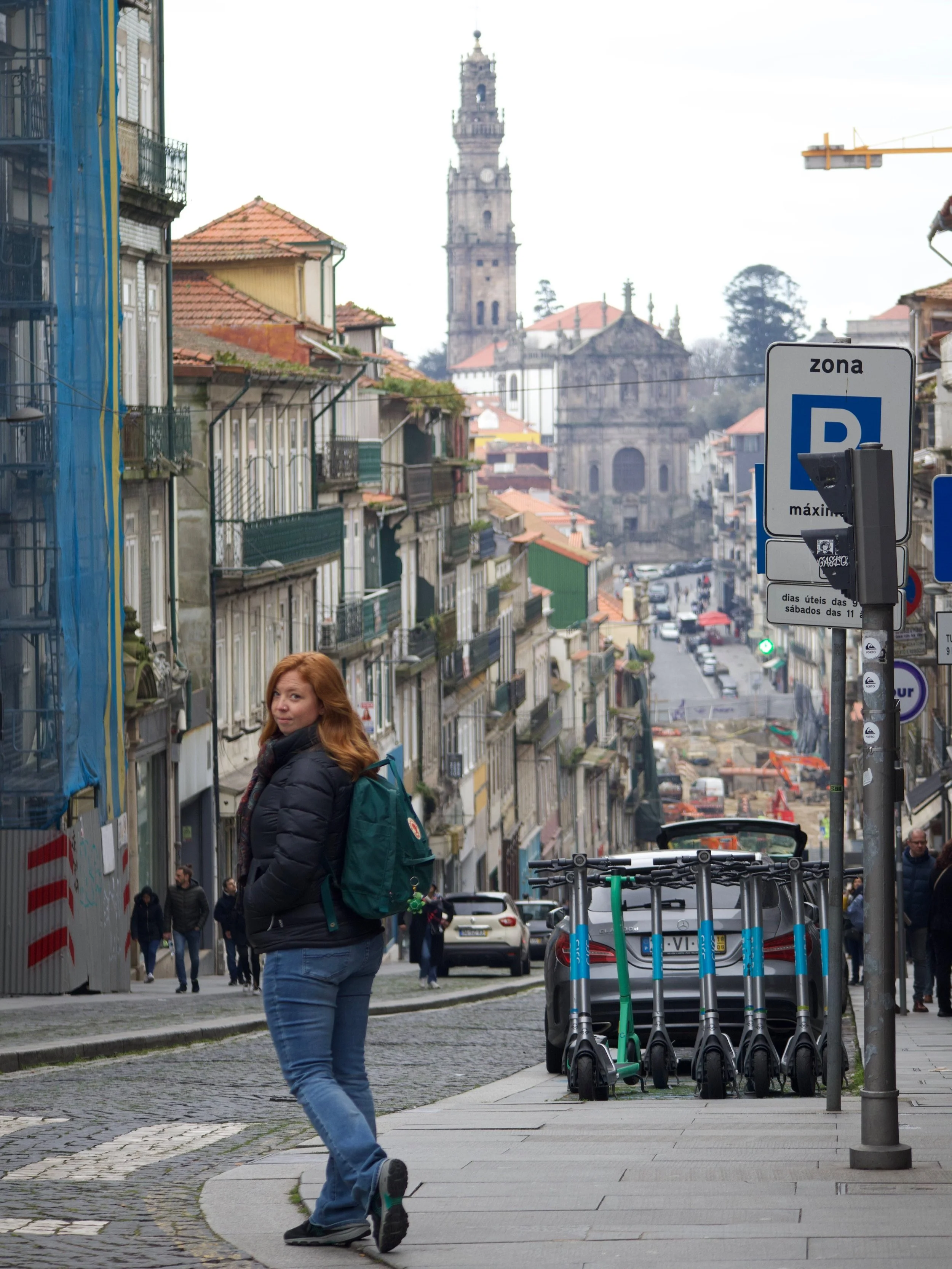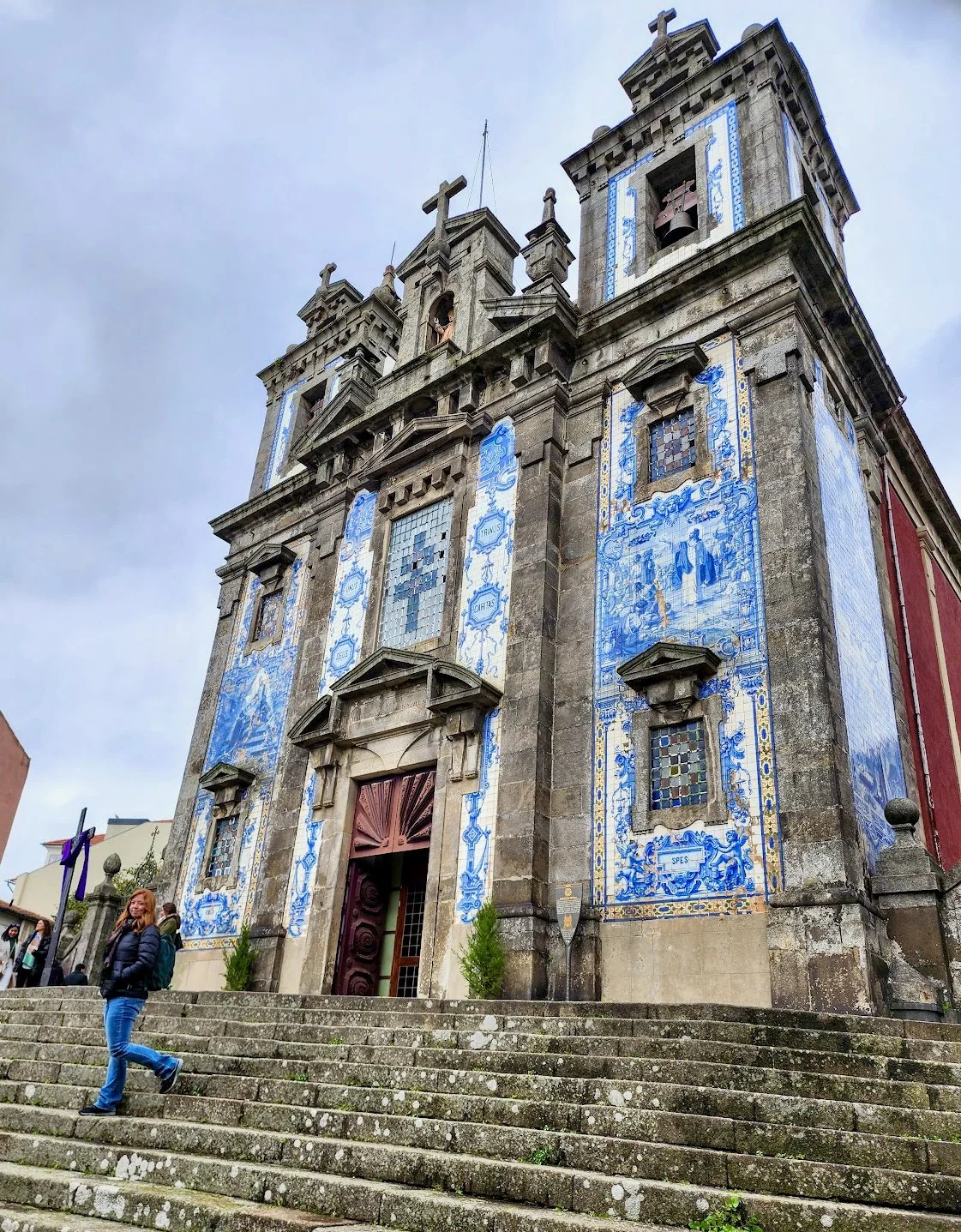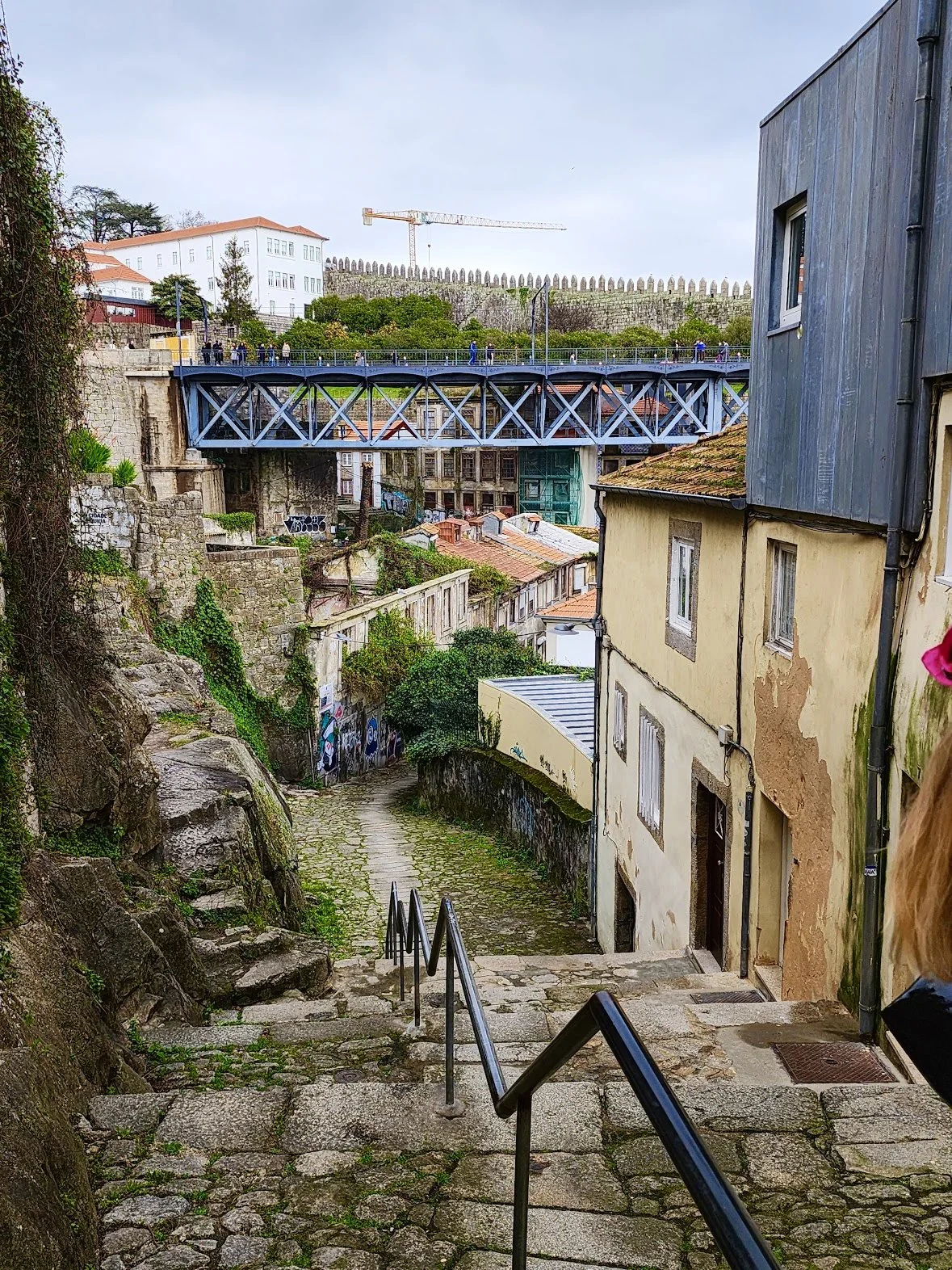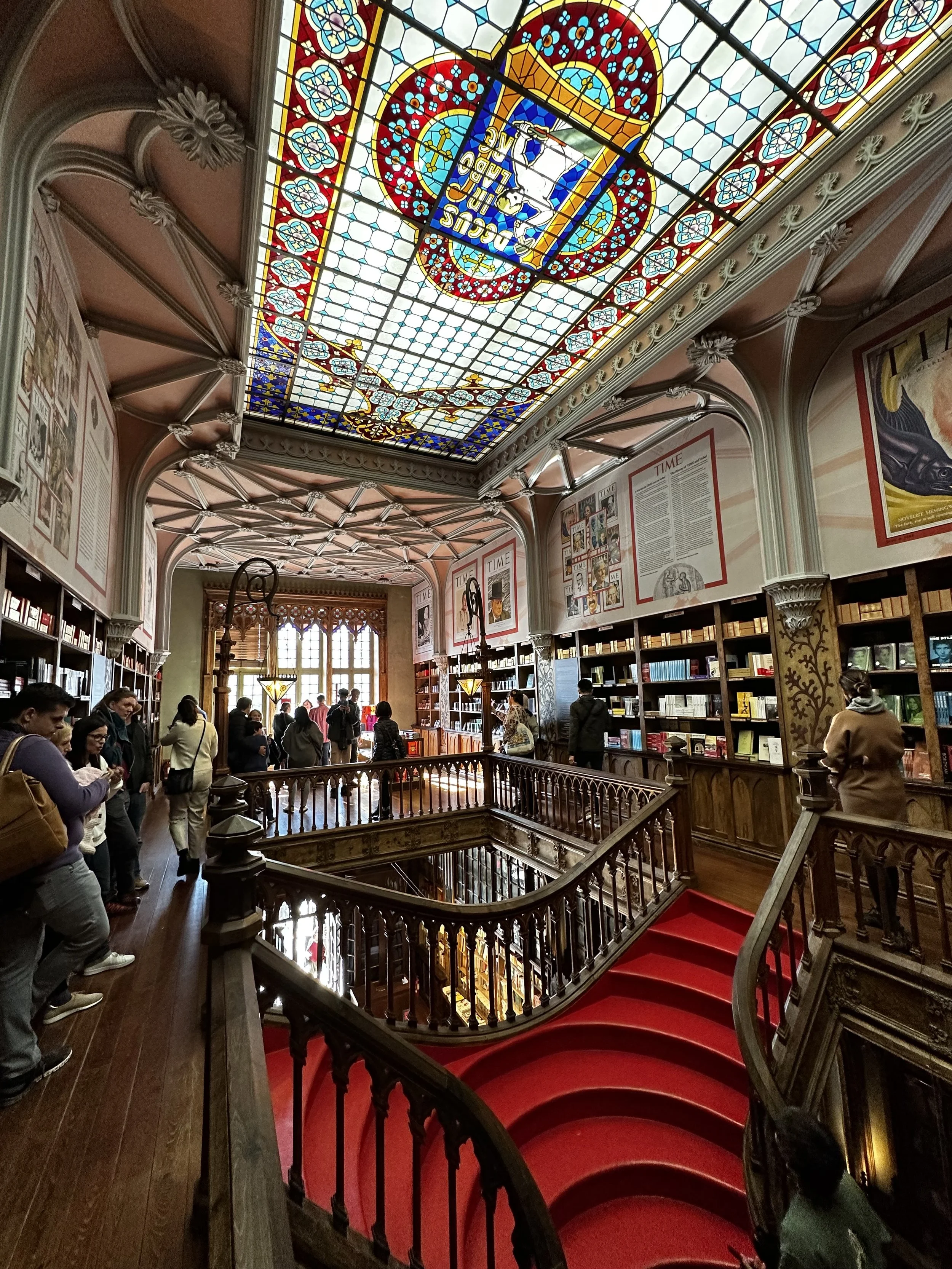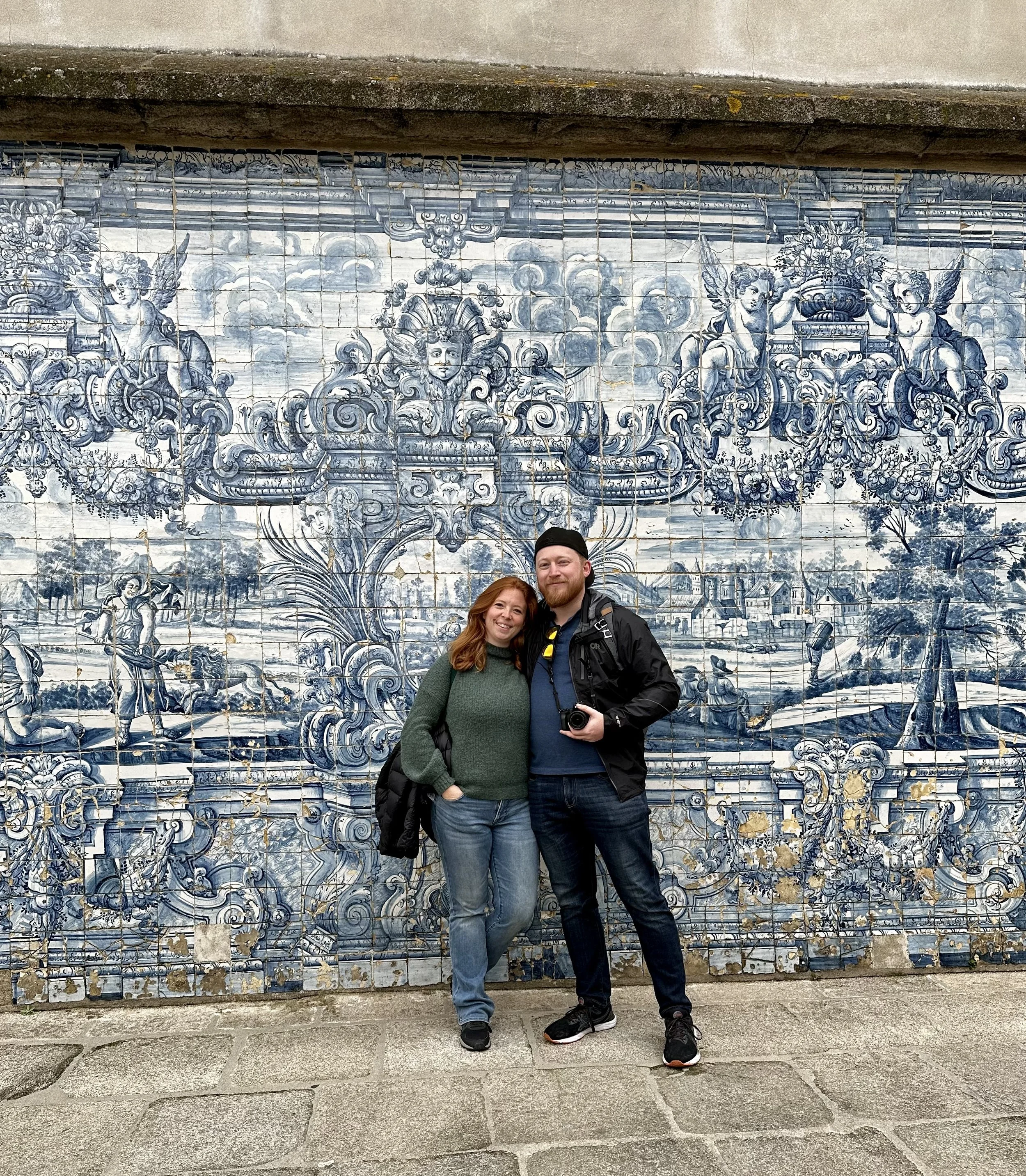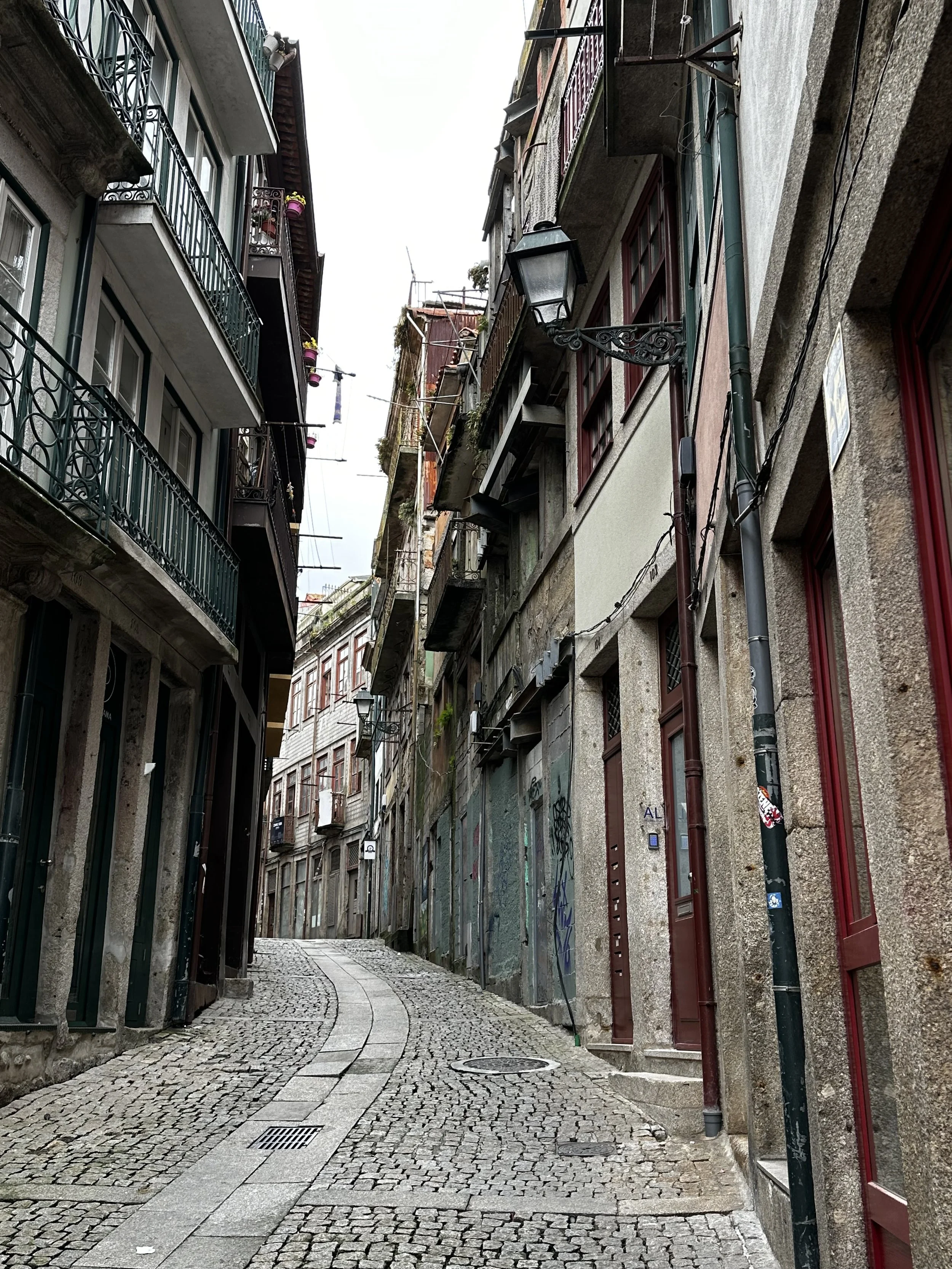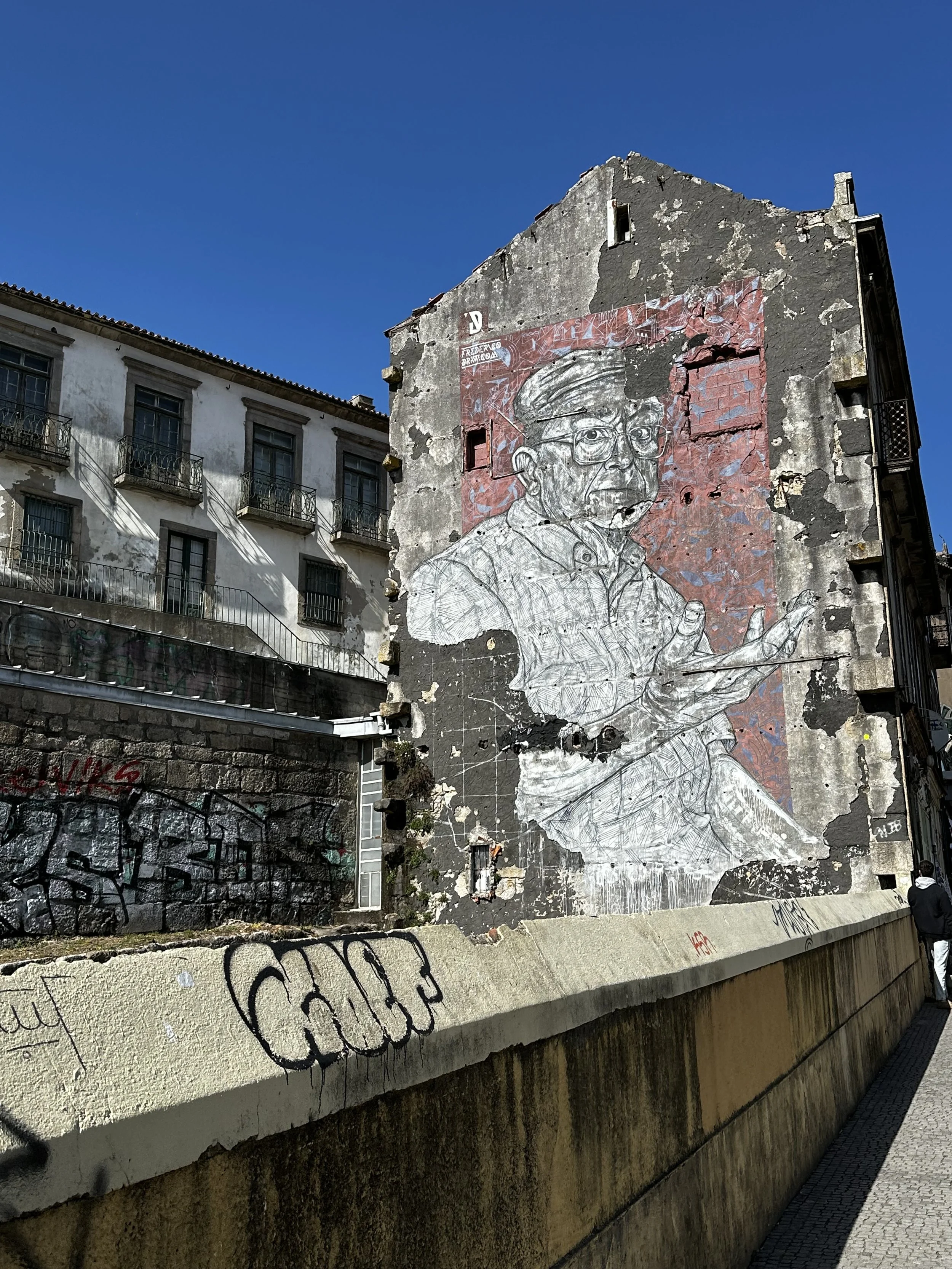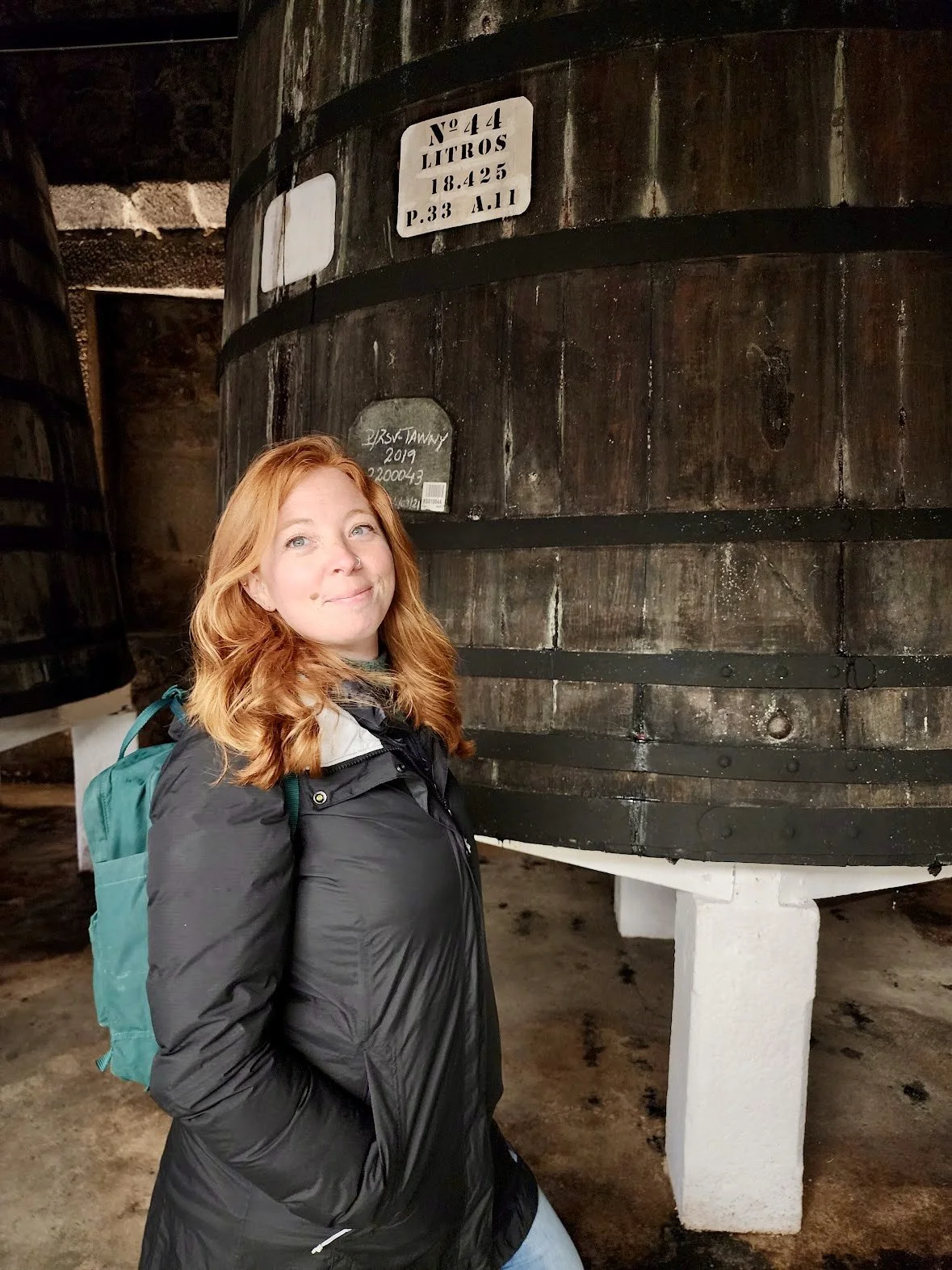The Hard Launch to Portugal
Today’s blog will be little different than my normal trip report. Today’s installment is not just about tourism, but also exploring the realities we faced of going Nomadic. Portugal was the very first country Erik and I based ourselves, spending two months living in Lisbon. It was also our second ever country we’d visited. Portugal witnessed our fear, excitement, culture shocks, pride, and at the end of it all… a reckoning with ourselves about the kind of compromises and considerations we needed to quickly learn in order to continue building the future we wanted.
Hard Launching our Nomad Era…
It’s January of 2023, Erik and I just wrapped up Christmas with our families. We are sitting on the floor under the fluorescent lights of O’hare Airport in Chicago looking at each other realizing oh shit… we really did just spend the last few months getting rid of single one of our belongings. We really did just say good bye to our families and friends… and we really are about to hop on this plane to Europe with just our suitcases and backpacks. The adrenaline was rushing through our bodies, making my heart beat a little too fast, my breath a little too difficult to catch. Erik & I clasped hands, squeezed our eyes shut… and jumped into the deep end.
Where to Start?
A question we get fairly regularly is “Why did you decide to travel full time?”. The long answer is long & personal so we’ll save that for our 1-on-1 deep chats. The short answer is we fantasized about it for years until one day we said, out loud and with intention, “if not now, when?”. We made the decision summer of 2022, we began consuming as much information about full time travel, immigration, visa regulations, and the best place to launch our new chapter. We made a list of To-Do’s we needed to accomplish in order to make this whole thing possible:
1) Pay off all debt & Save up “x” amount of money as our safety net
Just like breaking up with a toxic ex, it was extremely important for us to not have any loose ends when we left the states. We consulted with a financial advisor to create a plan to leave the country with zero debt & save up an amount of money that we decided would be sufficient to cover emergencies and/or to get us set up back in the states if we decided FT travel wasn’t for us. This number is going to differ for everyone and it’s crucial to be realistic with your situation and needs. Frankly, having a healthy financial situation is the foundation that makes everything possible. We made the decision to invest in a travel credit card with benefits like Global Entry & TSA precheck reimbursement, points that can be redeemed on flights/hotels, and (most importantly) travel insurance. Keep an eye out for a future blog that will go more in depth about travel credit cards and how we budget for FT travel!
2) Purge all belongings
I apologize in advance to all pack rats because this section is going to be painful for you. We knew we wanted our lives to be condensed down to one suitcase and one backpack each, everything else that wasn’t sentimental/irreplaceable had to go. I got to work selling electronics and furniture online (fb marketplace, OfferUp, and Craigslist), donated clothes, bedding, towels, canned goods to various nonprofit organizations, donated art supplies to day care centers, held yard sales, gave away tons of things to friends & coworkers, and trashed whatever needed to be trashed. Before we knew it we were sleeping on an air mattress in an empty apartment anxiously awaiting the last day of our lease.
3) Decide on destination
Another extremely subjective decision. We began our nomad era following a surge in popularity of digital nomads traveling to Portugal. At the time, Portugal had launched a very friendly visa towards digital nomads which has since been walked back following mass protests against rising housing costs due to Airbnbs inflating the market. We decided Portugal would be a soft landing point for us to begin this new life style. Because Portugal experiences so much tourism, it’s well set up for two inexperienced English speaking wide eyed Americans looking to enter the global stage. Many locals in Lisbon spoke English, the public transportation is exceptionally easy to navigate, it’s extremely safe, and there’s oodles to do.
4) Deal with the Paper Work
We read up on visa regulations and made our plans to bounce out of the Schengen Zone before our allotted 90 days were up. We made sure we had international health insurance. We got hard copies of important documents, and stored unnecessary, US specific, documents with our parents. We also got new a P.O. Box mailing address for all mailing necessities.
5) 4, 3, 2, 1… take off!
One eight-ish hour red eye flight later, we arrived to our apartment in Lisbon on zero sleep, very little food, and an abundance of anxiety. I vividly remember sitting on the couch that very first morning listening to the motorbikes, the conversations in Portuguese, the suitcases rolling over the cobblestoned walkway in front of our windows and thinking to myself “what did we just do?”. Up to this point, the unknown and I weren’t on super friendly terms. But embracing the fear and doing it anyways was just one of the many lessons I learned in those first months living in a foreign country.
Okay, we’re here… Now What?
To be honest, the first two weeks were kind of terrible. Online, I put on a smile but in reality I was extremely homesick. I was mourning a career I had made into my identity and I was mourning everyone I loved being an ocean away. We had taken this massive risk by completely changing our lives and we weren’t 100% sure it would all be worthwhile. The sadness & anxiety made it difficult to be excited to go exploring. After just two weeks in Lisbon, the negative emotions I was experiencing propelled me to cancel all of the plans we had made following our two month stint in Lisbon and I booked plane tickets home instead. In doing that, I had unknowingly issued a challenge to turn my fears into enthusiasm.
I’m here to say the emotional roller coaster we experience during big life changes is normal. It’s part of the process. While you should feel what you’re feeling, you should also remember not to let it dictate how you move forward. Acknowledge that The Big Change is super uncomfortable and then keep marching through the motions until one day you wake up and it’s not so difficult, in fact it’s exciting all of a sudden! One of the greatest lessons I’ve learned from two years of nomading is how to approach everything with an open mind and with grace for myself. I’m always better for it on the other side.
Portugal taught me that. And I’m so grateful I gave it the chance.
I stood on our tiny balcony in Alfama, listening to fado music as the sun set over the dreamiest neighborhood I had ever seen and committed myself to take advantage of our time in Portugal. I got online and started planning local site seeing, food tours, day trips to Sintra, a day of scuba diving, a weekend in Porto. I resolved to walk the streets of Lisbon every day & face my anxieties.
International travel is a tricky beast and choosing the right travel buddy is integral. Erik and I always maintain open & honest communication, giving each other space to process and grow. The first two months of full time travel was a whirlwind of change & challenges: externally & internally. Our relationship began to enter into a new era as well. We grew more confident and more comfortable with time. That plane ticket we had booked back home became what we now call a “Gear Swap Pit Stop” on our way to another international base.
The Best Experiences are on the Other Side of Fear
There is soooo much to experience while visiting Portugal and we barely scratched the surface. Let’s start with a little quick history lesson!
Historical Context:
Portugal has been a sovereign nation since 1128 and is probably most famous for its leading role in what imperialists call The Age of Discovery beginning in 1419. Thanks to innovations in sailing and a severe population drop from the bubonic plague, the Portuguese were among the first Europeans to explore new sea routes to South America, Africa, and Asia led by the likes of Henry the Navigator, Bartolomeu Dias, Vasco da Gama, and Pedro Alvarez Cabral. These new routes led to lucrative trade in slaves and spices, among other commodities, which fed the country’s growing global dominance. Fast forward to the 1580s, Spain takes control of Portugal which results in a dip in nearly every facet of Portuguese society. By 1688, sovereignty is regained just in time for the capital, Lisbon, to be utterly wrecked by the 1755 earthquake, whose aftermath can still be seen today as you walk the city. The Napoleonic Wars caused the Portuguese royal family to flee to Brazil in 1807 which triggered an interesting chain of events. Brazil was established as a kingdom upon the arrival of the royal family, which ultimately led to its independence. This caused a civil war between constitutionalists and monarchists for about six years. The Portuguese monarchy survived until 1910 when it replaced by a couple authoritarian regimes. Finally, democracy was established following the Carnation Revolution of 1974 which also allowed the last of Portugal’s African colonies to gain their own independence.
The Carnation Revolution plays a massive role in modern Portuguese identity and is worthwhile to read up on in order to better understand the society you’ll find yourself walking among. Learning about global history will always draw parallels to current events and this revolution against an authoritarian regime is no exception. Never forget: Knowledge is Power.
Portuguese Practicalities:
We stayed in the Alfama neighborhood which is Lisbon’s oldest standing neighborhood that hadn’t been destroyed by the 1755 earthquake. We chose this neighborhood purely for aesthetics if I’m being honest. The streets echo traditional fado music, the cobble stoned pedestrian paths are the only way to get around, there are plenty of cute bakeries, coffee shops, corner stores, and the wandering is perfection.
For traditional grocery shopping we mostly walked to Pingo Doçe or occasionally took the train to Corte Inglés; a massive grocery store with food stalls and just about anything you could want. There are also numerous corner stores called fruitarias. Timeout Market had a vast produce and fish market but we didn’t frequent the market as much as its food hall. We used various apps for food and grocery delivery like: Uber Eats, Wolt, Glovo, and Bolt.
All this being said, living in old town is not all it’s cracked up to be. While the views are magical, loads of other qualities are not. For example: the four story walk up had a steep stone stairwell as wide as your shoulders, we hated our barely working (TEENY TINY) shower, the walk-out trash service would literally drag the metal trash bins along the ground to their truck at midnight every night, the walls are very thin, and finally… if there’s an emergency the ambulance will not drive to you, ask how we know.
Story Time!
In our second to last week in Lisbon I came down with a hideously awful stomach flu. I couldn’t even keep water down. On the third night of only getting out of bed to stumble into the bathroom, Erik ordered a delivery of Gatorade & crackers for me and food for himself. The order arrives, Erik climbs down our hundreds of years old stone stairs to the ground floor. He slips on the last flight and tumbles down a few stairs. The absolute champion retrieves our order and crawls back up to me with some pretty severe back pain and bruises already blooming. We make the decision to call an ambulance who can’t enter our neighborhood so Erik is carried between the paramedics, goes to a hospital (without me because I am so sick I can barely walk) where he doesn’t understand the language being spoken over the waiting room speakers so a very nice stranger helps him. Finally, Erik gets his X-rays, pain meds, and a chiropractor appointment made. The poor guy now has to taxi back to our apartment. At this point it’s nearly 4am. The taxi driver realizes that Erik can barely hobble his way out of the car and sweetly walks with Erik all the way to our door. The whole night was a lesson in handling emergencies, the kindness of strangers, and picking your accommodations wisely. Not to mention how completely botched the American health care system is. The ambulance ride, X-rays, appointment, and medications cost us a whopping €114 out of pocket.
Getting Around
Lisbon is an extremely hilly place so there are A LOT of stairs. Prepare yourself with a nice pair of walking shoes first and foremost.
Google maps works mostly fine for walking and public transportation. It really only runs into problems when you get into the Alfama neighborhood where the walking paths become a slightly more complicated.
Lisbon is very pedestrian friendly; groceries, restaurants, cafes, and sightseeing is most often within a walkable distance from wherever you may be staying but there are lots of affordable and convenient options for public transportation.
The metro runs throughout most of the city and connects to the airport which is so nice. It arrives to most stations every 3-5 minutes.
Buses were also widely available, although they can get quite crowded with tourists and took a bit longer due to traffic.
The city is known for the historic trolley’s that run throughout the touristic center. We only rode these once because they’re more for an experience and less for efficiently getting around the city.
The commuter train system is what we took for our day trips to Sintra.
The Alfa Pendular is the hi-speed train system that will take you throughout Portugal and is what we took to Porto. These trains are super comfortable and are responsible for our love of train trips.
Tuktuks, taxis, and uber are also available. Renting a car is also an option but driving in cities that were built before cars were invented is not my idea of fun.
All modes of public transportation are accessible with a reloadable card you can purchase at train station kiosks.
Must See in Lisboa!
Praça do Comércio: a gorgeous plaza that is emblematic of Lisbon. Originally built as a port for trade coming in on the Tagus River, it is now a lively square with restaurants and shops. Tourists and locals alike gather here to socialize, drink, and listen to one of the cities many talented buskers play while the sun goes down behind the Ponte 25 de Abril suspension bridge.
Belem Tower / Monument to the Discoveries / Jeronimos Monestary: these three sites are all within close walking distance of another. The Jeronimos Monestary is exquisite and houses the final resting place of Vasco da Gama
Sao Jorge Castle: occupation of this castle dates all the way back to the 8th century BC. There’s not much left to see on the inside but the structure is impressive and the hill it’s perched on offers stunning views over the city.
Se de Lisboa: built in 1147, it’s one of the few structures to survive Lisbon’s many earthquakes. The Se also saw at least one defenestration!
Carmo Convent: Partially destroyed during the 1755 earthquake, the remnants of structure is incredible to take in from the outside and the inside. It’s like a piece of history erupts from the modern city.
Monsteiro de São Vicente de Flora / National Pantheon: We took an entire afternoon wandering through the halls of the Monastery. I’ll always hold a fondness for it because it was the first time I heard an organ fill a cathedral. The acoustics are unreal.
Botanical Garden of Lisboa: as if you hadn’t been walking your little booty off, go walk among the flowers!
The Tile Museum: Portugal is famous for it’s unique azulejo tiles which adorn building faces across the country.
Pink Street: for the ‘gram & nightlife.
Oceanario de Lisboa- one of the only aquariums to house an exhibit created by Takashi Amano (iykyk)!
Food Break!
To be perfectly honest, I don’t think we gave Portuguese food a fair shot at impressing us. We ate a ton of pastries (we probably the famous Portuguese pastel de nata at least three times weekly), Italian, Greek, poke, and sushi while we were there so take our recommendations with a grain of salt and follow your own nose to tastebud happiness.
There are coffee kiosks scattered throughout Lisbon and they are the best. Specifically the one on Portas de Sol. Order a cappuccino and a pastel de nata and enjoy.
Quasi Cafe, Copenhagen Coffee Lab, and Dear Breakfast all had amazing coffee & breakfasts
Catedrais Tapas Bar
Zero Zero and Pizzeria Romania
LX Factory and Timeout Market were food halls that had a diverse selection of food
Come Prima for exquisite italian
Aruki for delicious poke bowls
Tours:
Erik and I booked three tours in Lisbon: a cooking class where we learned how to make the famous Pastel de Nata and made a couple new friends, a sunset sail on the Tagus River for our first international Valentine’s Day, and a (very chilly) 2-tank dive in the Sesimbra Marine Reserve. All of these tours were exceptional and I can’t recommend them enough.
Sintra
Just an hour train ride from Lisbon, Sintra is an absolute MUST. Picture walking through a real life fairytale kingdom with castles, flowers blooming every where, huge cork trees covered in ivy towering overhead, and horse drawn carriages… It is truly magical.
Get yourself to the Lisboa Rossio station, buy a ticket for the train to Sintra either at the kiosks or at the ticketing desk with a human whom you can ask any questions you may have. Then hop on your train, put a good album on your earbuds for the next hour (I was hooked on Remi Wolf’s album “Juno” around this time and still kind am tbh). Before you know it, you’ve arrived! Uber and Bolt are available for quick rides to the attractions you’re interested in but Erik and I got in our steps by walking to everything. We arrived on the first available train from Lisbon and had reserved our tickets to attractions ahead of time which I heavily recommend!
Must See in Sintra!
Quinta de Reguleira & Gardens: you can easily spend half a day exploring the grounds and the palaces. Soooo pretty!
Moorish Castle: seeing the castle walls perched up on the hillside from a distance is not nearly as good as walking on the walls and looking down over Sintra. Bonus if you have a tour guide kitty like we did.
Monserrate Palace: the architecture and history of this palace is just breathtaking. Highly recommend building in some time to rest on it’s lush greens under a cork tree.
National Palace: this was our favorite palace to tour through. The rooms were so ornate and getting to wander through the kitchens is a rare privilege you don’t get in many other palaces across the world.
Peña Palace: while Peña palace is incredible in size, architecture, and history it was our least favorite attraction. Hot take, I know. It was an absolute cattle call experience. We bought our ticket ahead of time and were among the first groups to enter however we still had to stand in a huge line for quite a while and the line didn’t stop at the entrance. We basically filed through the entire castle shoulder to shoulder with hundreds of other tourists. Not super enjoyable.
Porto
We woke up at the butt crack of dawn to take the earliest Alfa Pendular to Porto which took about three hours or so. Thank god the train stations always have cafes. We decided to stay for just a weekend which was far too short! Porto oozes charm and is extremely fun to wander around. We stayed fairly centralized at Apartamentos The Arc Carris which was comfortable, spacious, and within walking distance to the train station and all attractions.
Porto is in Portugal’s Douro valley wine region and is famous for making, you guessed it, Port Wine! Erik & I hadn’t ever had the pleasure of tasting port wine until we got into Porto and to say the experience changed us forever is an understatement. If we could do it all again, we would definitely add more time to plan a vineyard tour in the Douro Valley. We did go on a Port Wine Tasting tour and learned all about the making of Port (the smell of port wine aging in bourbon barrels will forever live rent free in my mind) and the differences between various types of Port. After our tastings, we grabbed dinner with a Danish couple we met during the tour and had one of our first real conversations about how our cultures differed in education, politics, voting structures, as well as family values and more. The drinks & conversation were flowing when one of us looks around and says “are those dicks all over the ceiling?” Sure enough, we were having an incredibly formative travel experience, exchanging our cultures and stories under a ceiling decorated with all sorts of phallic items of all shapes, sizes and colors. Symbolic, really.
We had a the best breakfast of our entire two month Portuguese stint at 7g Roasters. We split a four course coffee tasting with explanations, crème brûlée French toast for me and chicken n waffles for Erik. Talk about an excellent way to cure a hangover!
Of course, no trip to Porto is complete without a stop in to Cafe Majestic! This historical cafe has been around since 1922 and is famous for the Parisian art nouveau decor and Portugal’s signature sandwich, the franceschina. It might not look like much but take my word for it: YUM.
Must See in Porto!
Sao Bento Train Station: luckily this was the train station we arrived at. It’s historic and decorated in stunning azulejo tiles. Take a moment to enjoy!
Porto Cathedral / Church of St. Ildefonso / Ingreja do Carmo / Monsteiro da Serra do Pilar / Ingreja Torre dos Clerigos: all stunning churches.
Palacio do Bolsa: this palace was closed the whole weekend we were there so we weren’t able to check it. Guess it’s another reason to return!
Dom Luis 1 Bridge: grab a bottle of port and enjoy the sunset over Porto.
Jardins do Palacio de Cristal: another thing we didn’t get the chance to do but looks amazing!
Livraria Lello: known as one of the most beautiful book shops in the world and popularized by social media. Much like Peña Palace in Sintra, its a gorgeous place that has been ruined by over tourism.
Eat, drink, wander, vibe. The entire city is a UNESCO World Heritage Site for a reason.
Trust the Process
All in all, our time in Portugal was a crash course in getting familiar with the unfamiliar, comfortable with being uncomfortable, and just rolling with it. We made some rookie mistakes and maybe didn’t utilize our time in the absolute best way but we learned and experienced so much in those first two months.
Portugal is a stunning country with deep historical routes, a rich culture, and an abundance of things to do & see & eat. Around every corner is a touch of old world magic waiting for the brave to discover it. So… what are you waiting for?!
